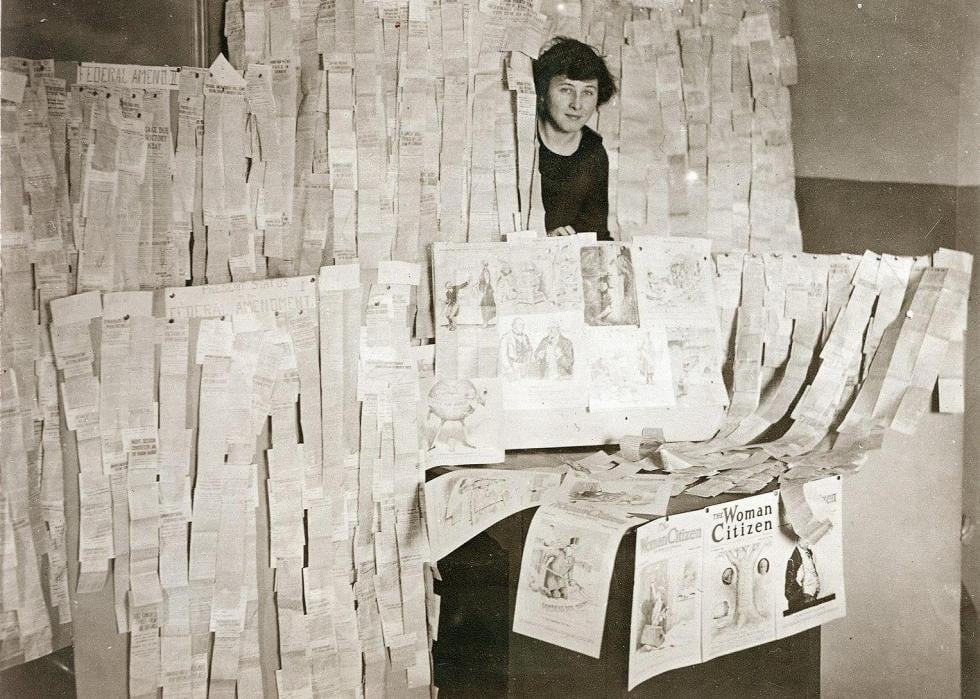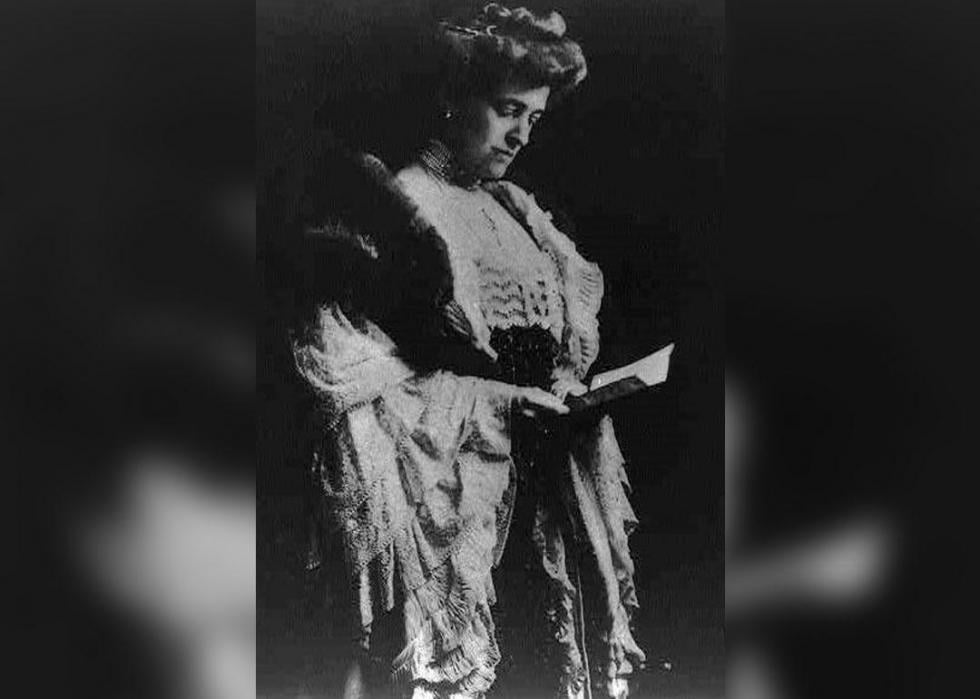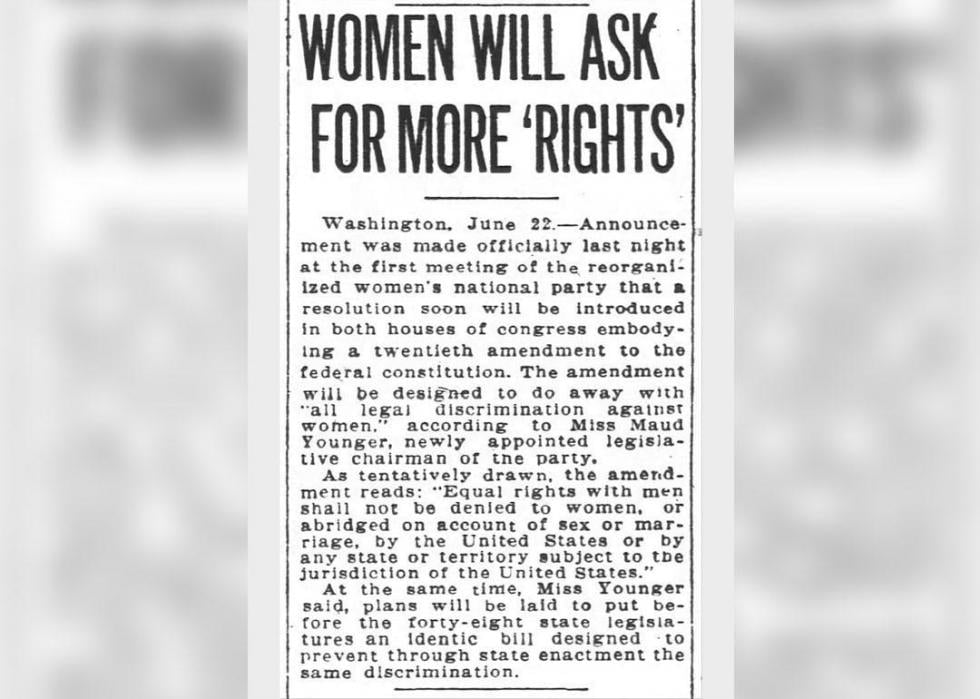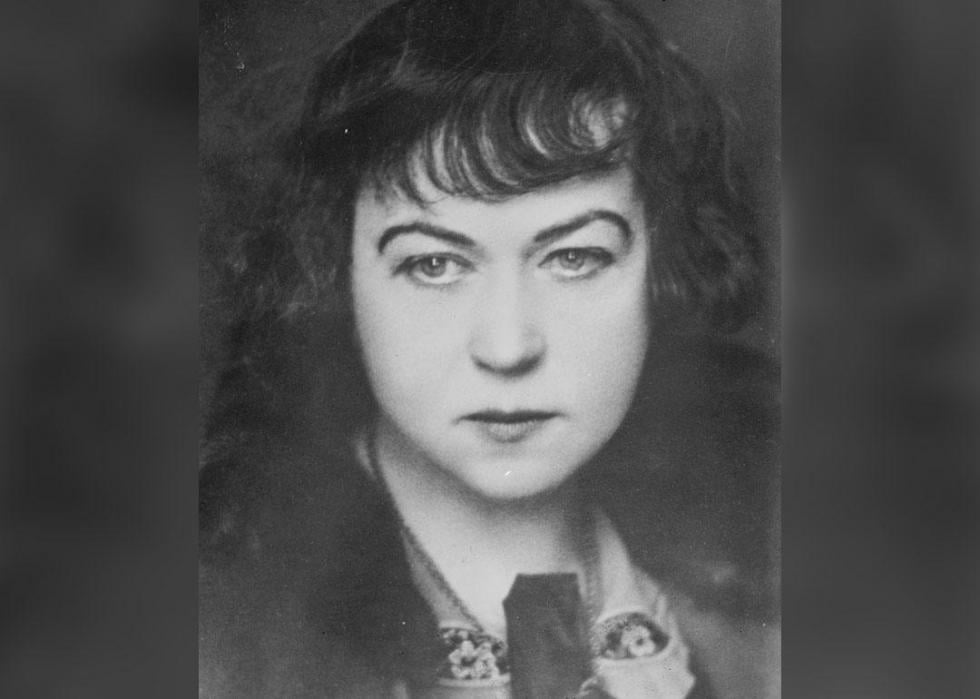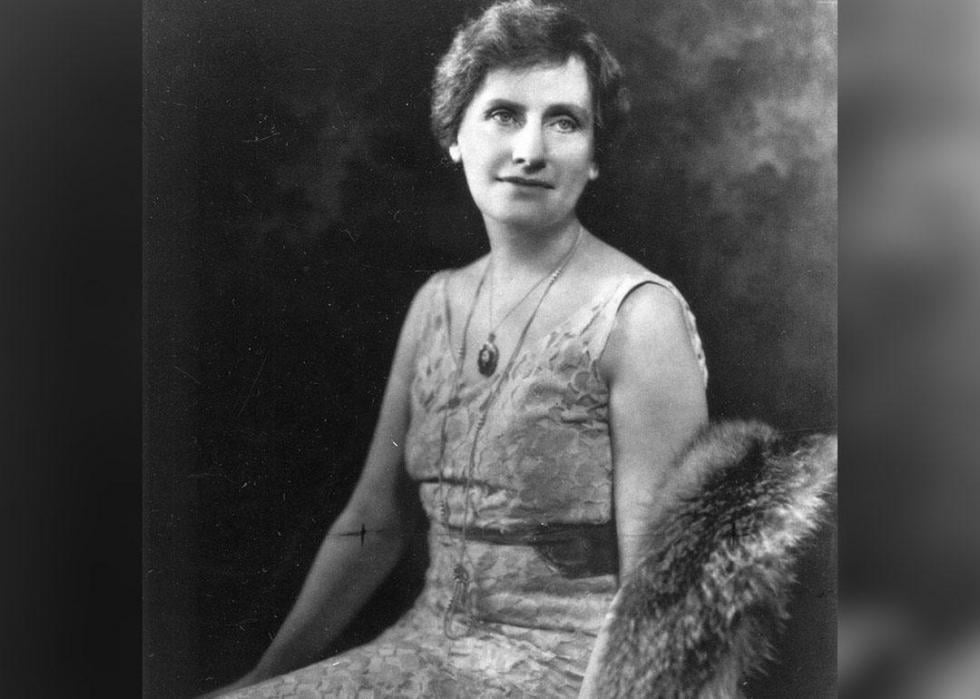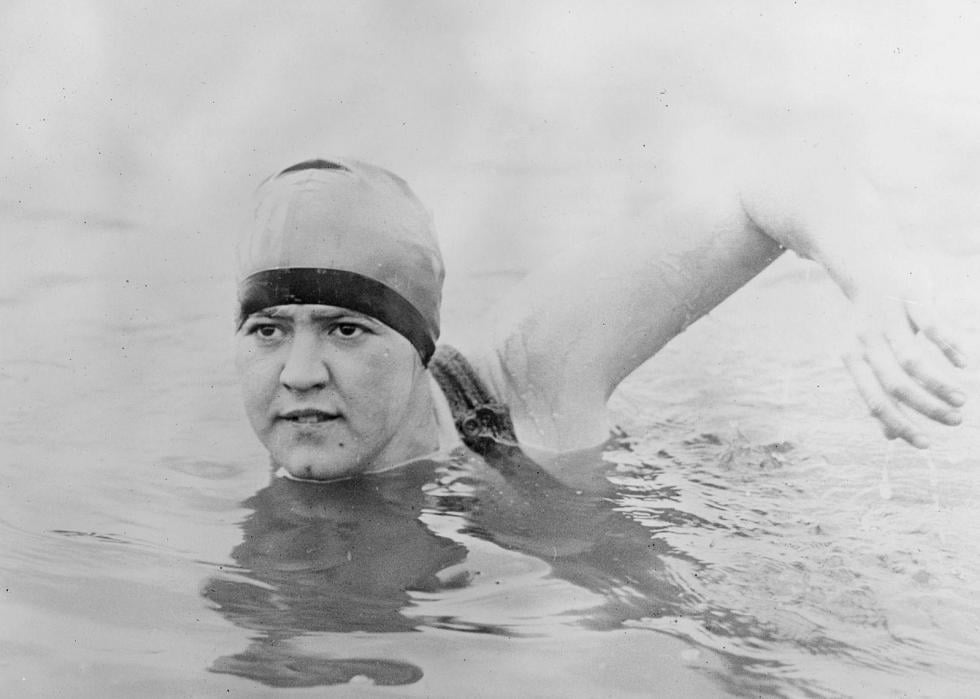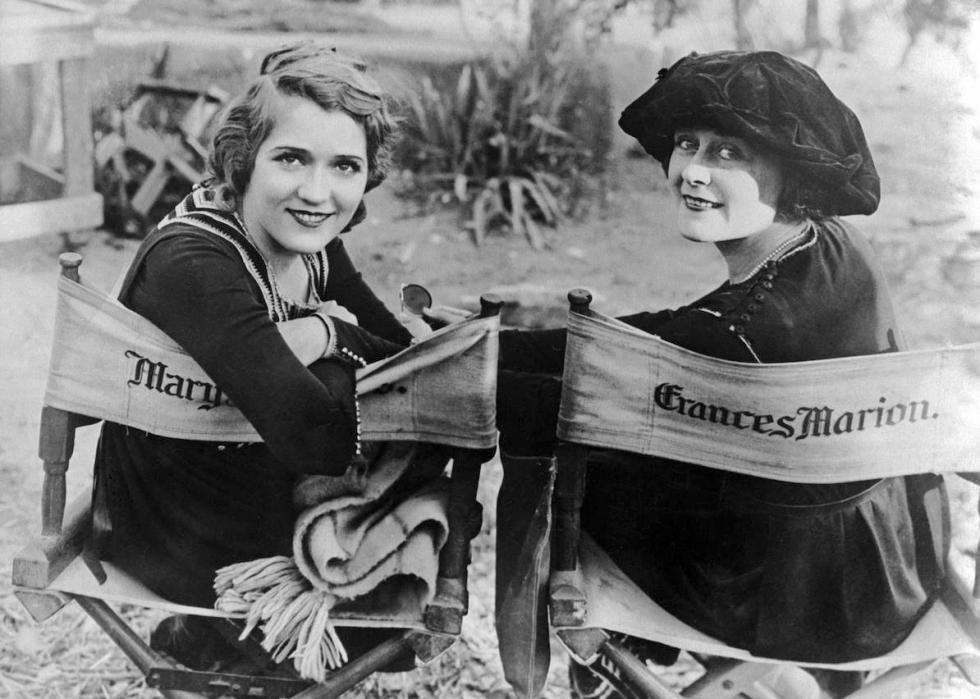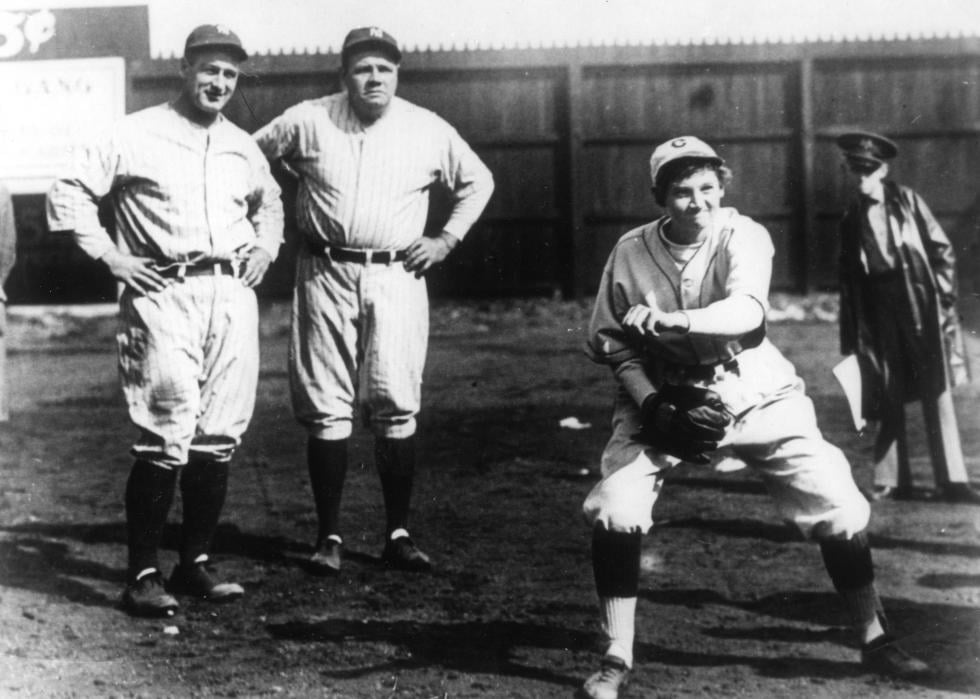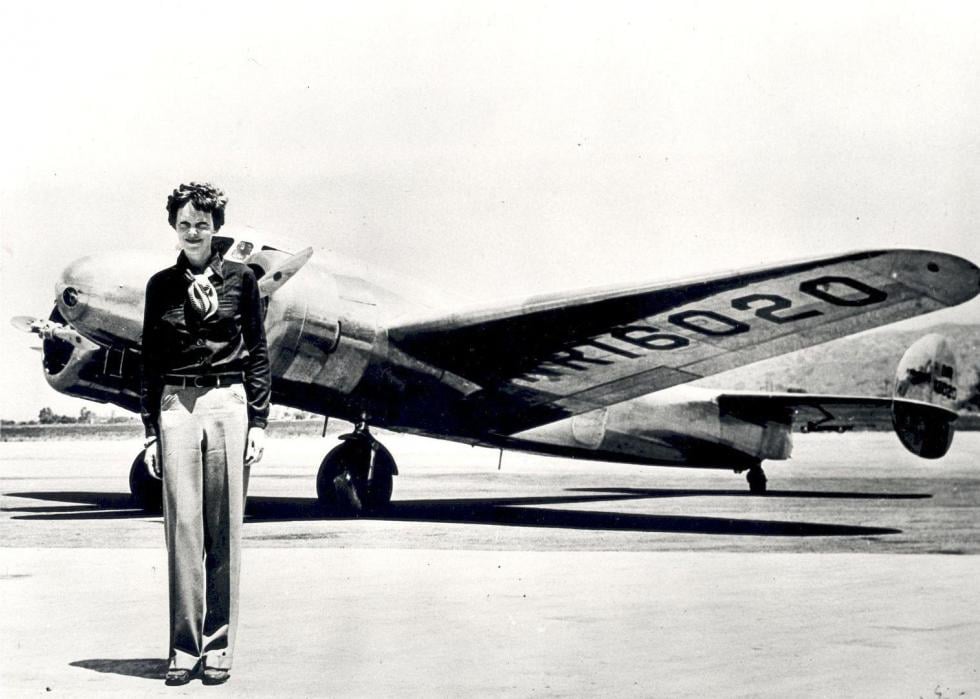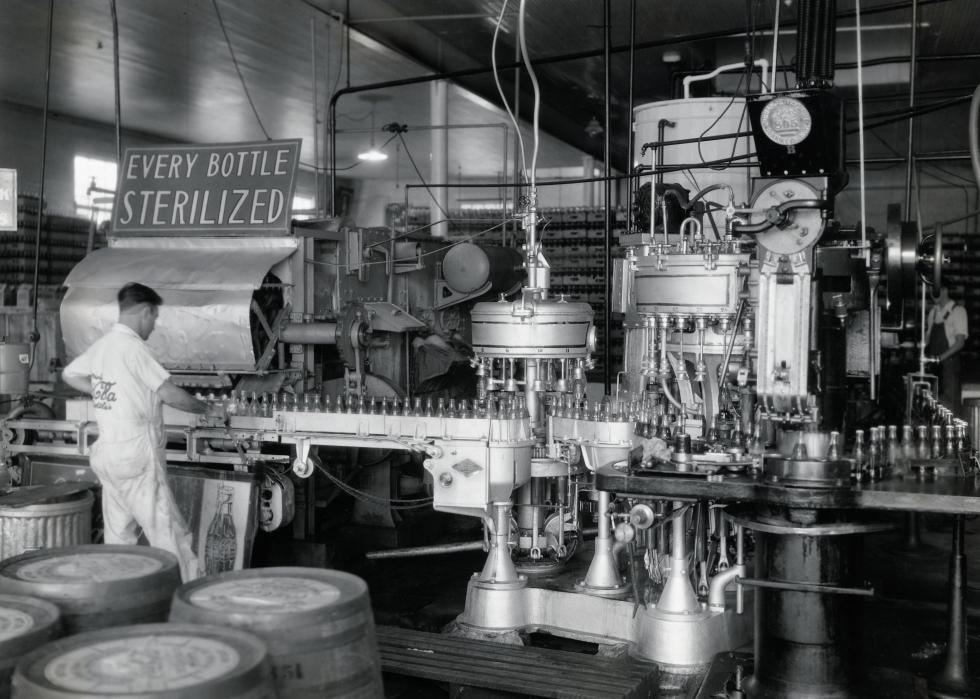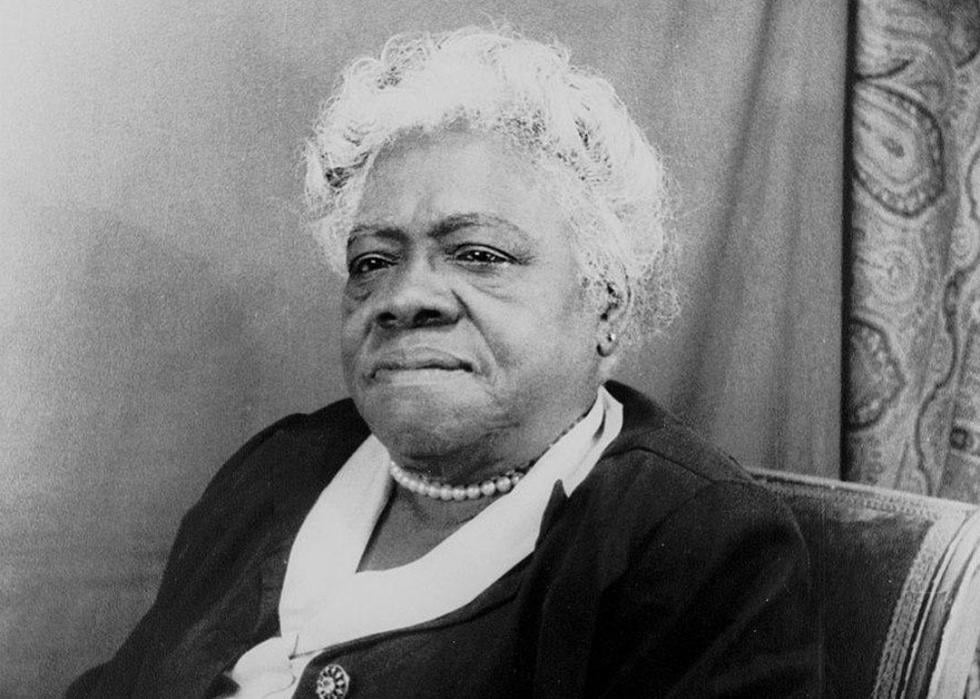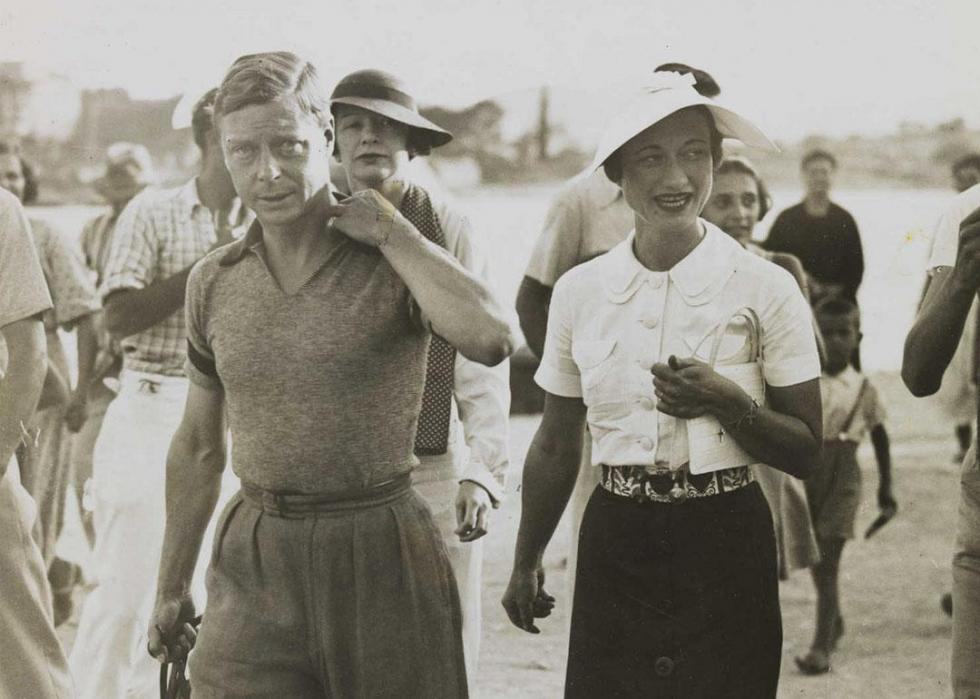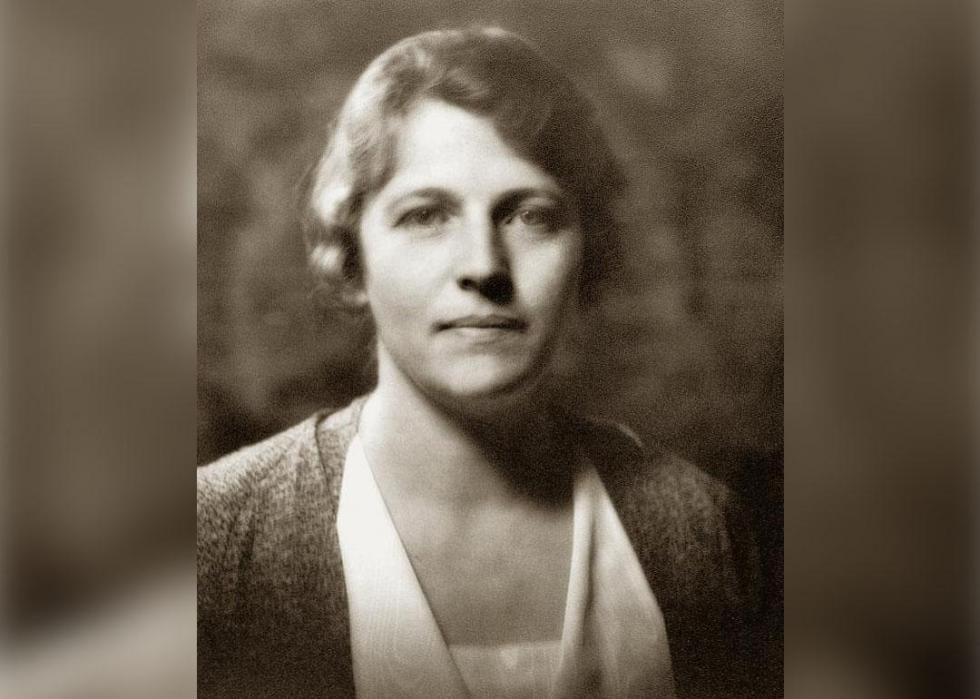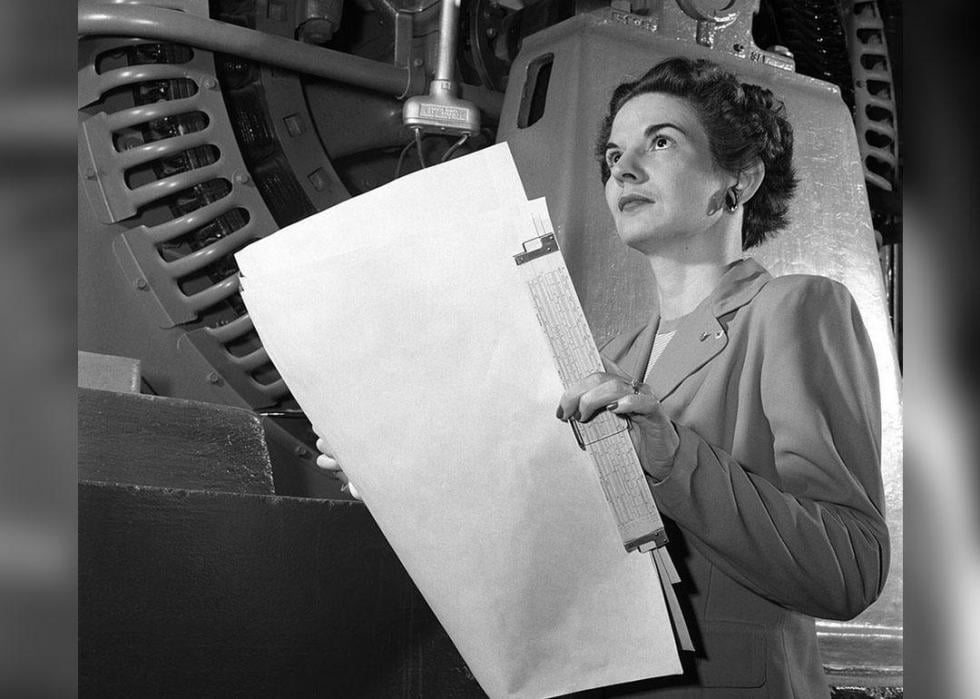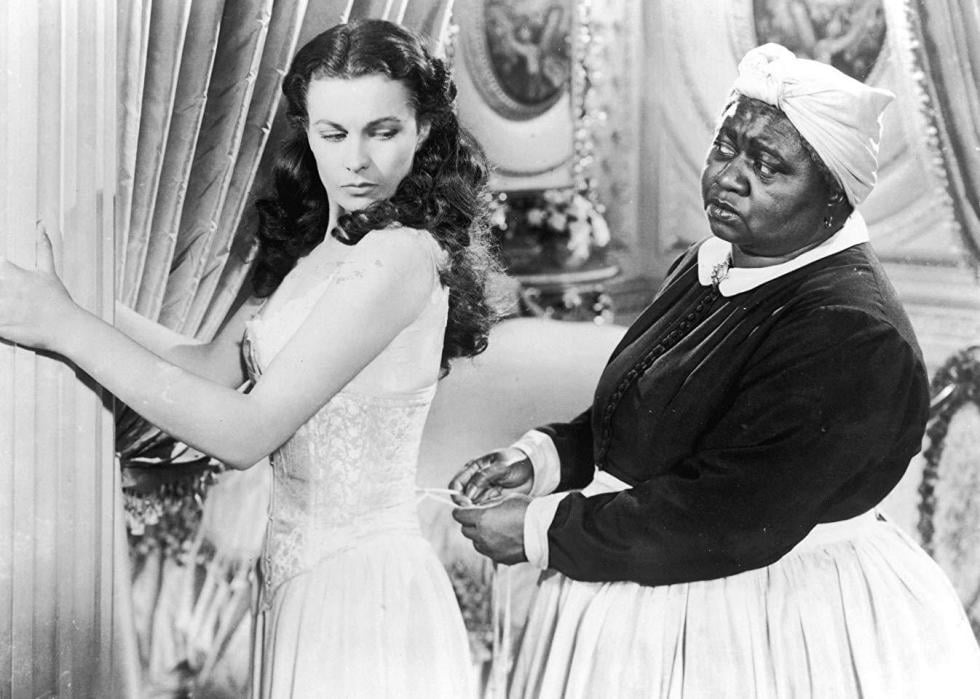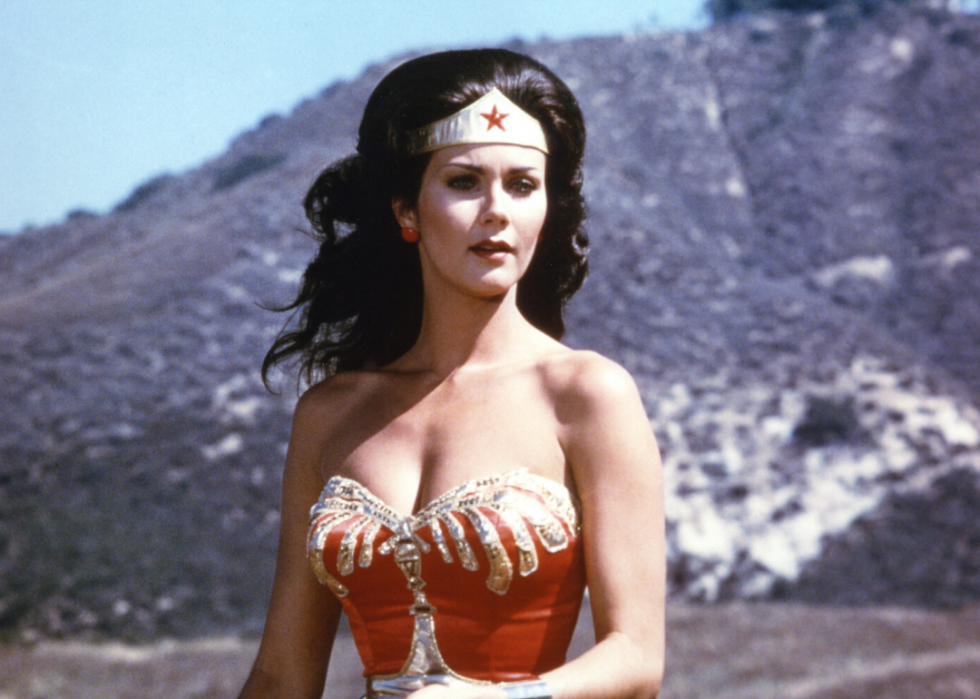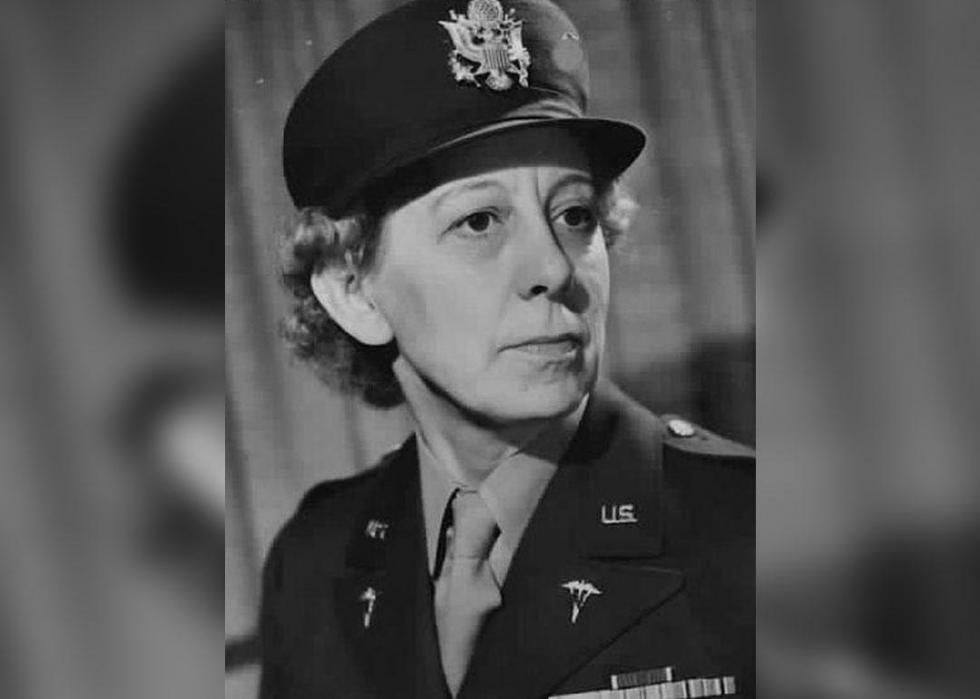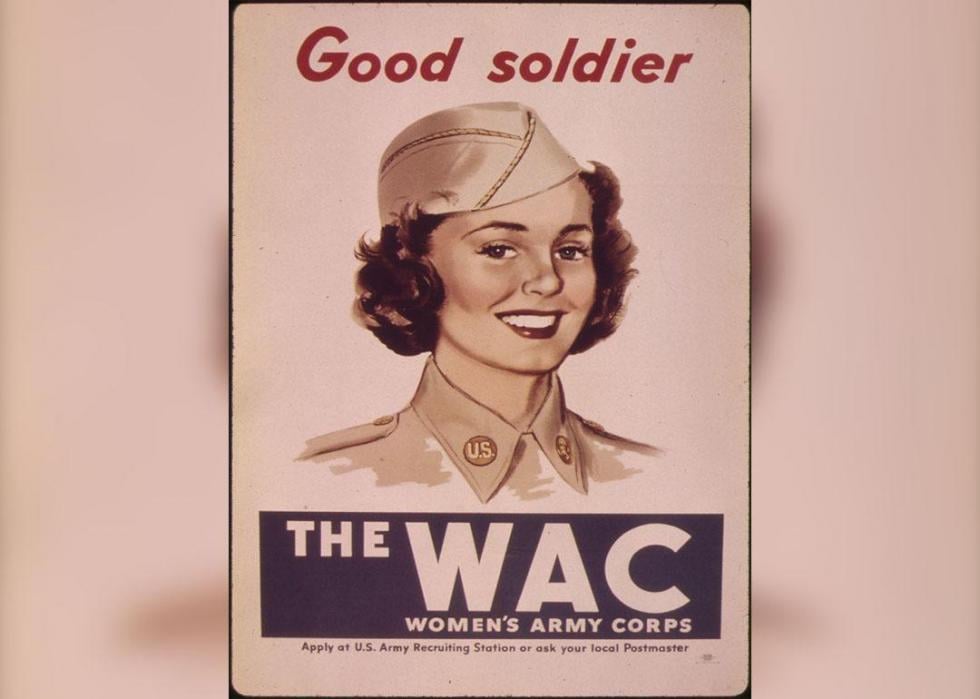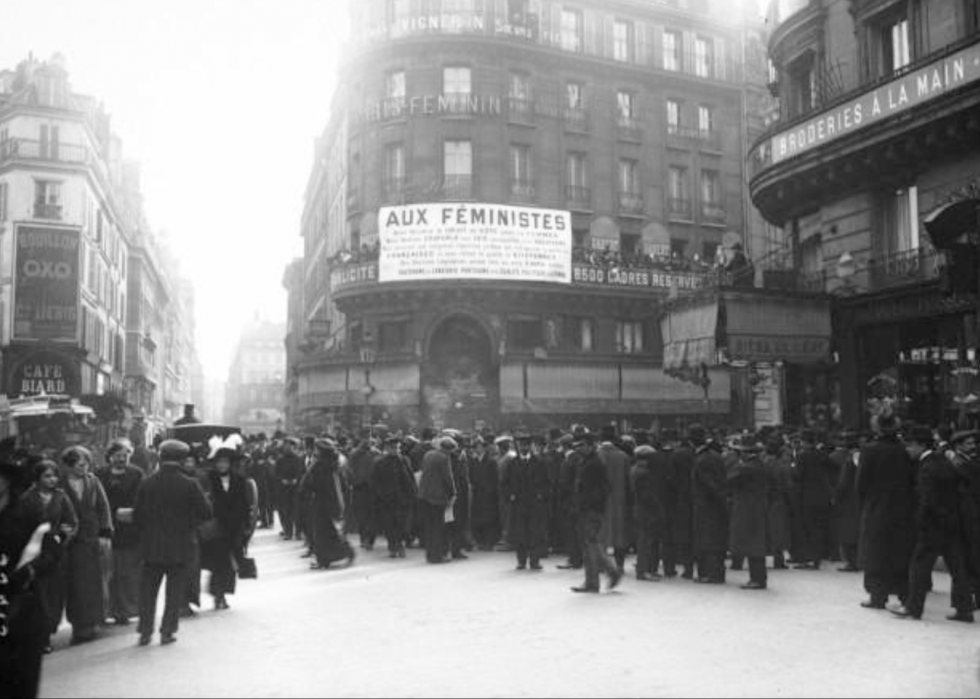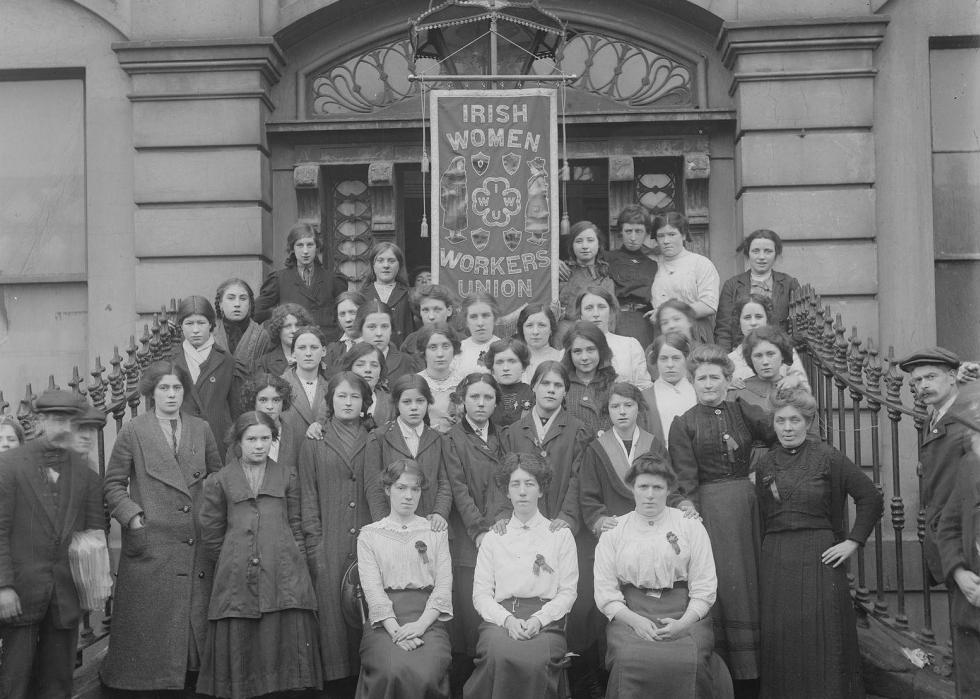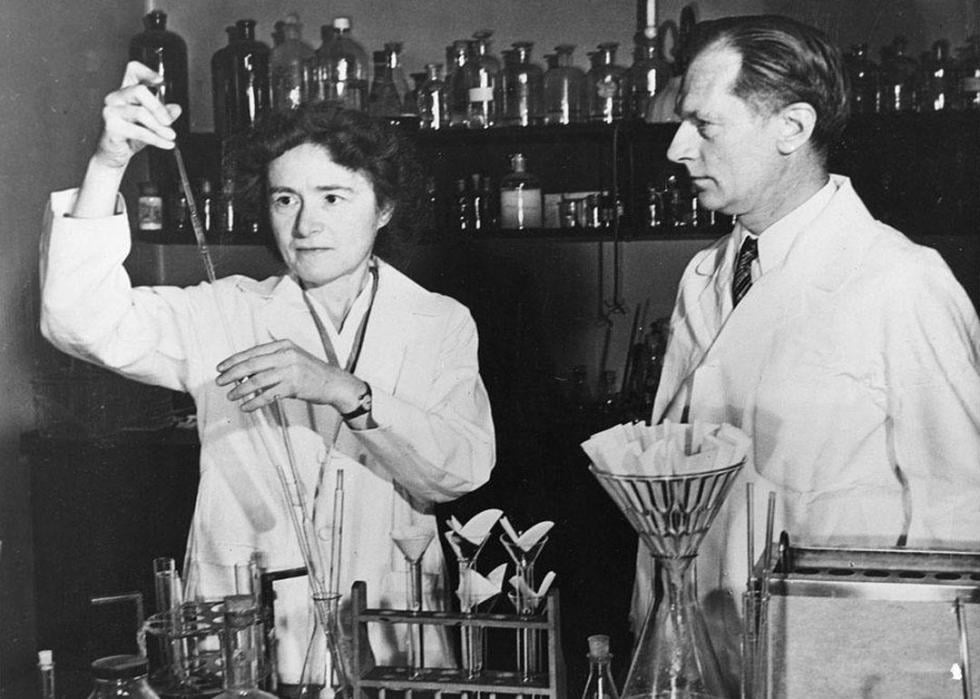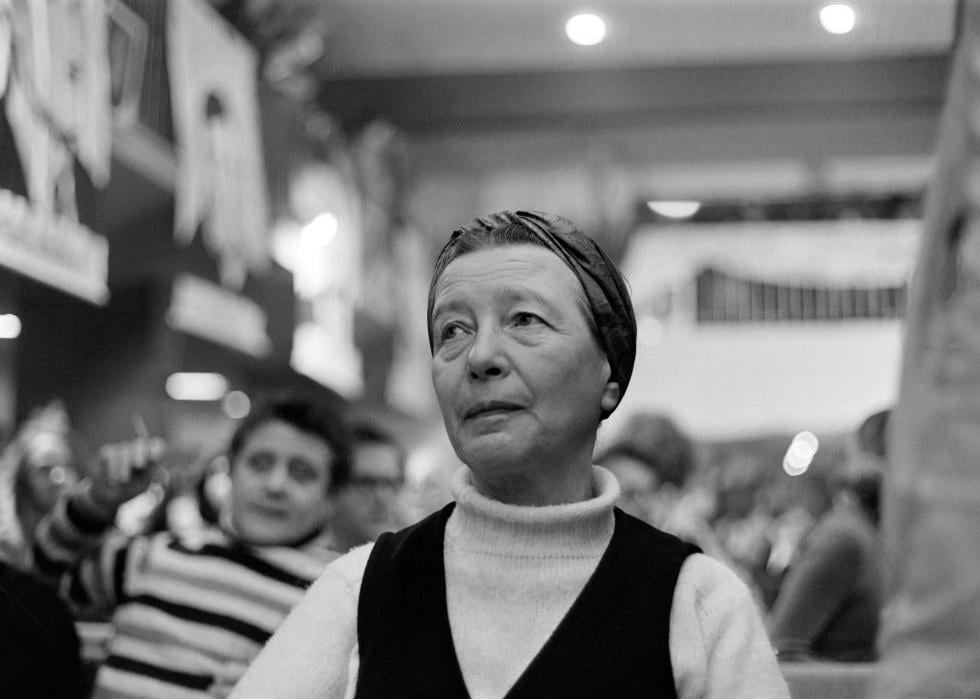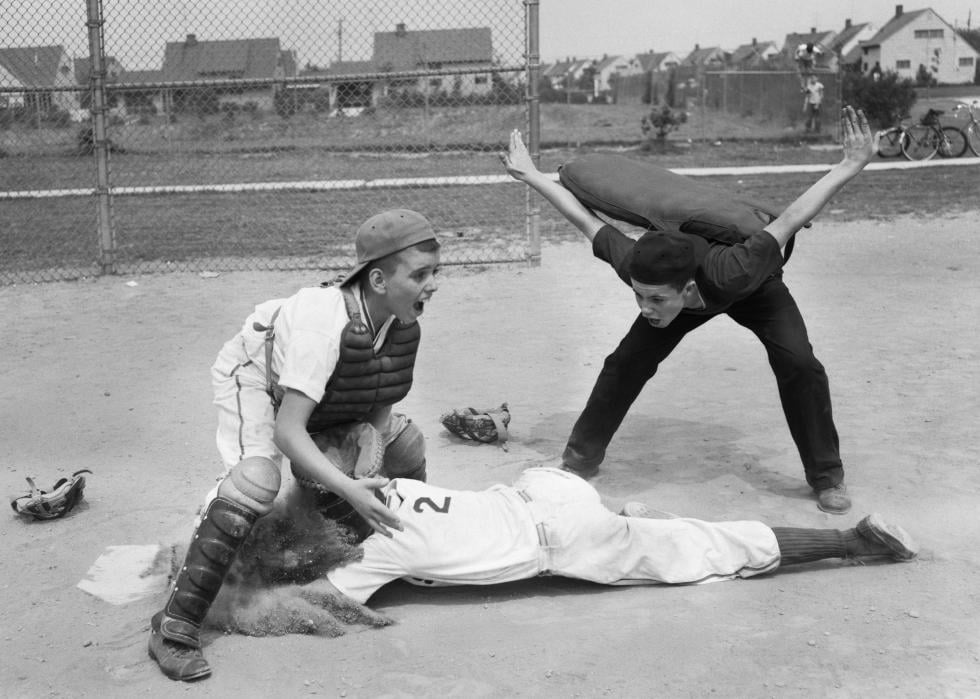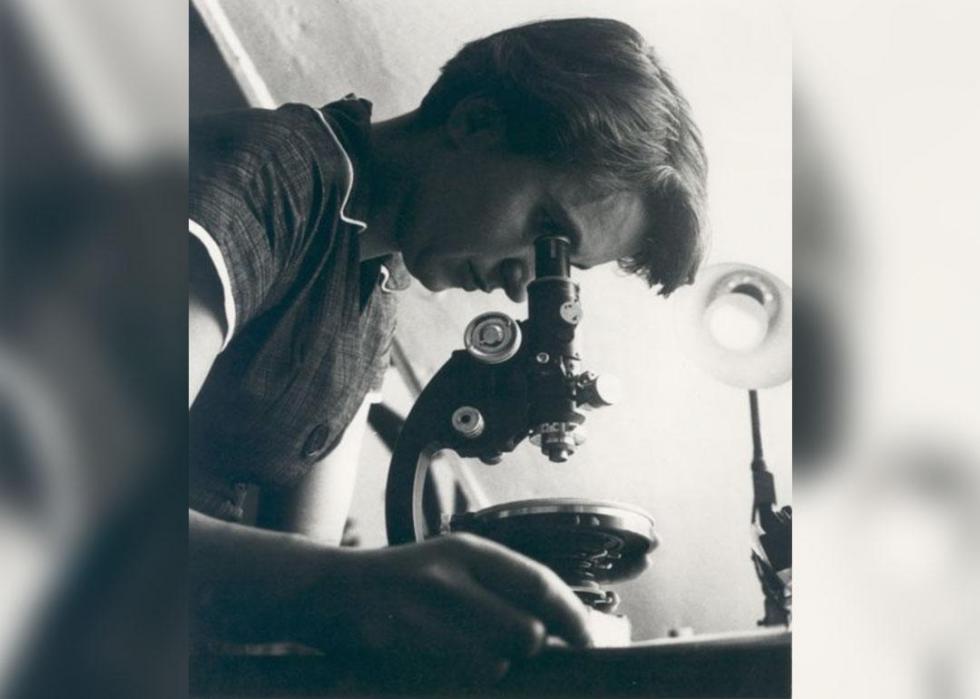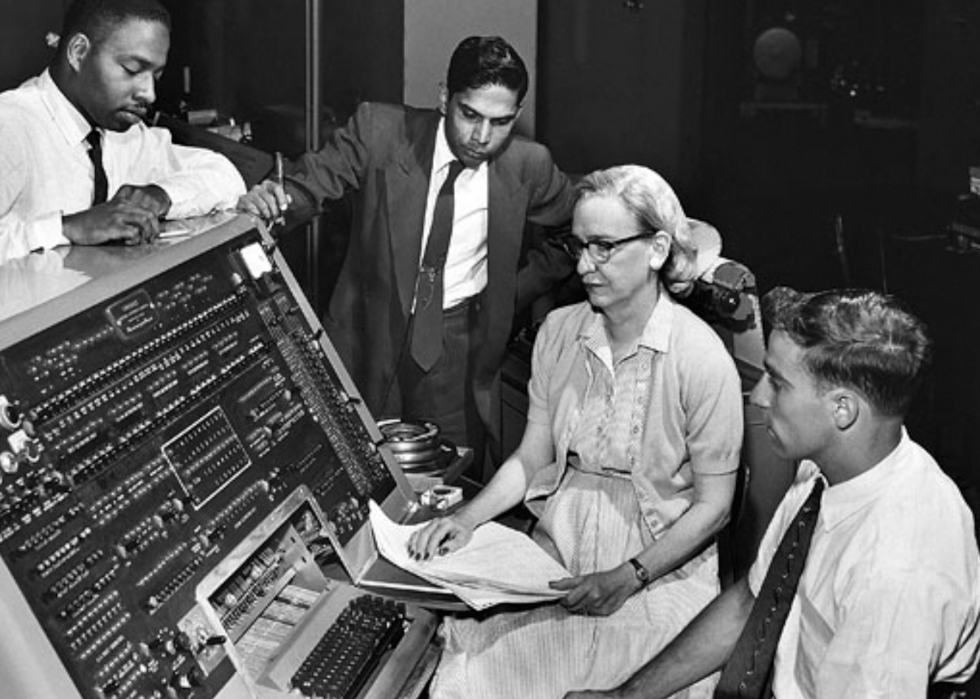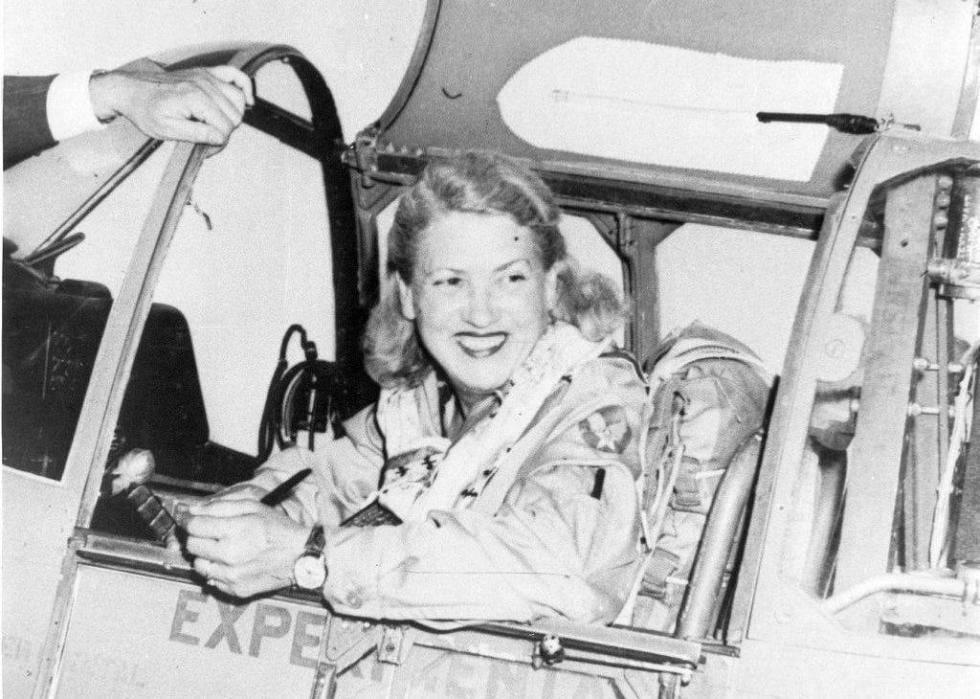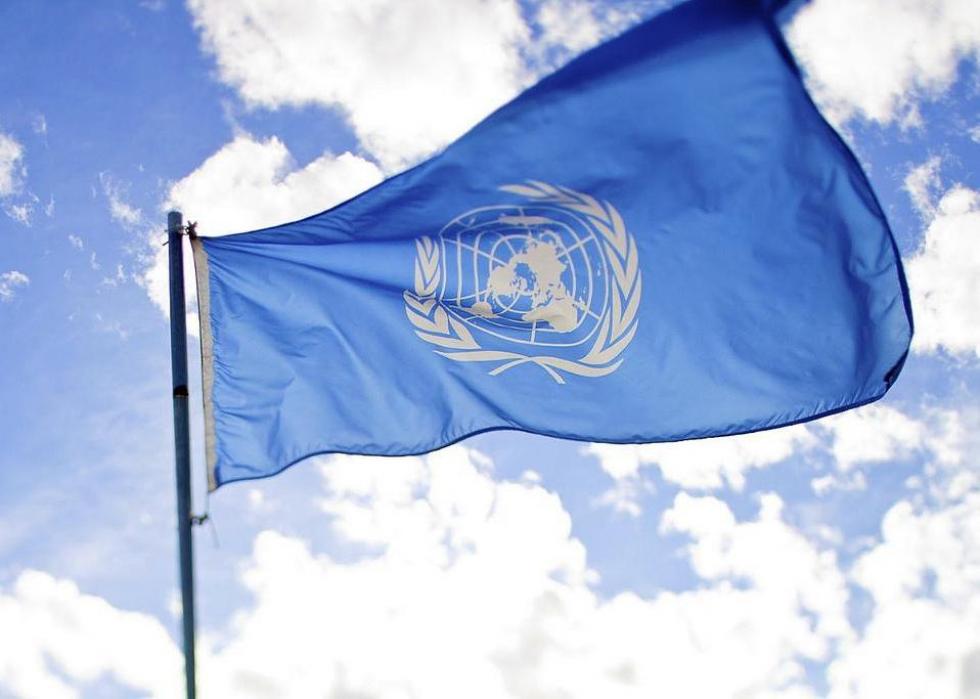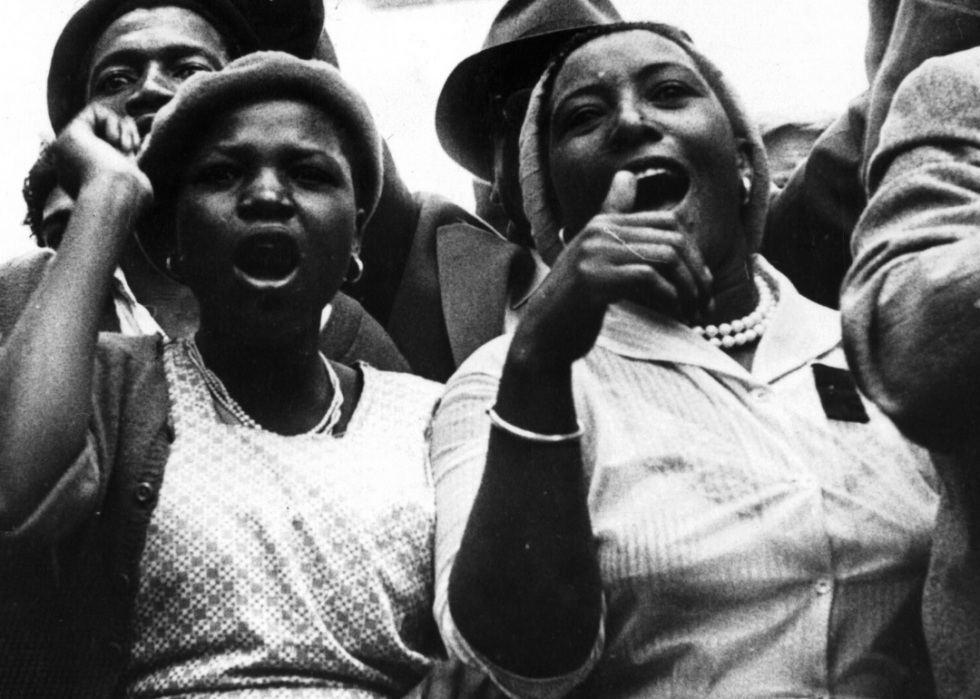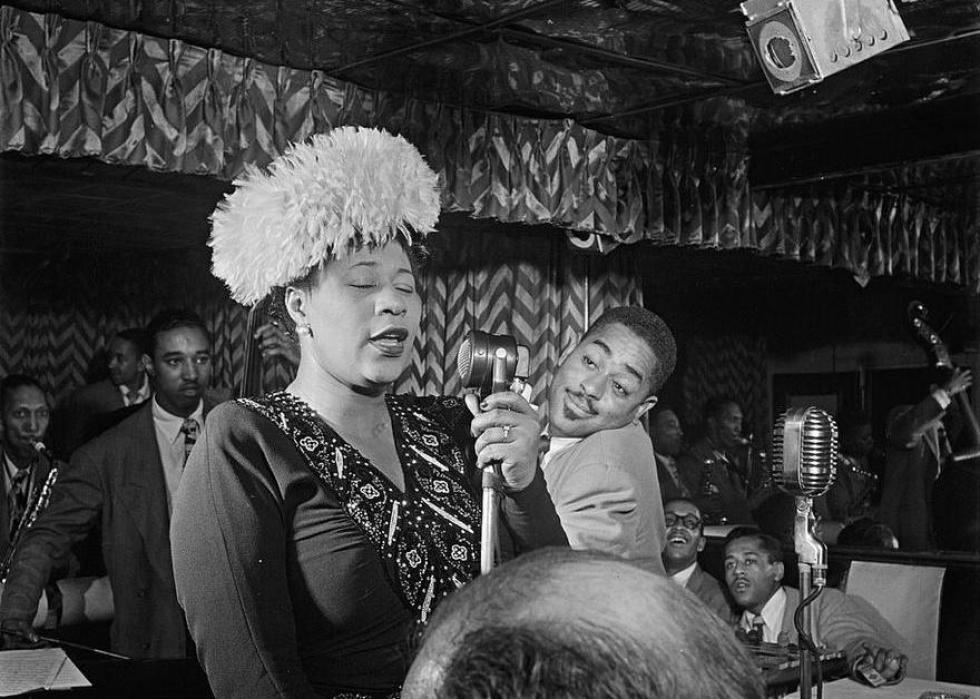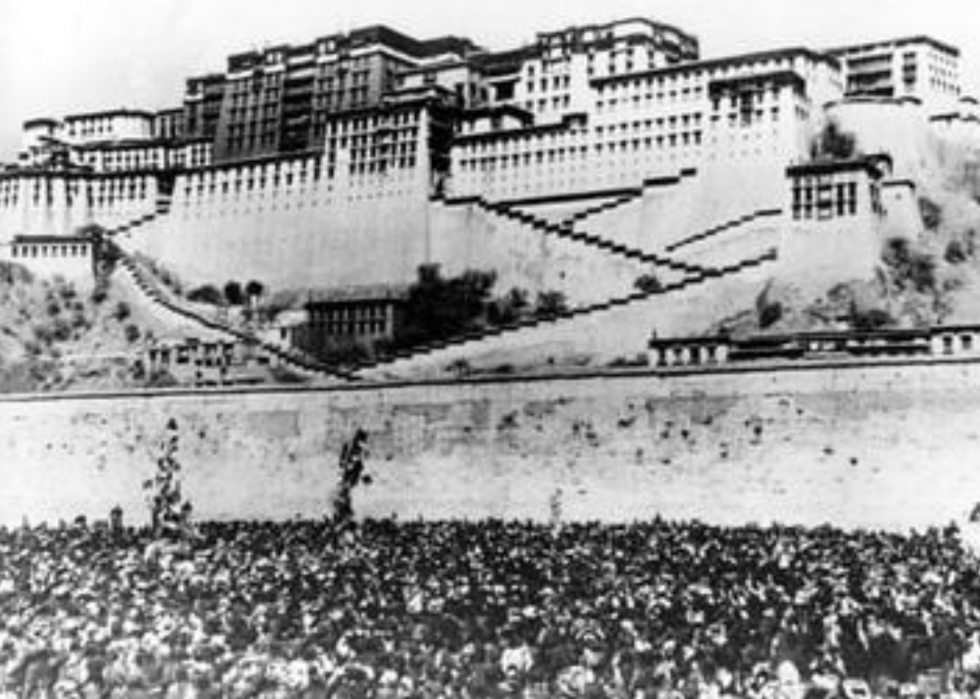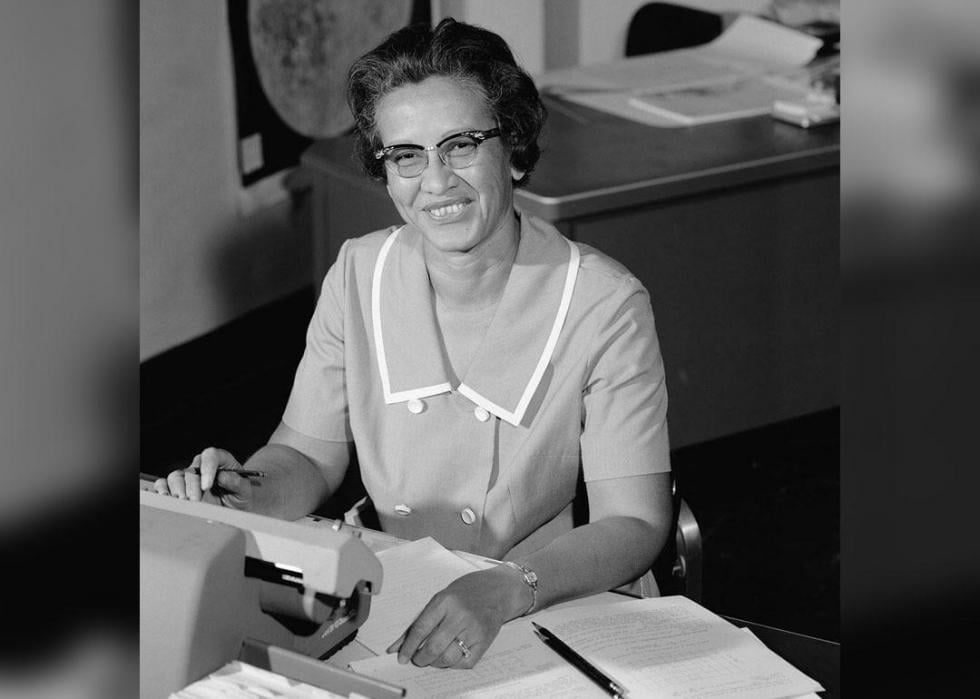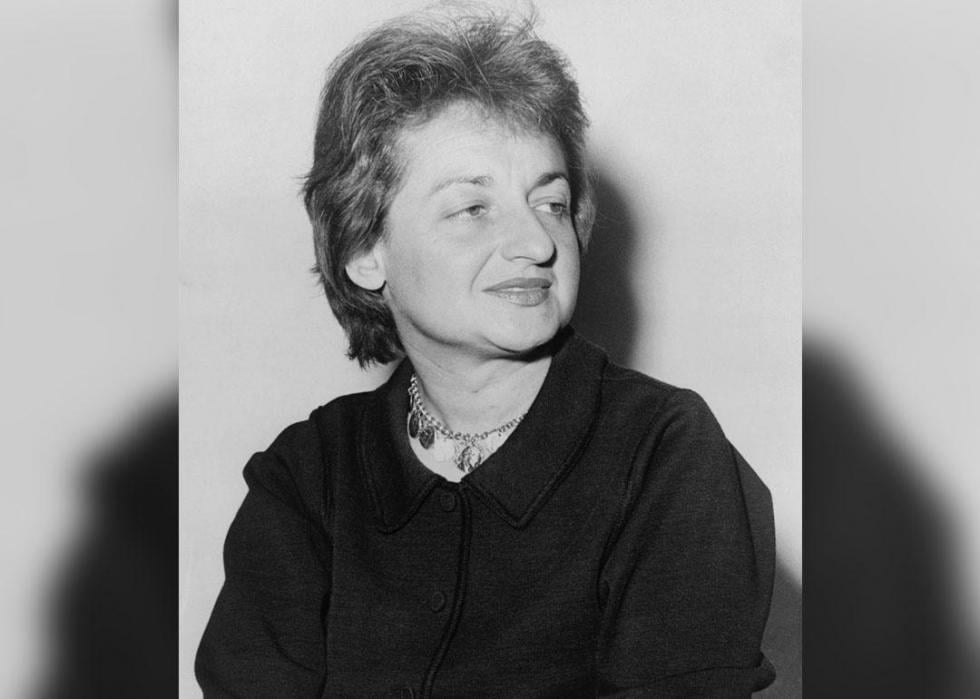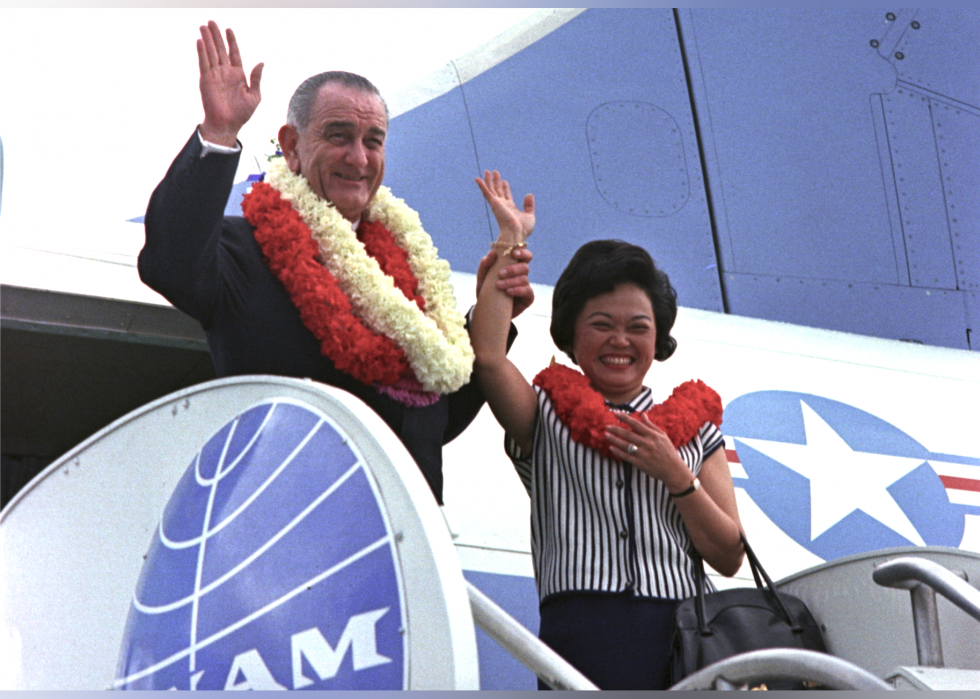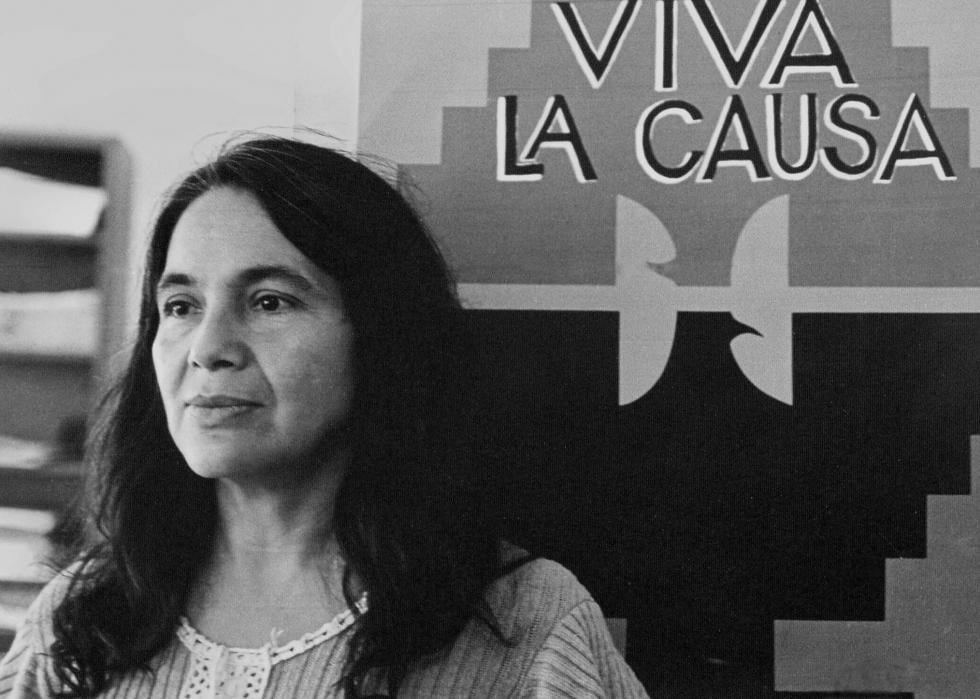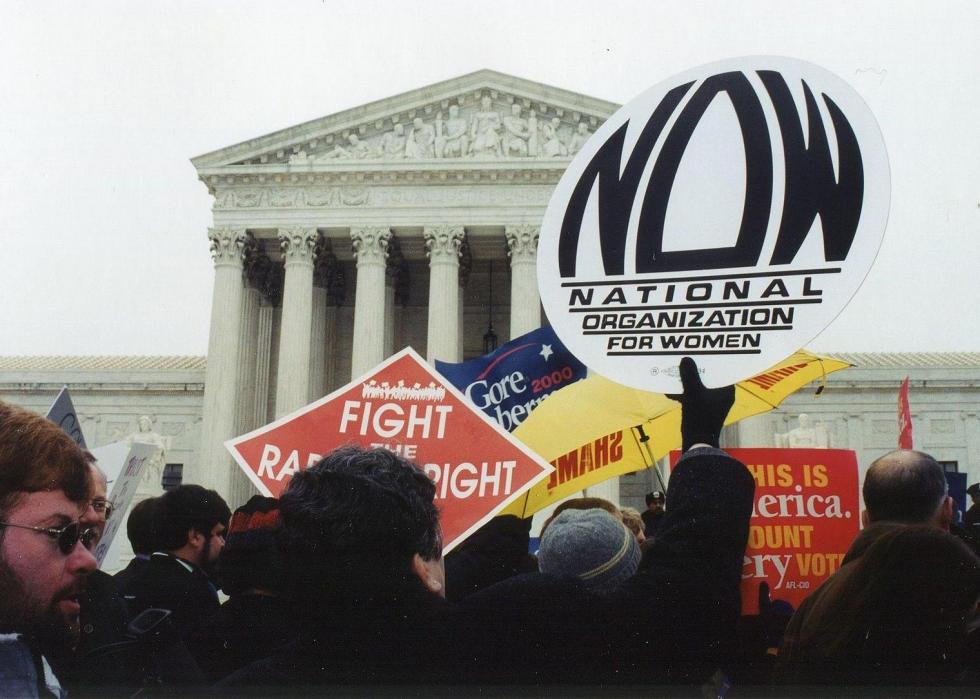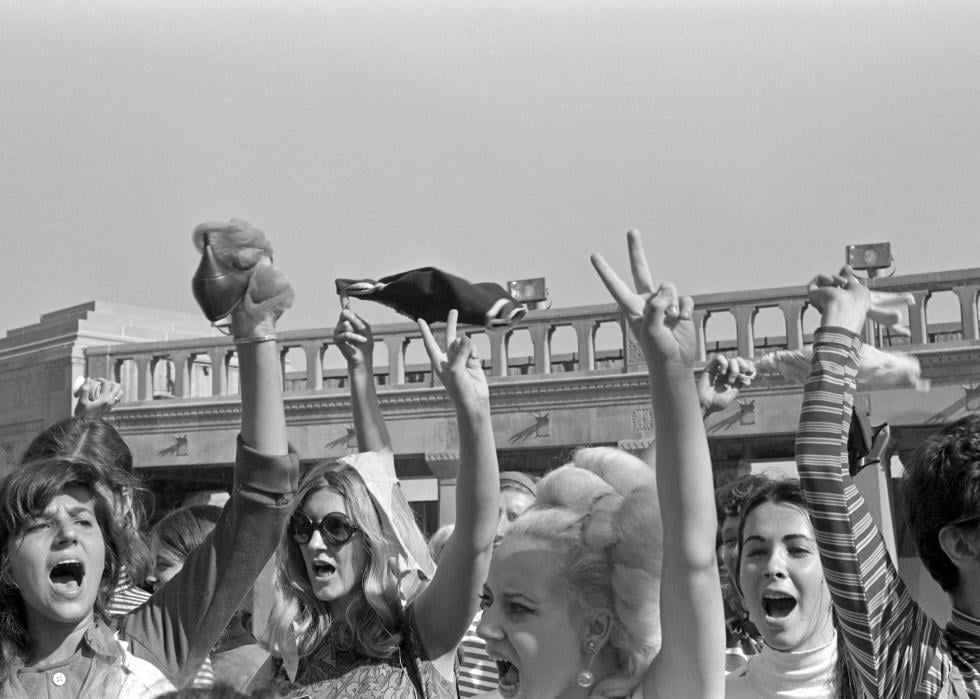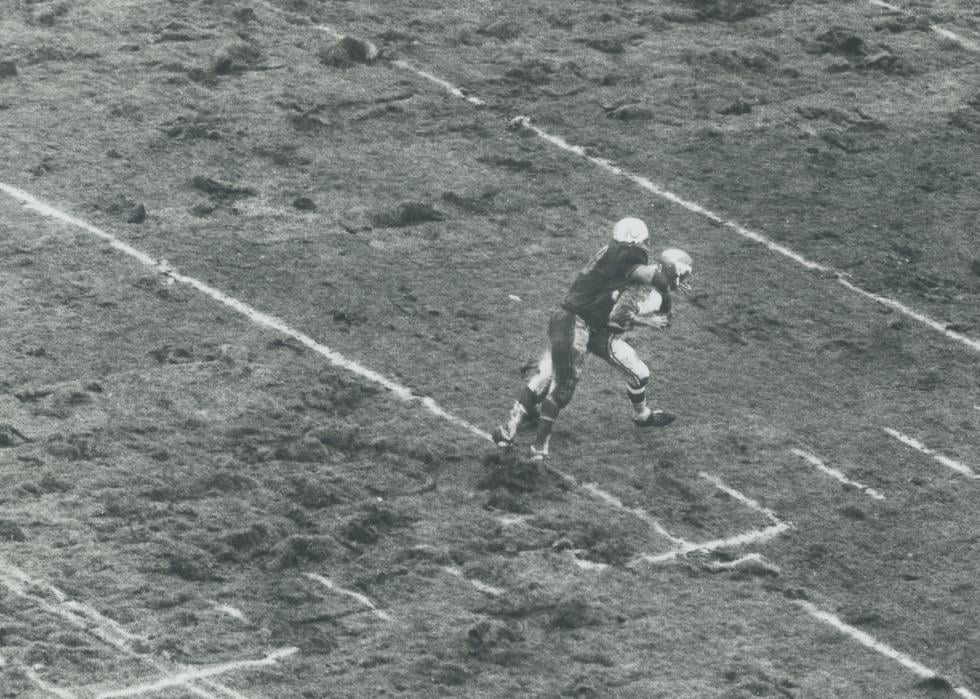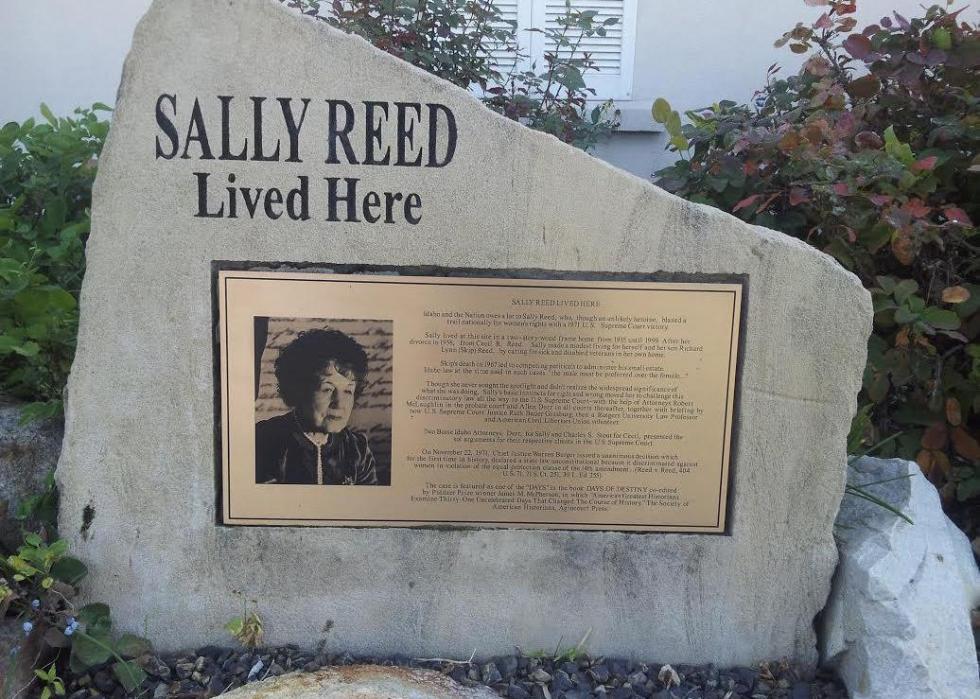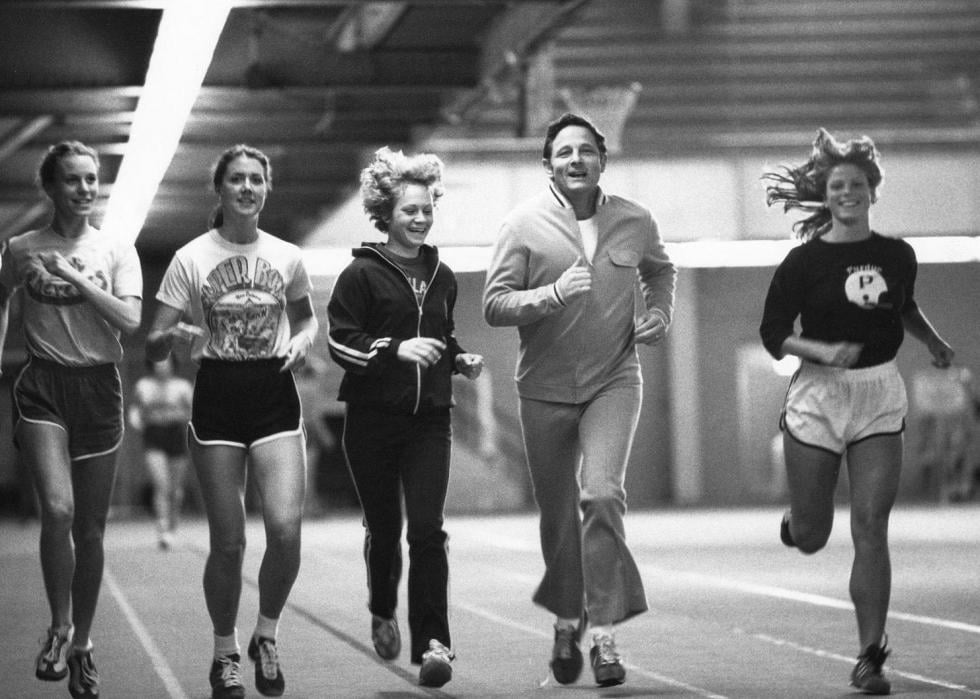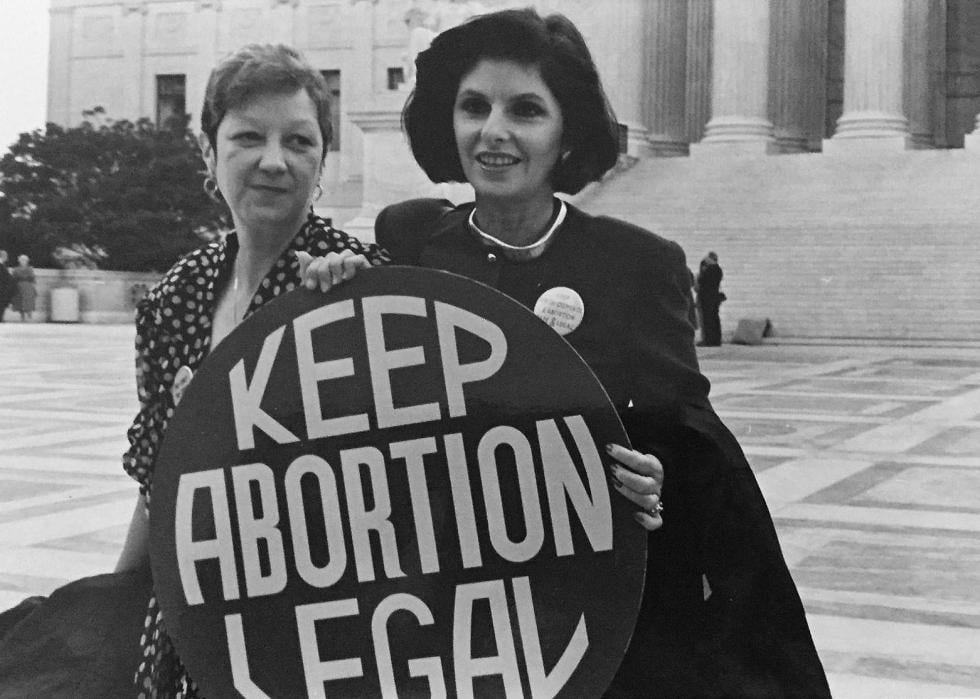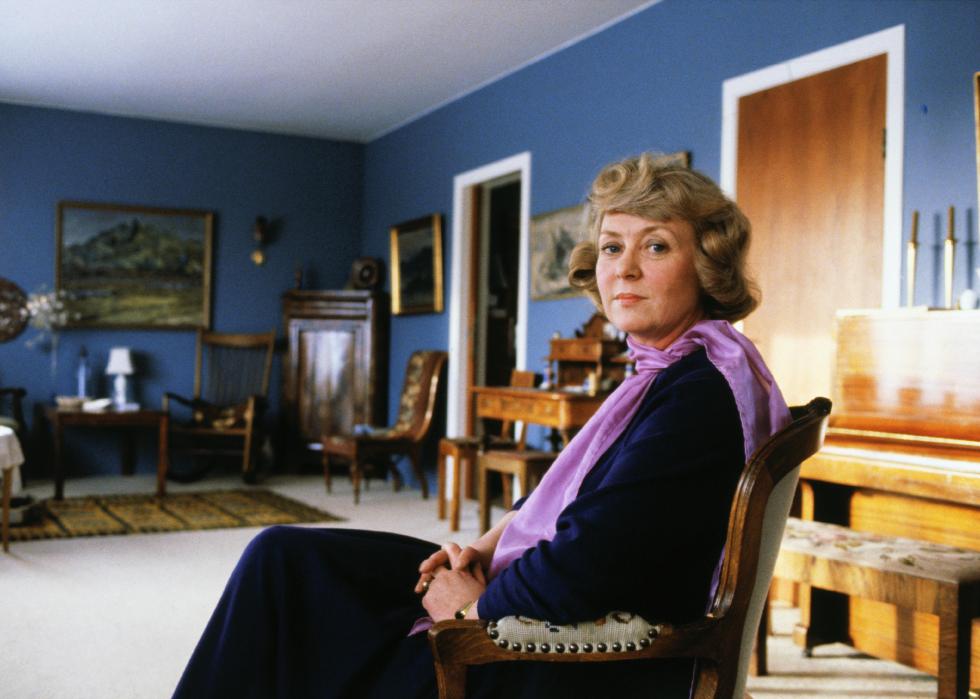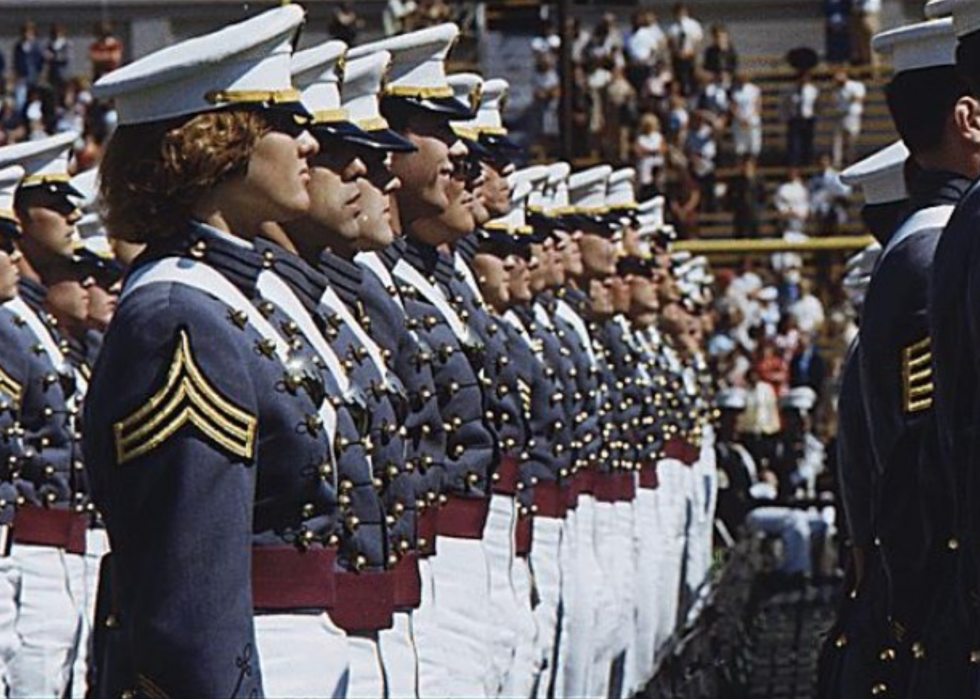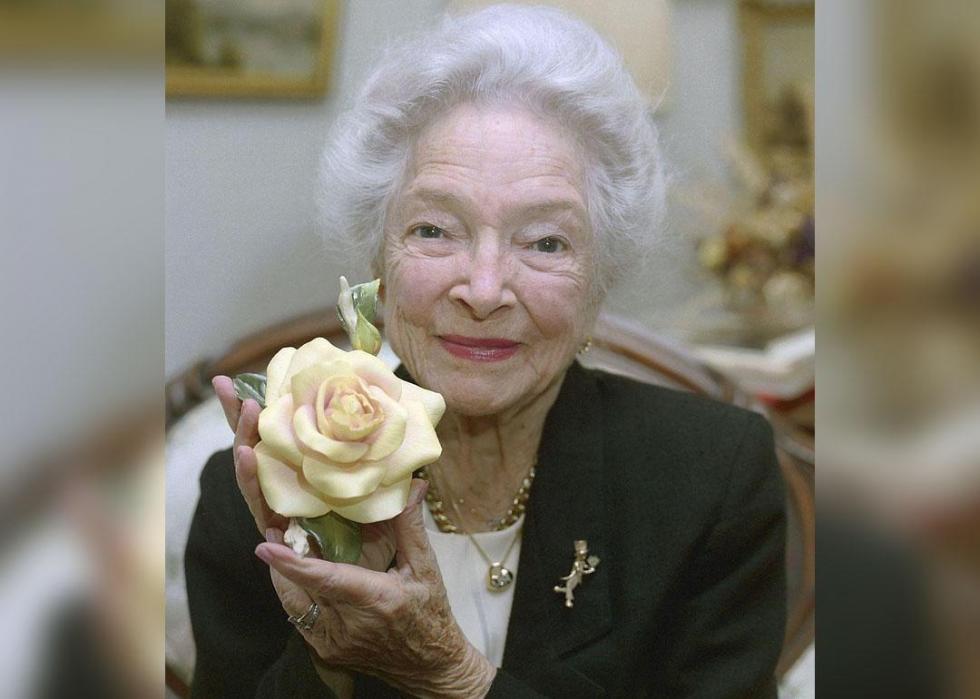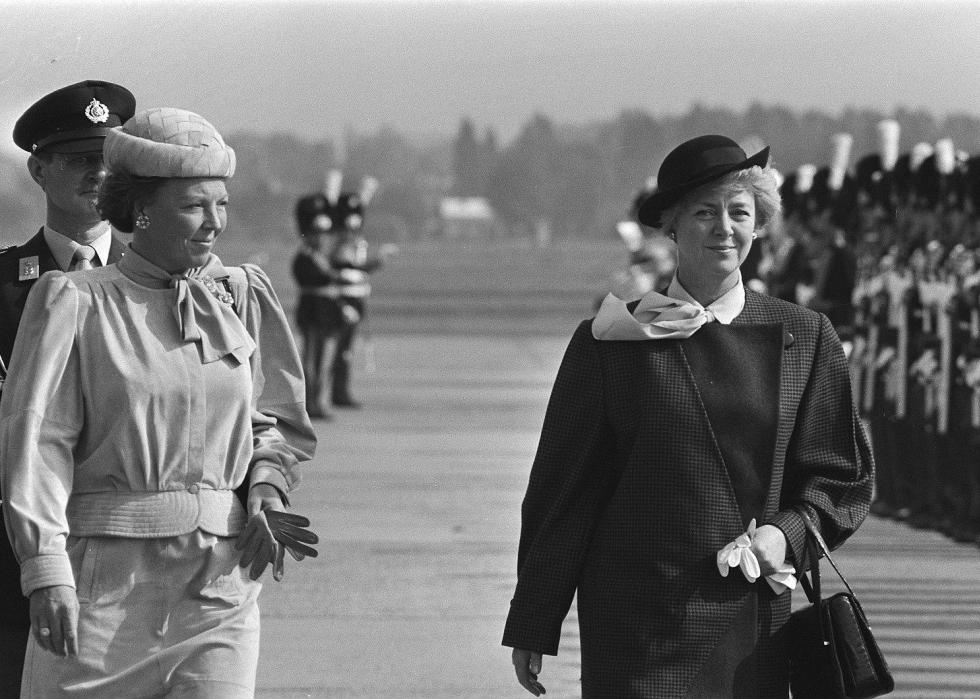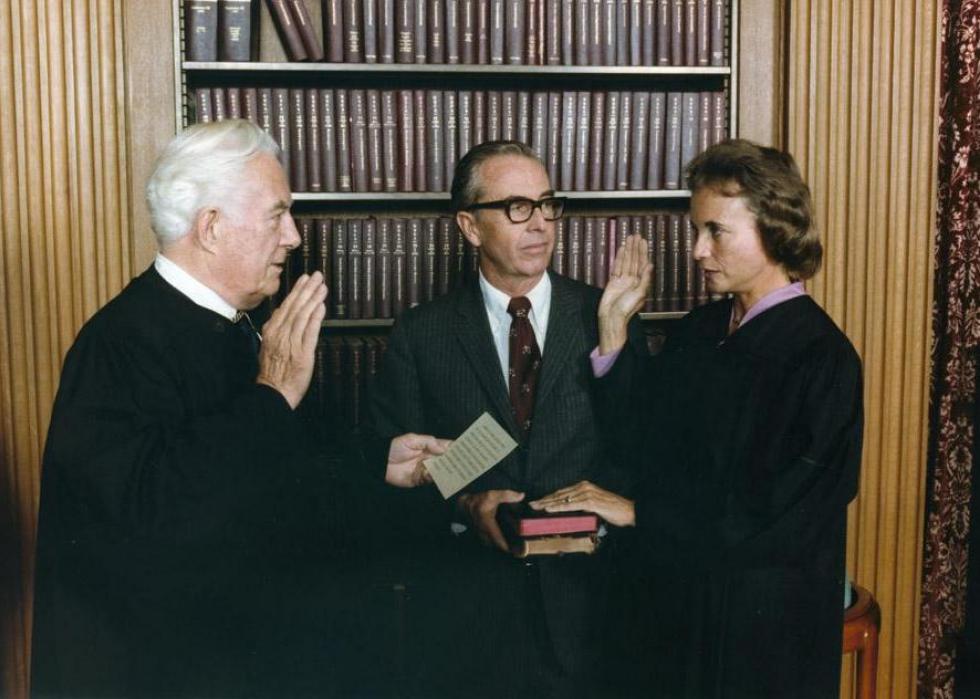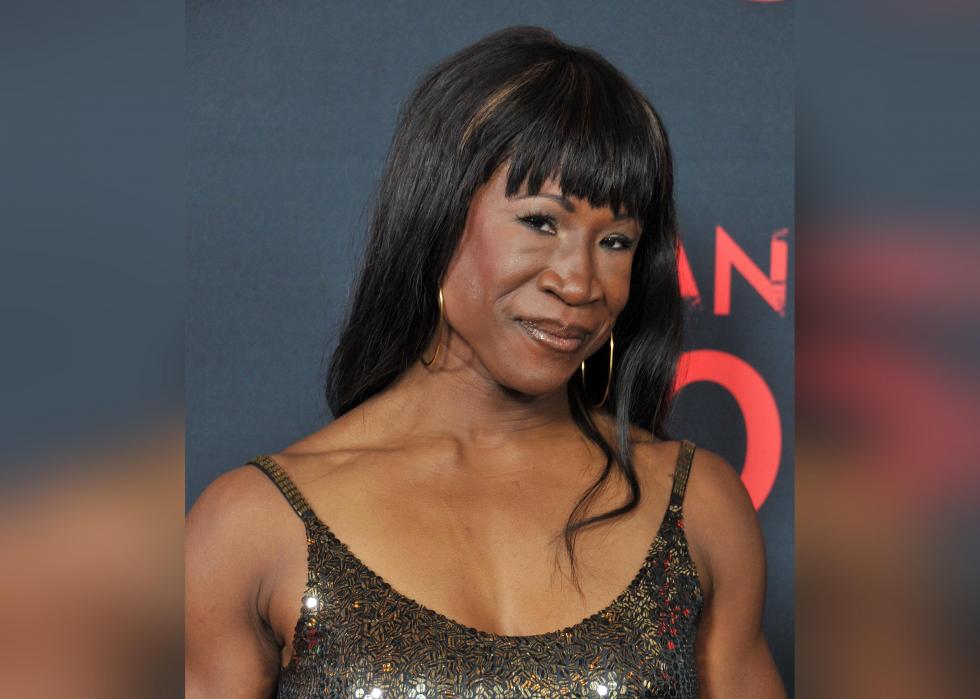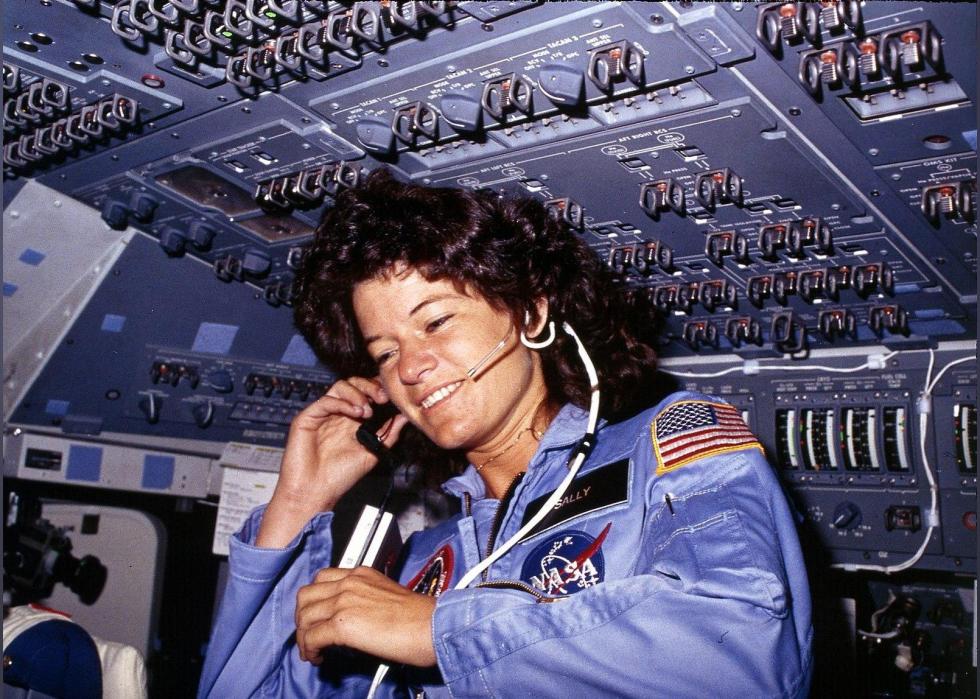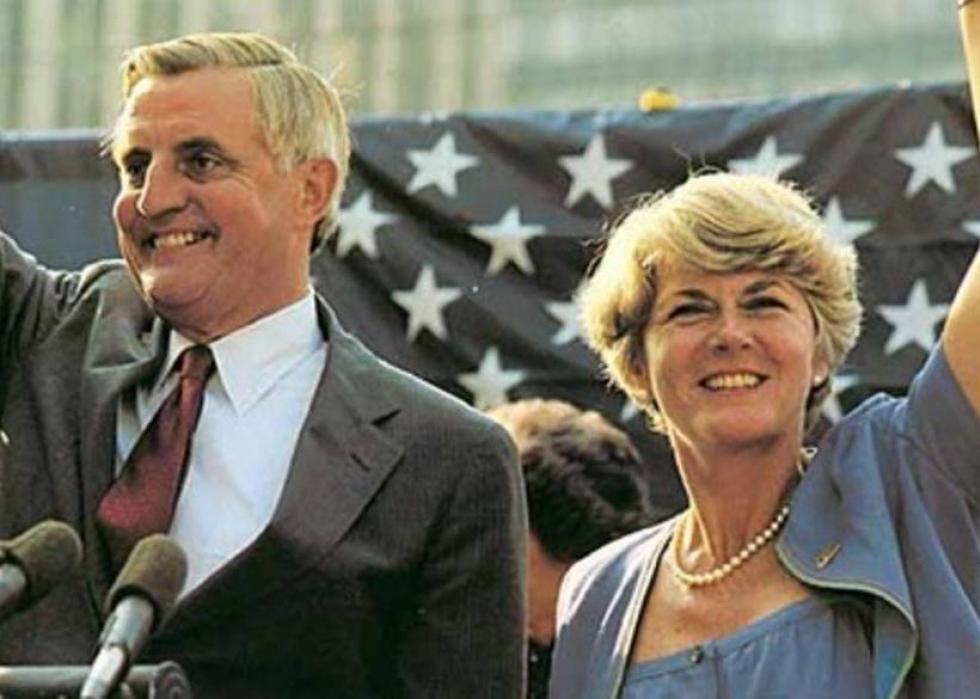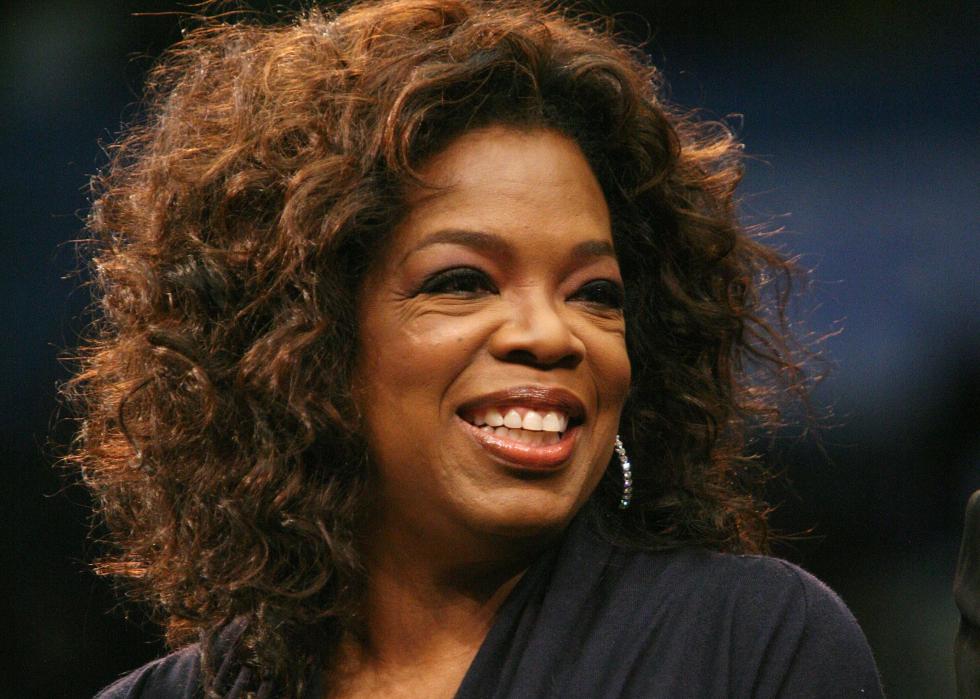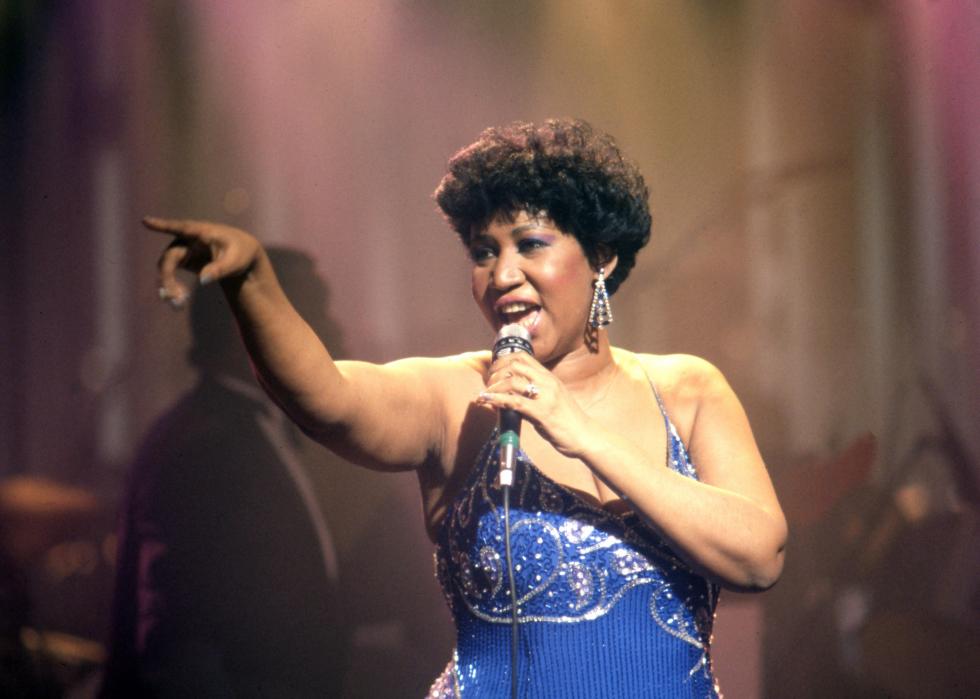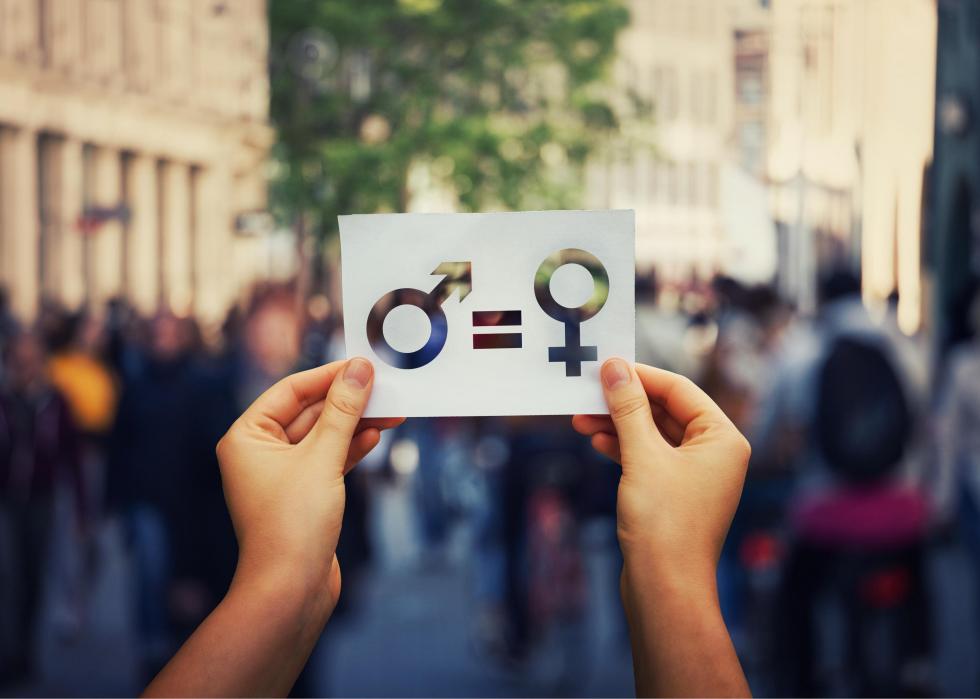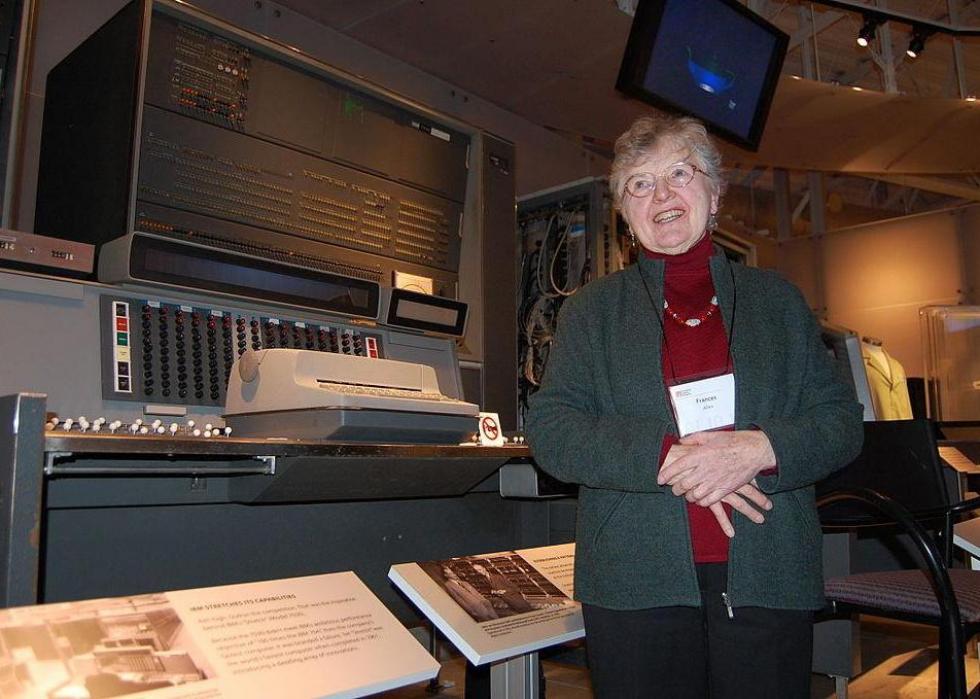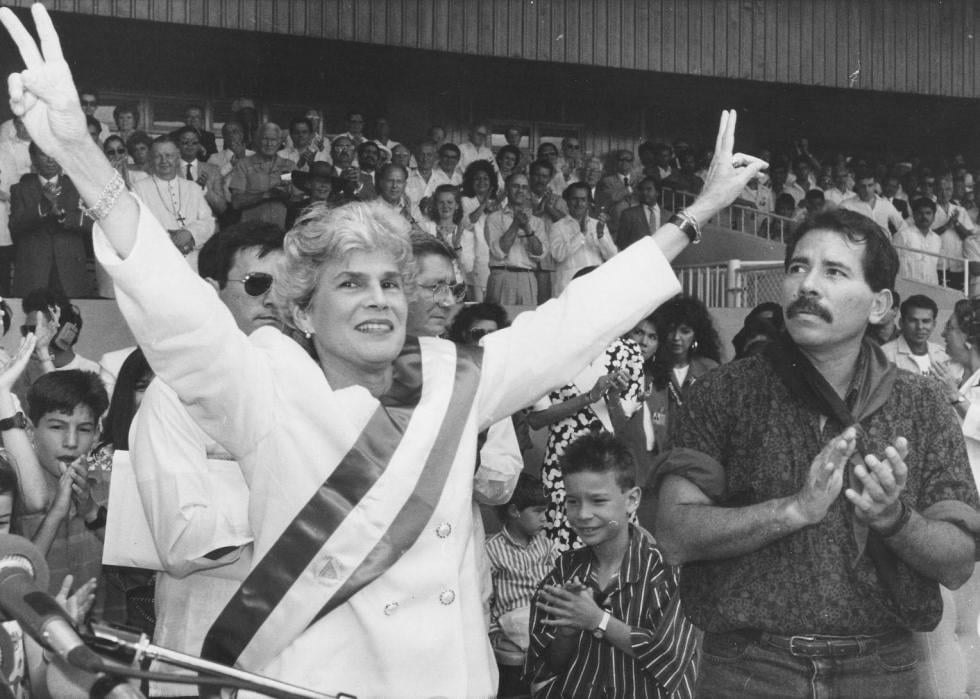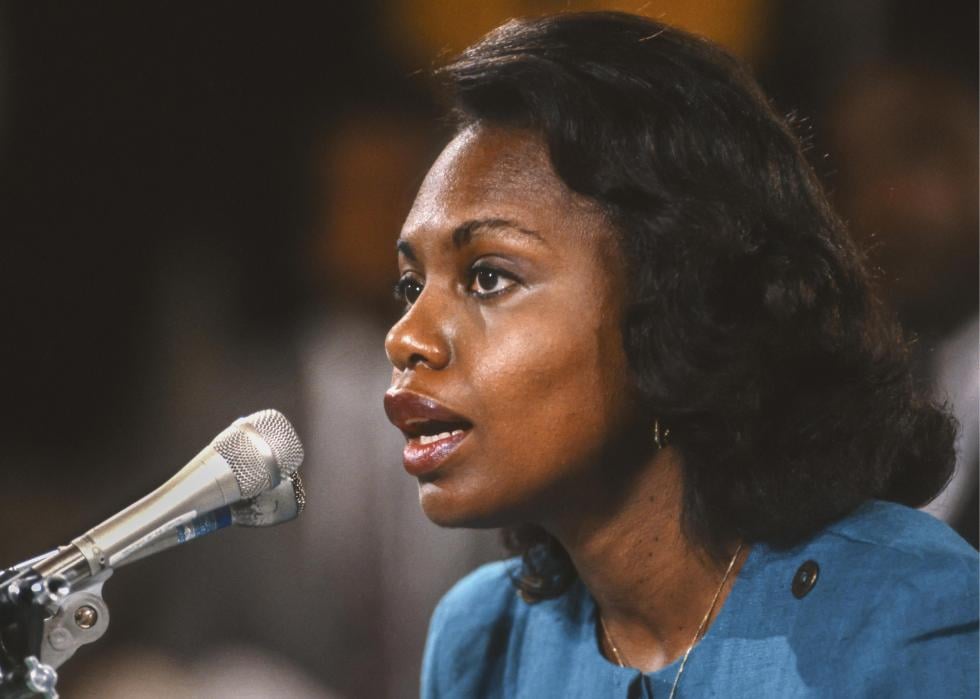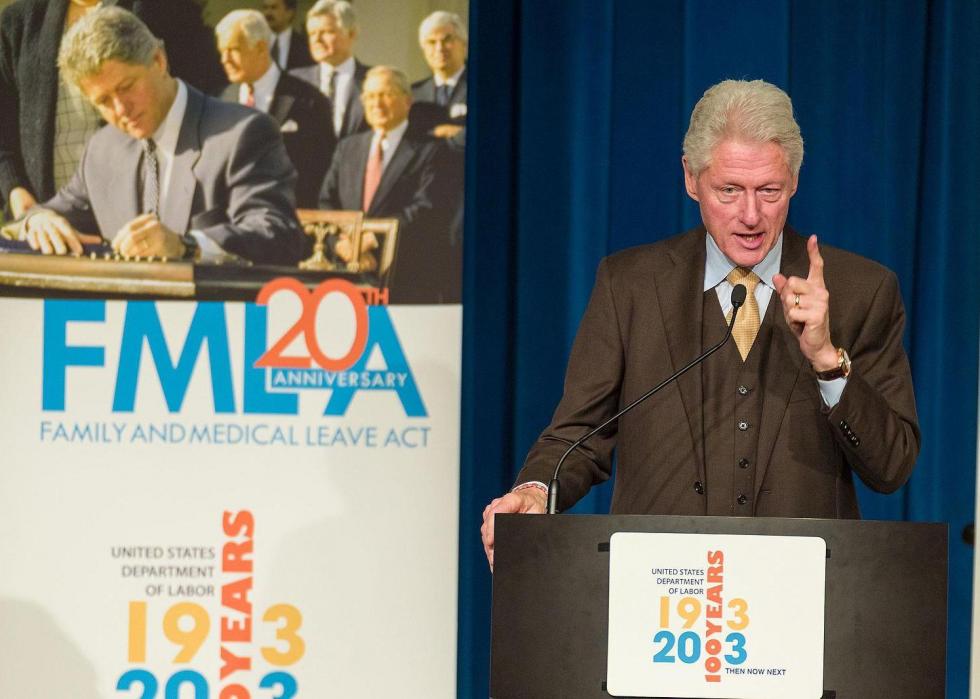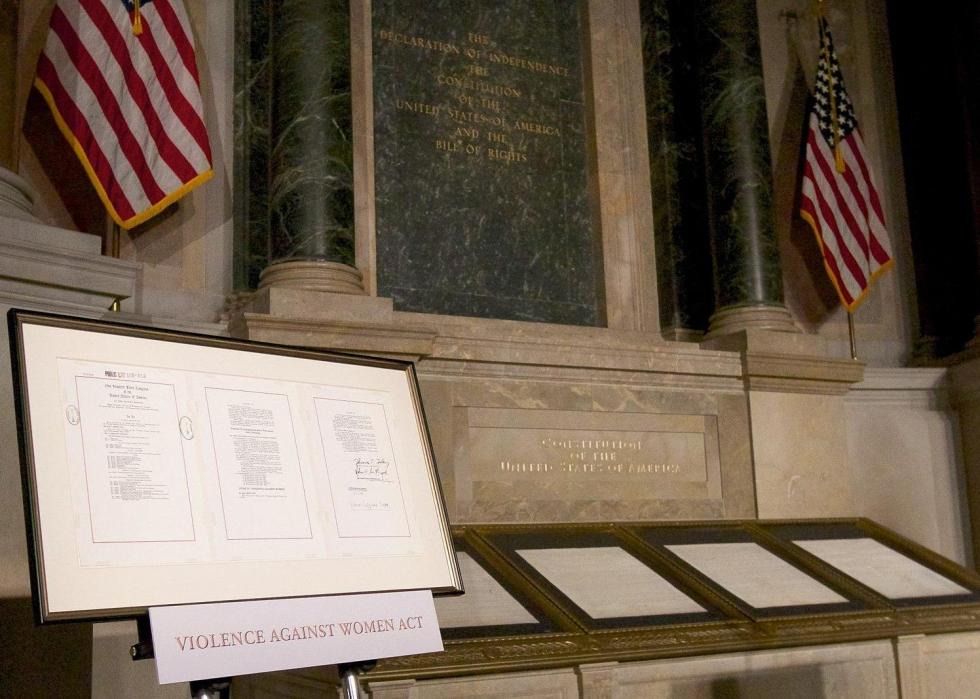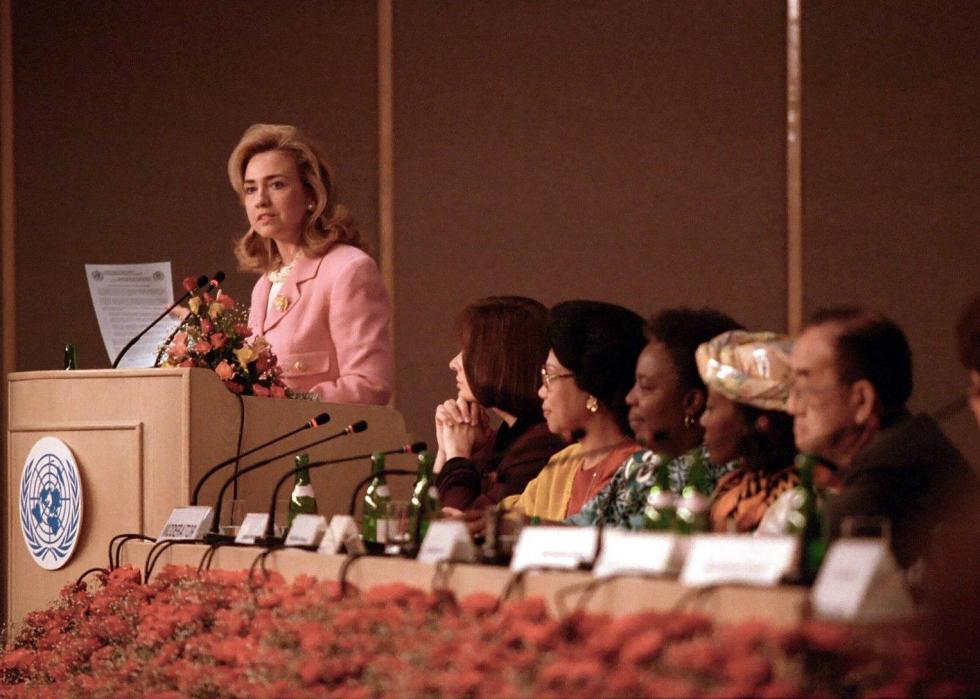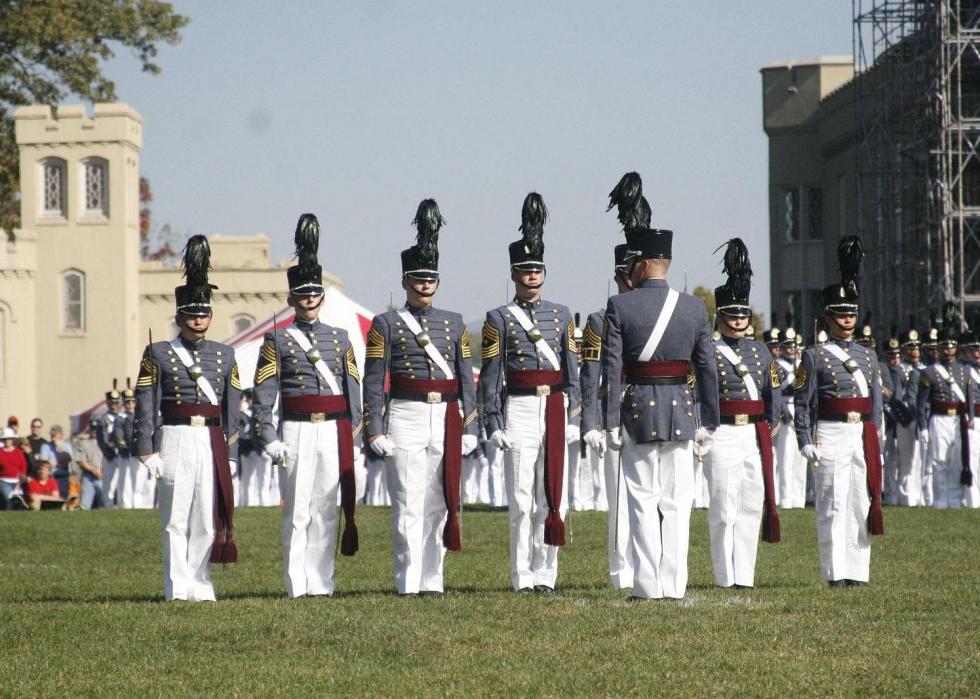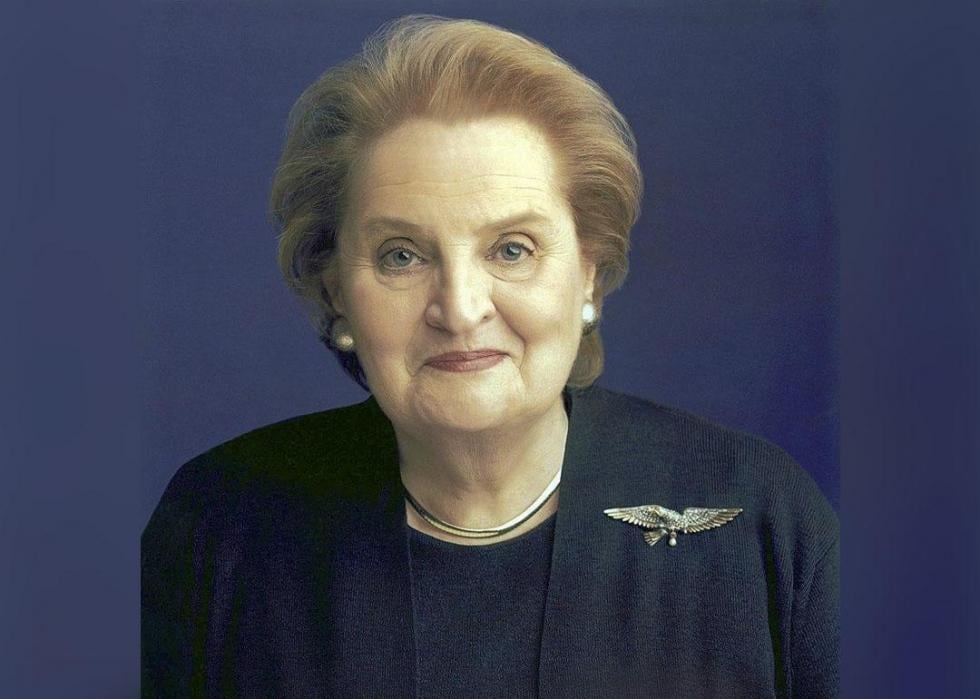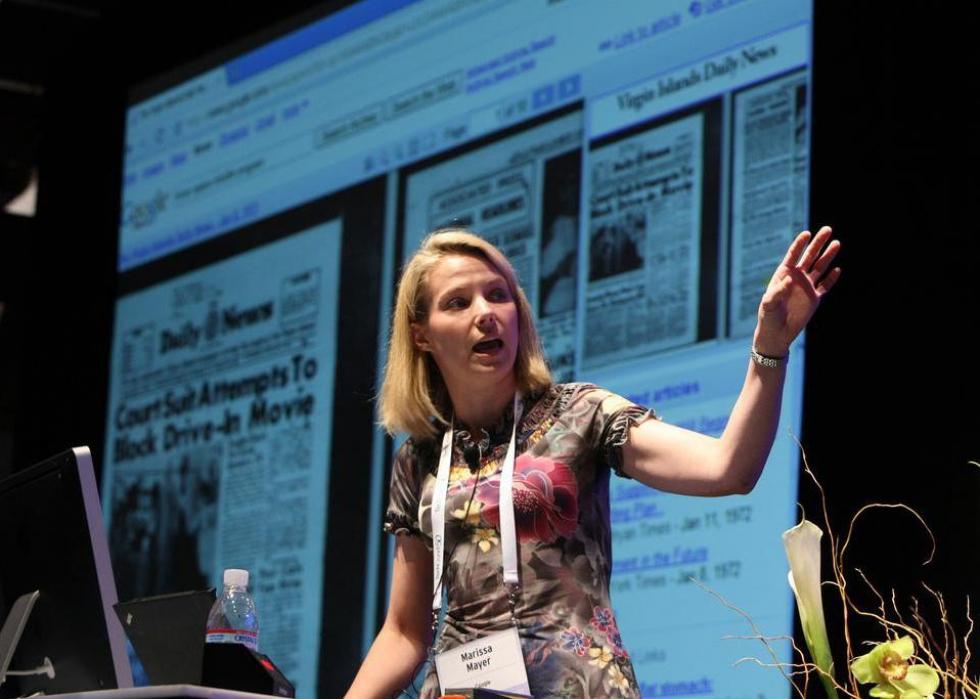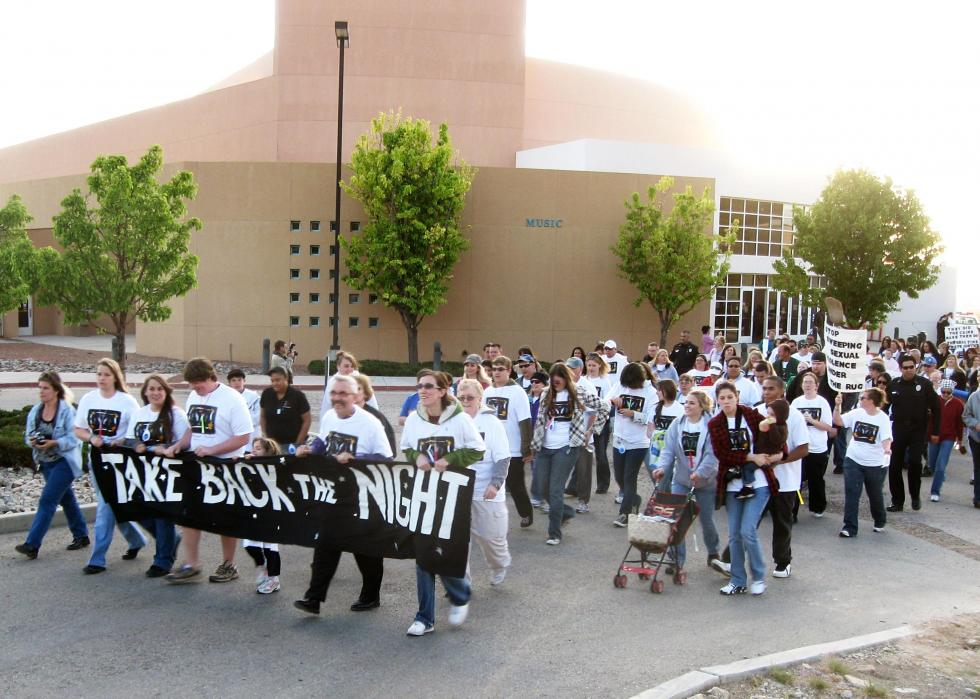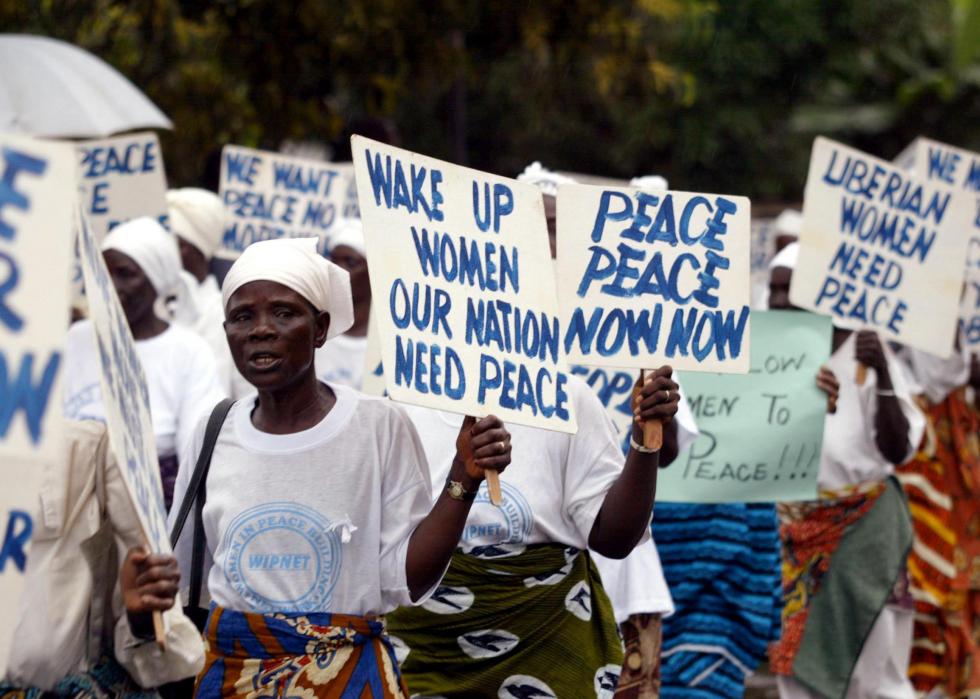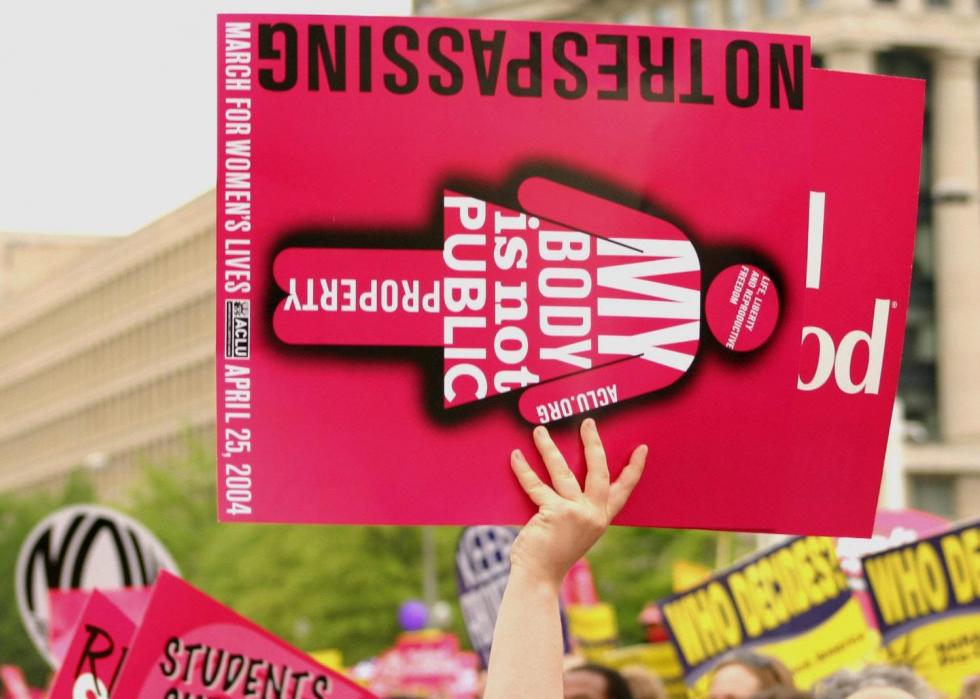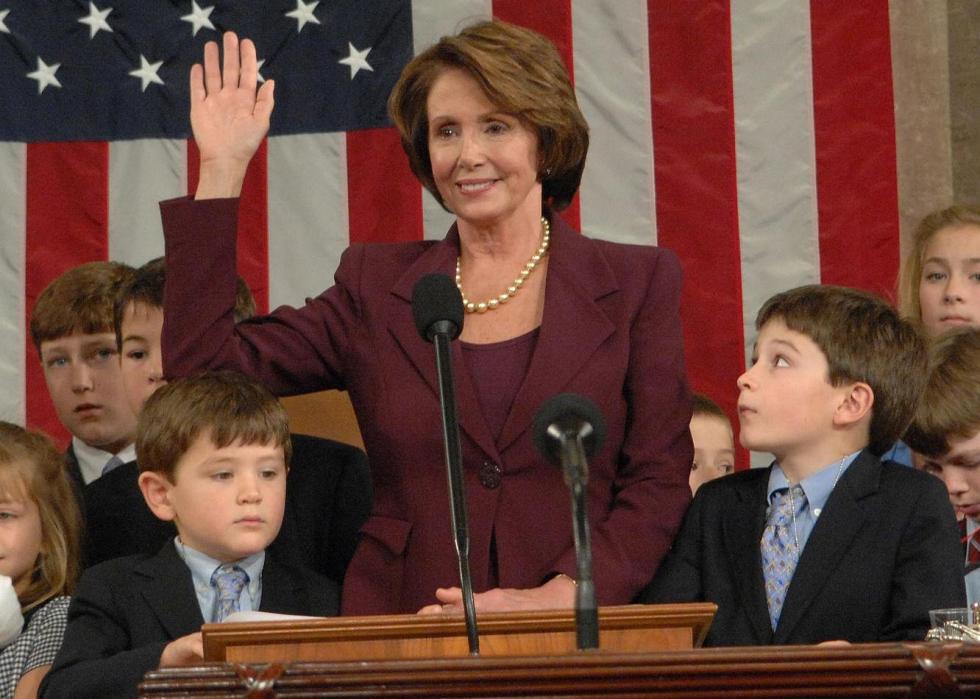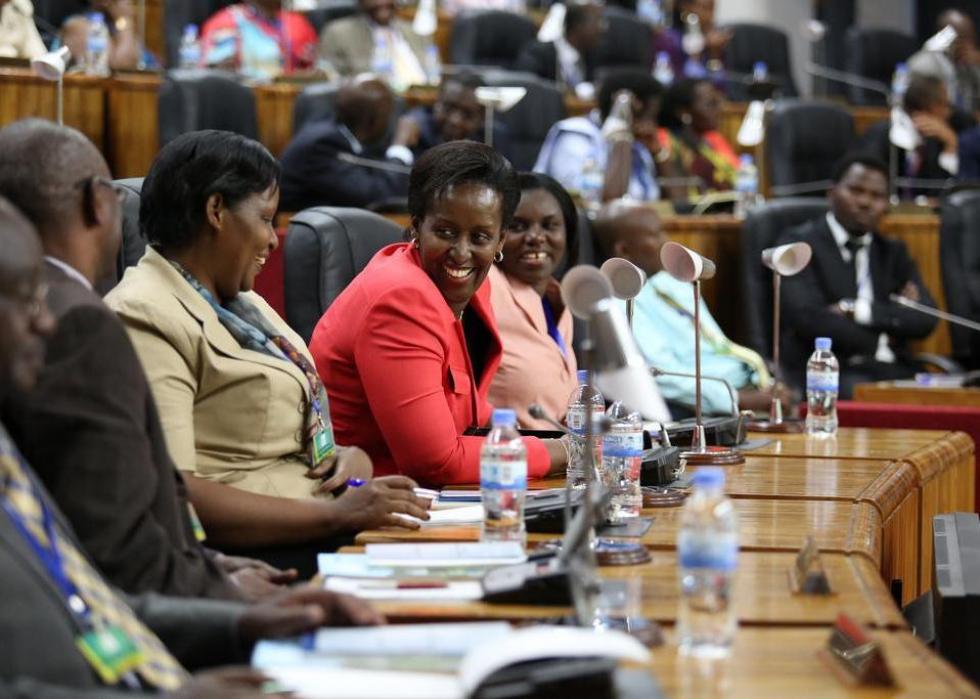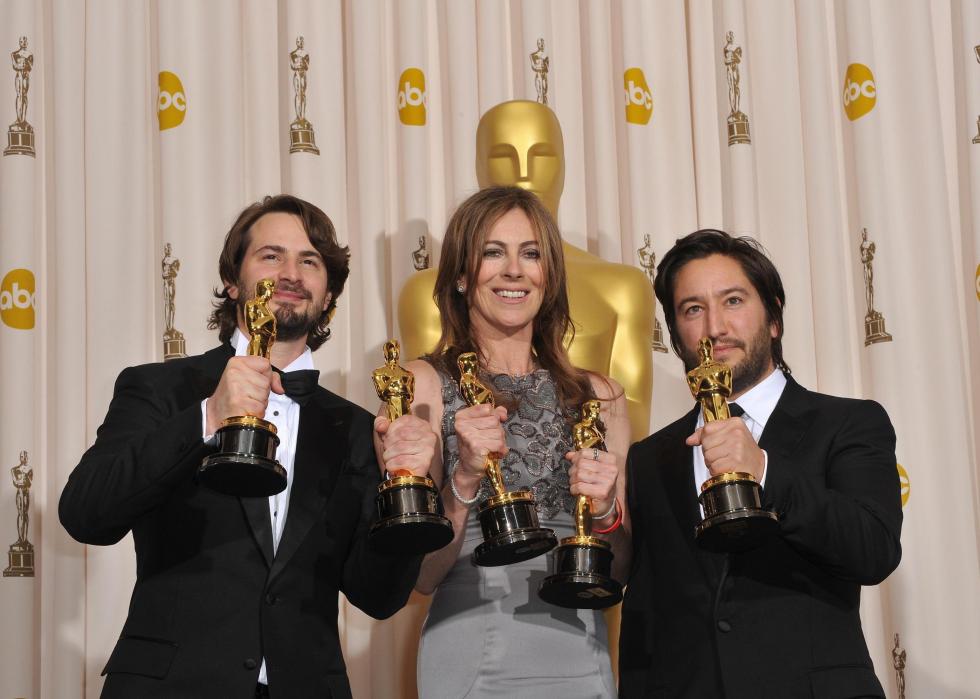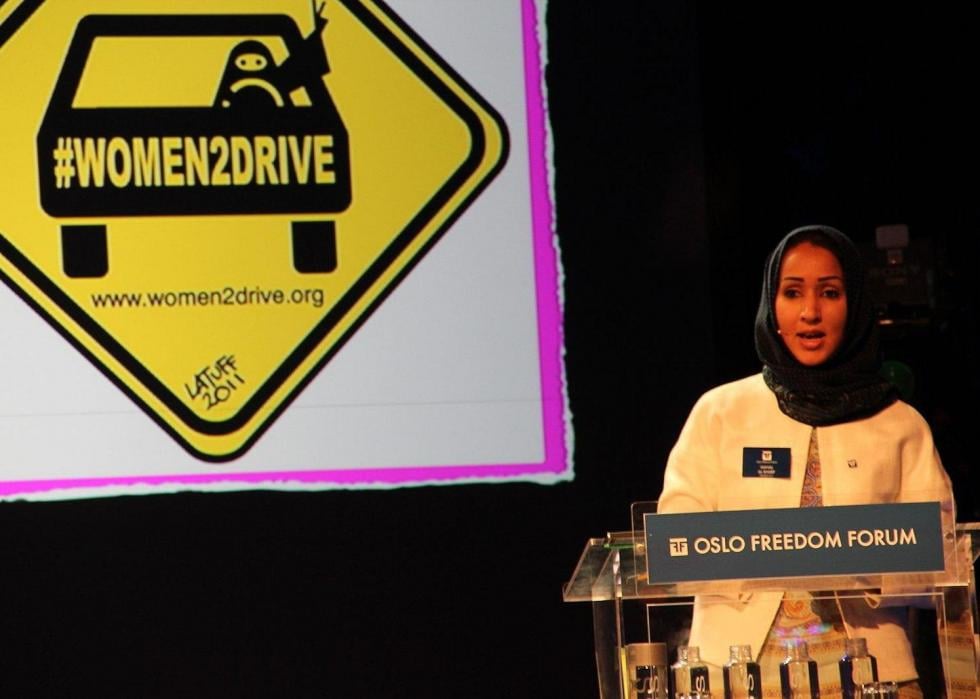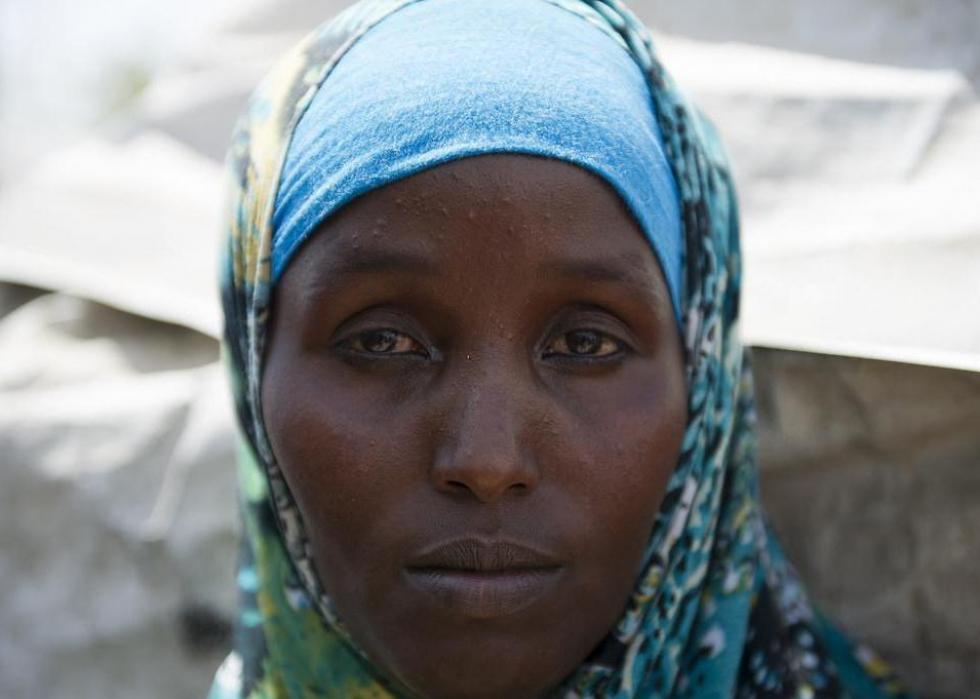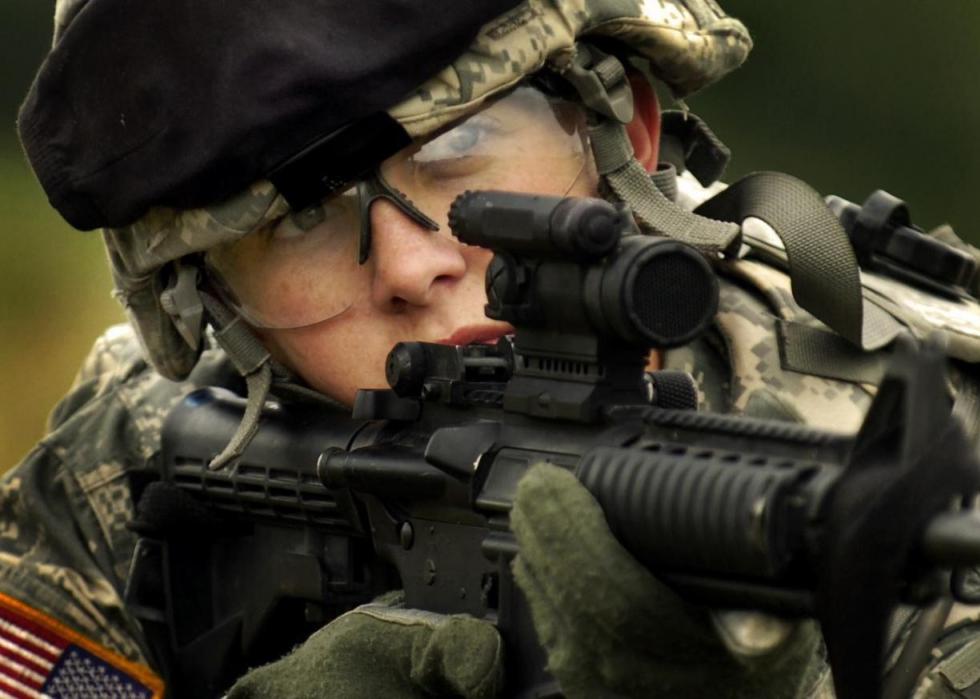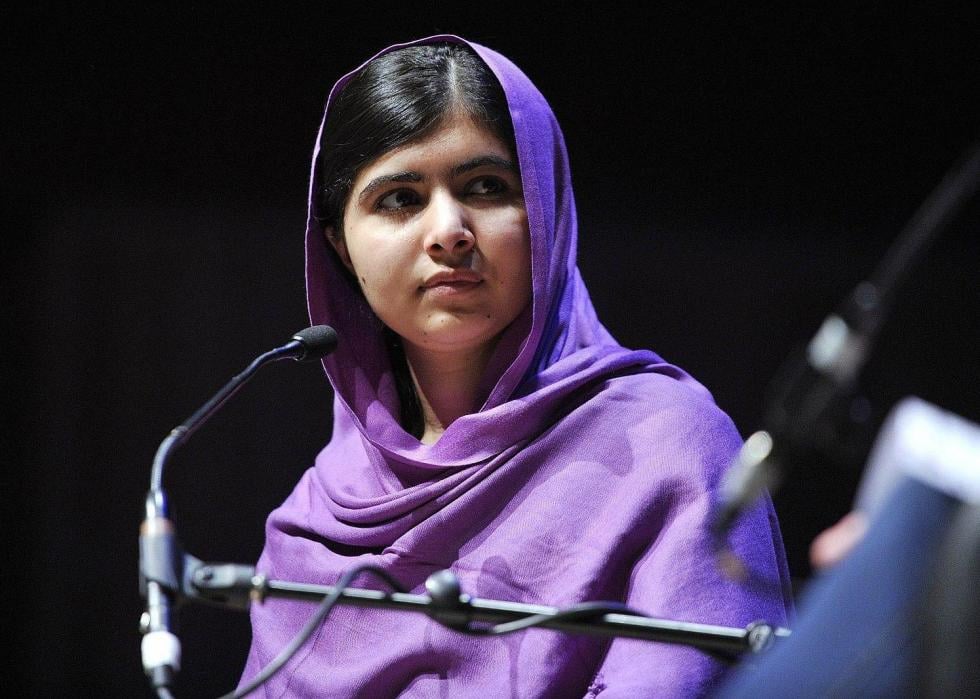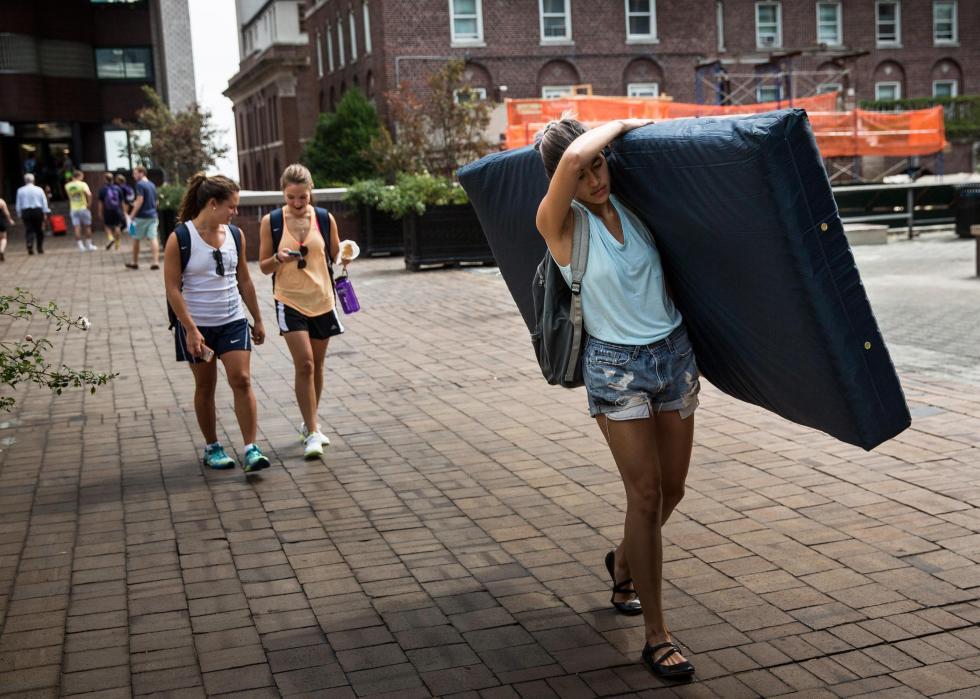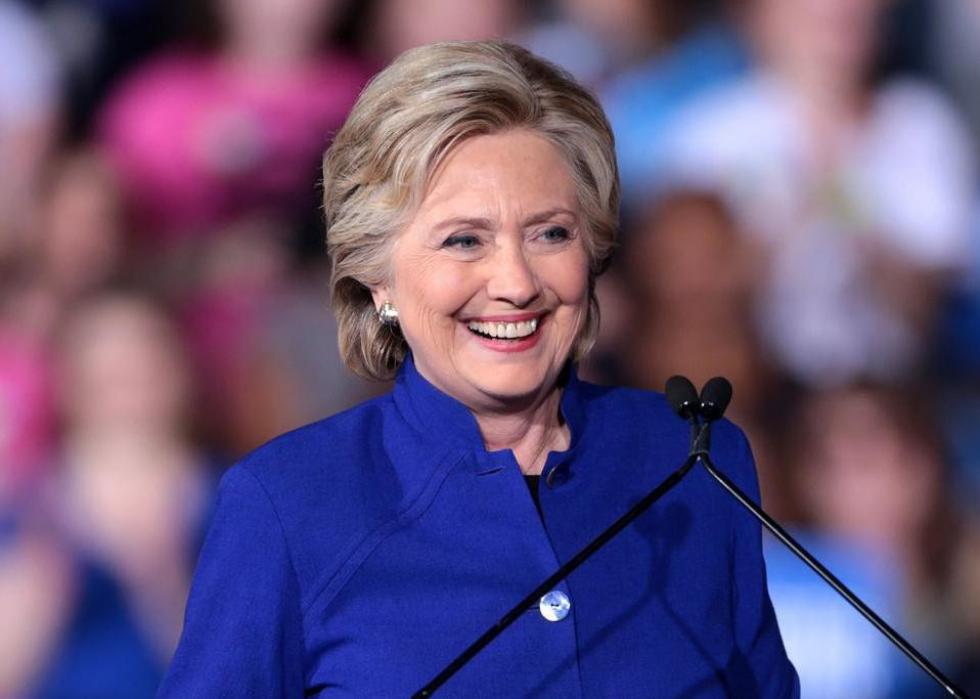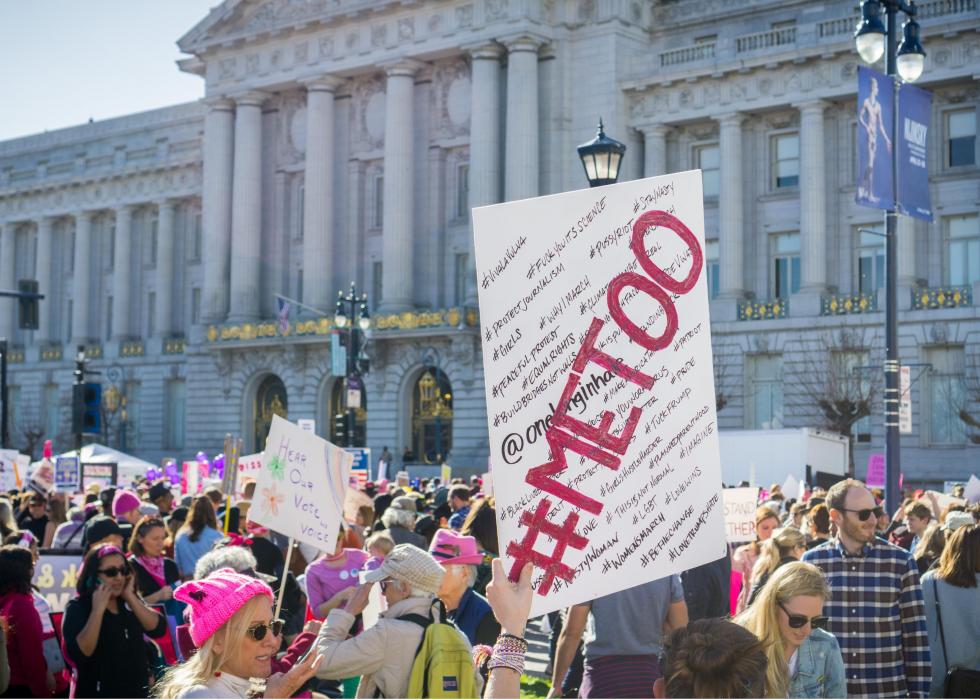The feminist movement of the 1960s and 1970s reminded the world that women have always played important historical roles, despite often 小蓝视频 overlooked. But even in the 21st century, many —usually covering war heroes, generals, and the country's founding fathers.
Studies of U.S. history and social studies classes also focus on men and gloss over the roles of women outside of the home. Though many people today , women worldwide for the same work, live in fear , and across industries.
Through decades of activism and organizing, women have made hard-won gains across social, economic, political, and cultural spectrums. Observing milestones in women's history also reminds us of the steps still required to achieve true gender equality. dug through historical records and selected inspirational or important moments in women's history every year from 1919 to 2022.
Women have left marks on everything from politics to entertainment and music to space exploration, athletics, and technology. Each passing year and new milestone makes it clear both how recent this history-making is in relation to the past and just how far we still need to go. The resulting timeline shows that women are constantly making history worthy of best-selling biographies and classroom textbooks; someone just needs to write about them.
Scroll through to find out when women in the U.S. and around the world won rights, the names of women who shattered the glass ceiling, and which country's women banded together to end a civil war.
1919: National Women's Party sparks 'Watchfires of Freedom'
Members of Congress enshrining women's right to vote in 1878, but it would take decades of protest for it to become the law of the land.
In 1918, President Woodrow Wilson started supporting women's suffrage, but members of the National Women's Party thought he wasn't using his influence to sway the last two senators needed for an amendment to pass. In January 1919, activists started burning Wilson's speeches outside public buildings, implying he was a hypocrite for not doing more. The amendment passed a few months later.
1920: The 19th Amendment becomes law
After the 19th Amendment passed through Congress, it was turned over to the states; two-thirds (or 36) had to ratify the amendment before it could become law. Seven states rejected the amendment outright.
The decisive vote came from Tennessee convinced him to vote in support of suffrage, breaking a tie in that state's legislature. The amendment was certified on Aug. 26, 1920, and women in every state could vote in elections that November.
1921: Edith Wharton wins the Pulitzer Prize
In 1921, Edith Wharton won the Pulitzer Prize for Fiction (then called the Novel Prize), becoming the first woman in the award's four-year history to do so. She was honoured for her 12th novel, "The Age of Innocence," which explores the upper-class 1870s New York society in which Wharton grew up.
Her win , but not because of her gender; the committee originally decided to give the prize to Sinclair Lewis' novel "Main Street," a decision that was changed for political reasons.
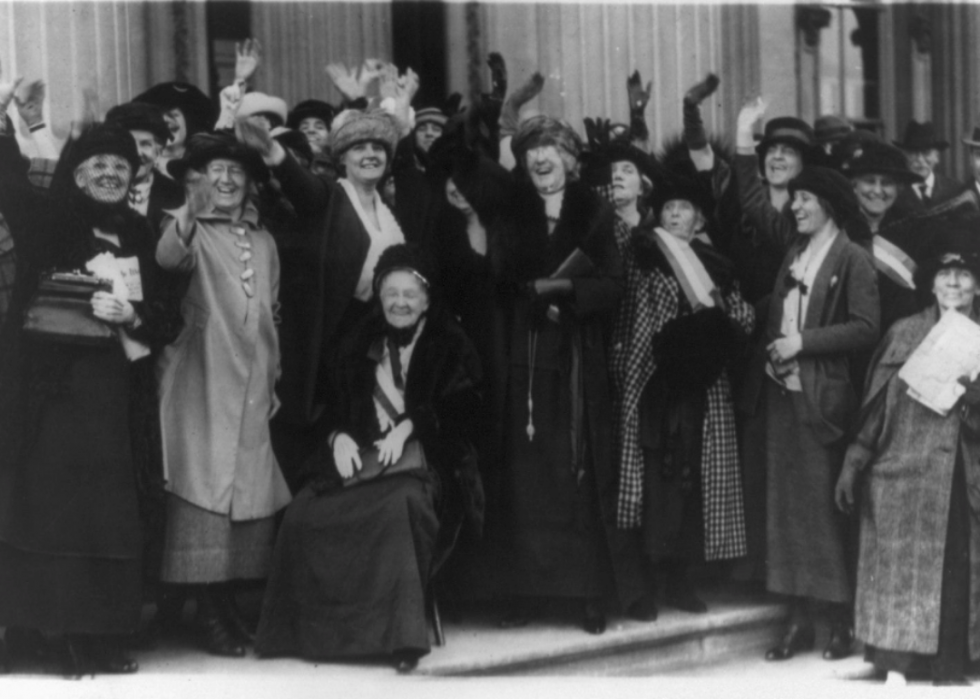
1922: First woman serves in the Senate
The first woman to serve in the U.S. Senate held . Rebecca Ann Felton of Georgia was appointed to fill a vacancy and served from Nov. 21–21, 1922. Her short appointment was largely ceremonial, honuoring her long career in journalism and state politics. It would take another decade before another woman was elected to a Senate seat.
1923: Equal Rights Amendment is first proposed
Even after women won the right to vote, Alice Paul—a women's rights activist and founder of the National Woman's Party—realized the U.S. still had a long way to go before it reached true equality. She , which, if added to the Constitution, would make it illegal to discriminate on the basis of sex. The amendment was proposed in every Congress from 1923 to 1972 when it finally passed, but it fell three states short of 小蓝视频 officially added to the Constitution.
1924: First woman diplomat gets to work
Revolutionary Marxist Alexandra Kollontai joined the new Russian government formed after the 1917 Bolshevik Revolution as the People's Commissar of Social Welfare. In that capacity, she founded a Women's Department that fought to improve women's lives in the Soviet Union. After a few years, she was asked to tackle diplomatic work, and in 1924, Kollontai of the Soviet Union's Norwegian embassy, which officially added her to the diplomatic corps. She continued working in Sweden, Finland, and Mexico until her retirement in the 1940s.
1925: Nellie Tayloe Ross becomes the first woman governor in the U.S.
One month after her husband, Gov. William B. Ross, died of appendicitis, was elected to fill his seat. Through her victory, Wyoming, the first state to give women the right to vote, became the first to elect a woman to a state's highest office. Ross was inaugurated in January 1925 but lost reelection in 1926. She had a long political career after her term and remains the only woman governor in Wyoming's history.
1926: Gertrude Ederle swims the English Channel
Gertrude "Queen of the Waves" Ederle did what only five men had done before her when she swam on Aug. 6, 1926. An Olympic gold medalist, Erdele first attempted the swim between England and France in 1925, but she didn't let her failure prevent a second try. Covered in grease and wearing a more practical self-designed suit, Erdele beat the men's record by over two hours at a time when women's sports were just coming into the spotlight.

1927: Women petition to become 'persons' in Canada
Five Canadian women's rights activists, brought a case before the country's Supreme Court in 1927, arguing that women had the right to be appointed to the Senate. In 1928, the Court ruled that women were according to the Canadian constitution and were therefore ineligible for Senate seats. An appeal reversed the ruling, opening up new opportunities for women in Canada.
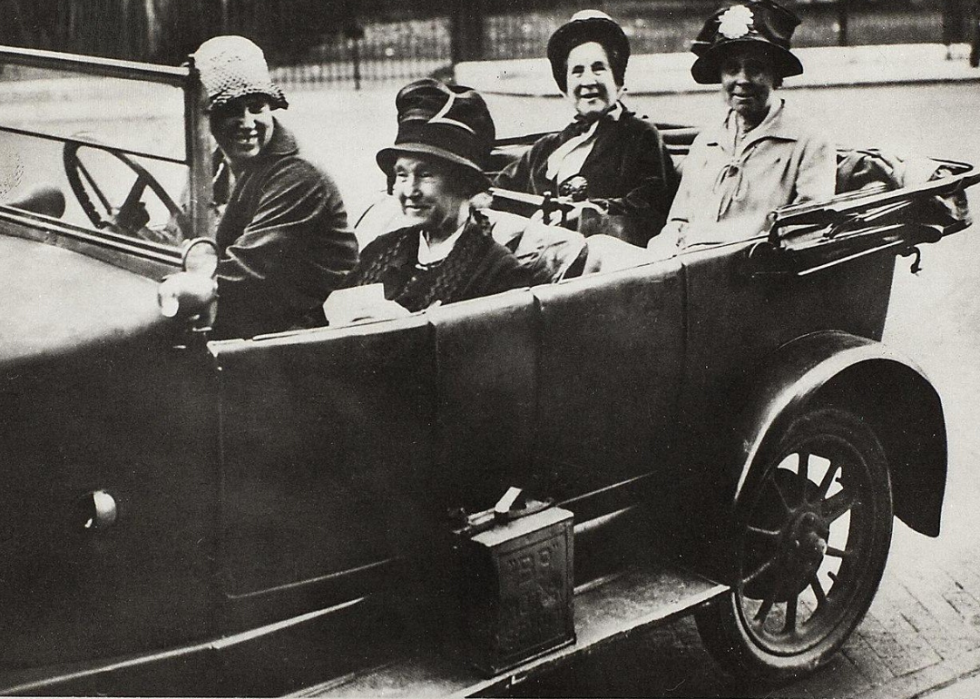
1928: Britain's Equal Franchise Act becomes law
British women technically won the right to vote before Americans, but it took 10 years for them to achieve the same voting rights men already had. The 1918 Representation of the People Act allowed all men over 21 to vote, but only female householders or those married to householders, female university grads over 21, or women over 30 could vote. The Equal Franchise Act of 1928 ; any British citizen over 21 was now free to vote.
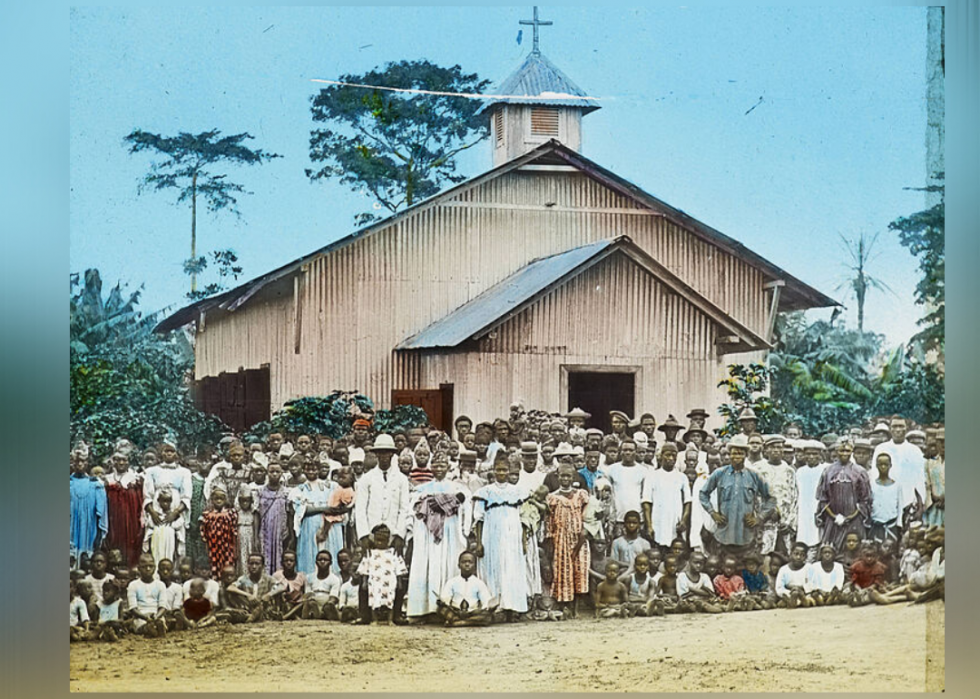
1929: Nigeria's Women's War wins rights
Through the late 1920s, British colonial rule in Nigeria wildly changed how the country was governed. The native Igbo women, who had an important political role in their communities, were increasingly undermined by new leaders. These women used their powerful communication networks against their mistreatment. The British didn't understand the cause of the protests, and the campaign ended after just over one year when the British turned to violence—but not before Nigerian women won important protections for their rights and regained some of their political power.
[Pictured: Community of men, women, and children standing before the Akaniobio Church, Old Calabar, Calabar, Nigeria, sometime between 1900–1930.]
1930: Frances Marion writes Oscar-winning 'The Big House'
As movies transitioned from silent black-and-white affairs into talkies and Technicolor, screenwriter Frances Marion and actress Mary Pickford became some of early Hollywood's biggest names. The two dozens of novels and stories into films, from classics like "Anne of Green Gables," to "The Big House," which won Marion her first Oscar (Adapted Screenplay). By the end of her career, Marion had written over 100 scripts.
1931: Jackie Mitchell strikes out two of baseball's best
Jackie Mitchell, a 17-year-old pitcher, took the mound against the New York Yankees in an early season exhibition game. One of the first female pitchers in the league with a contract, Mitchell managed to strike out legends . But a few days later, her contract was revoked amid claims that the occupation was dangerous for women. Some modern historians believe that Mitchell's history-making pitches were staged to get more people in the stands, but many still , either way.
1932: Amelia Earhart's first solo flight across the Atlantic
Amelia Earhart became the first woman to when she travelled from Newfoundland to Ireland on May 21, 1932. Earhart had already completed a similar feat a few years earlier as part of a three-person crew, and her fame only grew after flying solo—just like Charles Lindbergh, who had completed the feat five years before. Earhart, who was awarded the Distinguished Flying Cross by Congress, infamously disappeared a few years later while attempting to fly around the world.
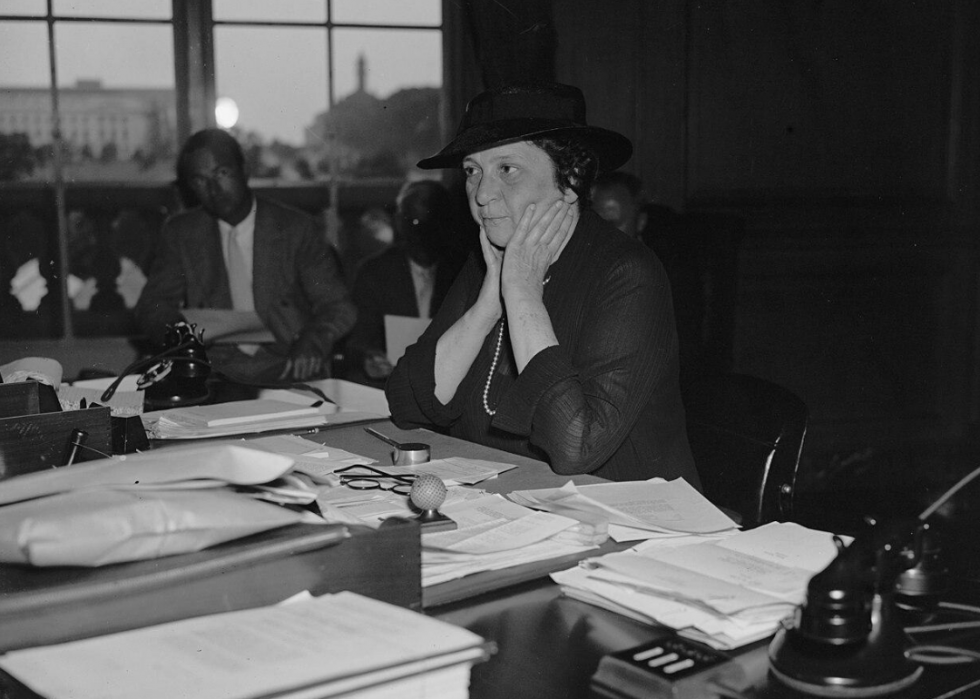
1933: First female Cabinet member is appointed
Frances Perkins spent the early days of her career working to improve the lives of disadvantaged people living in New York City, making her well suited to the position of . President Franklin D. Roosevelt appointed her to the post during the height of the Great Depression in 1933. As the first female member of a presidential cabinet, she pushed for the New Deal and spearheaded the creation of the Social Security program, one of Roosevelt's most important legislative achievements.
1934: First woman serves on board of directors of a major corporation
Lettie Pate Whitehead Evans married a wealthy man who struck a deal with the brand new Coca-Cola company to bottle their syrupy-sweet product. Her husband died young, leaving Evans to take over his share of the bottling empire, where as well as the company's success. When her branch of the company was bought out, she was appointed to the board of directors, a position she would hold for nearly 20 years. Lettie ultimately used her fortune to .
1935: National Council of Negro Women is founded
Disappointed by the lack of communication and cohesiveness between groups advocating for African American women's rights, Mary McLeod Bethune founded the National Council of Negro Women. In the decades since then, the Council has grown to represent more than 25 national organizations, and more than 4 million women have been associated with the organization.
1936: Wallis Simpson is Time's first female Person of the Year
Time's Person of the Year award has been given to an . Wallis Simpson, an American socialite, was the first. Her relationship with King Edward VIII took the world by storm, and the 1930s press was . Edward, who caused a scandal by courting Simpson while she was still married to her second husband, was told he couldn't marry her and keep the throne. He became the only British monarch to voluntarily give up the throne; the two married and lived together for the rest of their lives.
1937: First woman climbs the Adirondack High Peaks
Born and raised in New York's Adirondack Mountains, Grace Dolbeck Leach Hudowalski became the ninth person and first woman to in the mountain range between 1922 and 1937. She went on to start the Adirondack 46ers club alongside her husband, promoting the high peaks she loved and keeping track of others who managed to climb them. In 2014, the U.S. Board on Geographic Names officially renamed one of the peaks in her honour.
[Pictured: A view of some of the Adirondack Mountains high peaks.]
1938: First woman wins the Nobel Prize in Literature
Pearl S. Buck used her experience growing up in China with her missionary parents to fuel much of her writing career, which focused on the life of the peasant class in the country. Her most notable work was a family trilogy: "The Good Earth" (1931), "Sons" (1932), and "A House Divided" (1935), which propelled her to become the first female Nobel laureate in Literature.
1939: Kitty O'Brien Joyner is NASA's first woman engineer
Kitty O'Brien Joyner broke ground twice in 1939. After suing to be admitted into the University of Virginia's engineering program, she was the first woman to graduate from the program that year. The electrical engineering knowledge she gained let her blaze a new trail several months later when NACA, the predecessor to NASA, hired her. She worked there for decades, eventually , before retiring in 1971.
1940: First African American woman wins an Oscar
It took 12 years for the Academy Awards to acknowledge a nonwhite performer. Even when Hattie McDaniel won for her supporting role as Mammy in "Gone with the Wind"—making her to win an Oscar—she was from her costars, and the show's organizers had to fight for her to be allowed inside the venue. Though later audiences would take issue with McDaniel's stereotypical character, her win was still historic; another Black actor would not win an Oscar until 1964, and diversity in the Academy .
1941: Wonder Woman debuts
Wonder Woman female superhero to grace the racks of comic book shops across America, but her appearance in 1941 sparked an obsession that's lasted . Created by a psychologist, the Amazon woman was heavily influenced by feminism. In 2017, her enduring popularity made her the first female superhero to earn her own movie, alike.
[Pictured: One of many iterations of Wonder Woman, Lynda Carter, portraying Wonder Woman in the television series in 1975.]
1942: First woman is awarded Purple Heart medal
On Dec. 7, 1941, Annie G. Fox found herself to the chaos and numerous injuries caused by the attack on Pearl Harbour. The first lieutenant and head nurse of Hickam Field Hospital was awarded the Purple Heart for her work on Oct. 26, 1942, alongside several other army nurses. When the award criteria later changed to apply only to those injured in the line of duty, Fox was awarded in place of the Purple Heart in 1944.
1943: Women's Army Corps is created
The U.S. entered World War II at the end of 1941 and quickly found itself in need of soldiers. Women, who had in prior wars, were formally recruited for behind-the-scenes roles through the Women's Auxiliary Army Corps. By 1943, Congress from the name, and female non-combatants finally received the same benefits as their male counterparts. Men and women would remain in separate military units long after World War II, though, before finally integrating in 1978.
1944: French women win the right to vote
France fell behind many of its European counterparts in granting women the right to vote. Sixteen years after Britain finally enshrined equal rights at the ballot box, the newly liberated French government signed a law allowing women to cast votes.
French women in the federal government, though numbers after recent elections.
1945: Ireland's laundry workers go on strike
After , Ireland's laundry workers (who were almost entirely women) decided they were done putting up with the long hours and harsh conditions. The Irish Women's Worker Union , and after 14 weeks, they won the right to a second week of holidays every year for all Irish workers.
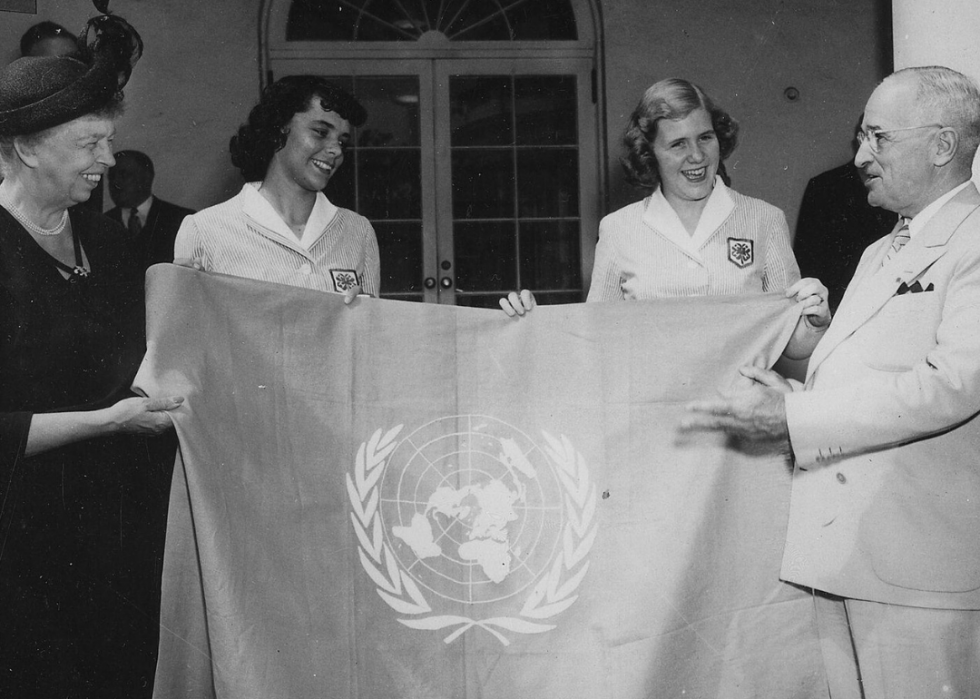
1946: UN establishes the Commission on the Status of Women
Soon after the United Nations was founded, it established the Commission on the Status of Women, with the sole purpose of promoting women's rights around the world.
The Commission's 15 female representatives first met in New York, and until 1962, they for women's rights, changing discriminatory language in different documents, and bringing awareness to women's issues to a worldwide audience.
1947: First woman wins a Nobel Prize in medicine
Alongside her husband, Gerty Cori became the in medicine and only the third woman in history to win the award in any category. The couple won for developing the Cori cycle, which explained how energy moves through different parts of the body. Though she could hold back her husband's career, Cori and her husband continued working together and went on to make further important biological discoveries.
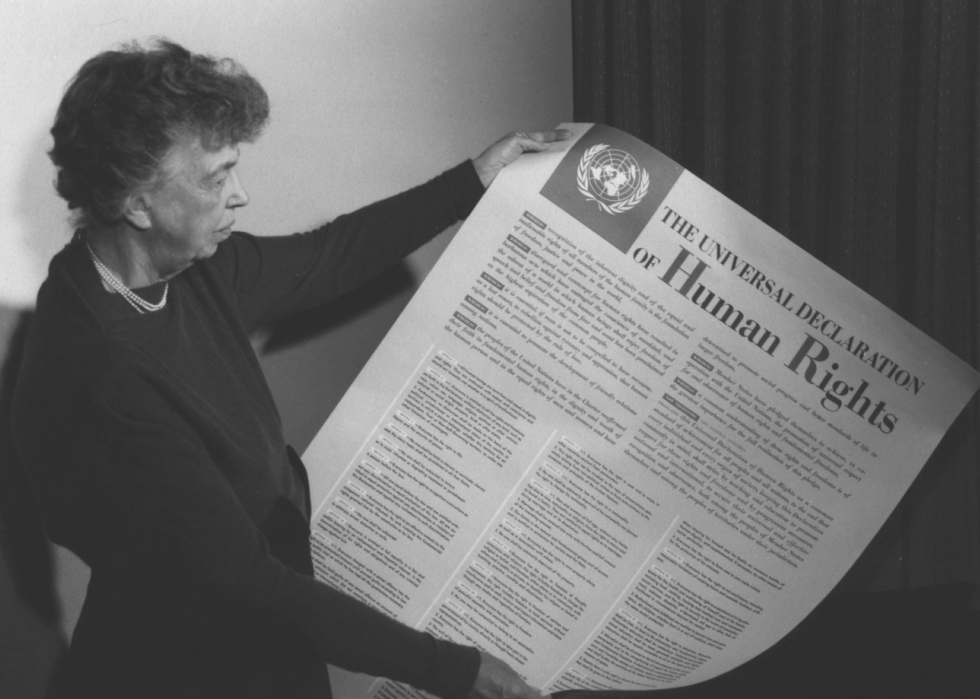
1948: UN Declaration of Human Rights debuts
The United Nation's historic Declaration of Human Rights was to explicitly state that both men and women should have their "dignity and worth of [their] human person" protected.
The Commission on the Status of Women was integral in the fight to make sure gender-neutral language was inserted into the document, which was adopted by the General Assembly on Dec. 10, 1948.
1949: 'The Second Sex' is published
In 1949, French essayist, political theorist, and intellectual Simone de Beauvoir published her most famous and influential work on the oppression of women. De Beauvoir attempted to explain why women are oppressed in society and argued that political advancements like the right to vote meant nothing to women who didn't have the means to support themselves in other ways.
Its English translation (published in 1953) was long considered deeply flawed, but that didn't stop the work for feminists and scholars around the world.
1950: First girl plays Little League baseball
At 13, Kay Johnston than to play Little League baseball. So she decided to sign up as a boy named Tubby. Even after revealing her identity, she played a successful season as a member of a team.
After that year, the "Tubby Rule" was put into place, barring girls from playing Little League under any circumstances. The rule was abolished in 1974, and since then, all the way to the Little League World Series.
[Pictured: A Little League baseball player sliding into home base safe.]
1951: Rosalind Franklin makes crucial DNA discoveries
James Watson and Francis Crick were credited with discovering DNA's double-helix structure, which won them a Nobel Prize in 1962, but they would not have been able to do so without the help of a pioneering female scientist.
Rosalind Franklin's allowed her to take clear pictures of DNA's structure. A male colleague who often disagreed with Franklin gave her photographs to Watson and Crick, and they formed the basis of their eventual model. Franklin never knew her work had been so integral to their discovery, as she died in 1958.
1952: Grace Hopper revolutionizes computers
A trailblazer throughout her life, mathematician and U.S. Navy Admiral Grace Hopper revolutionized how we use computers. After working on the Mark I computer during World War II, , where she and her team developed the compiler.
This device to write code in human-like language—instead of 1s and 0s—and was a precursor to the widely used COBOL programming language.
1953: First woman breaks the sound barrier
Jacqueline Cochran worked her way out of poverty to become one of the most successful female aviators of the 20th century. After obtaining her pilot's license in three weeks while also working as a cosmetics saleswoman, she took the aviation world by storm and Her most notable feat might be flying faster than the speed of sound (761.2 miles per hour), a speed she later doubled in 1964.
1954: UN Convention on the Political Rights of Women goes into force
The Convention on the Political Rights of Women became explicitly formed to protect and expand women's political rights. A total of 122 United Nations member states and the state of Palestine have since signed onto the document, parts of which formed the basis of later, protecting women's rights.
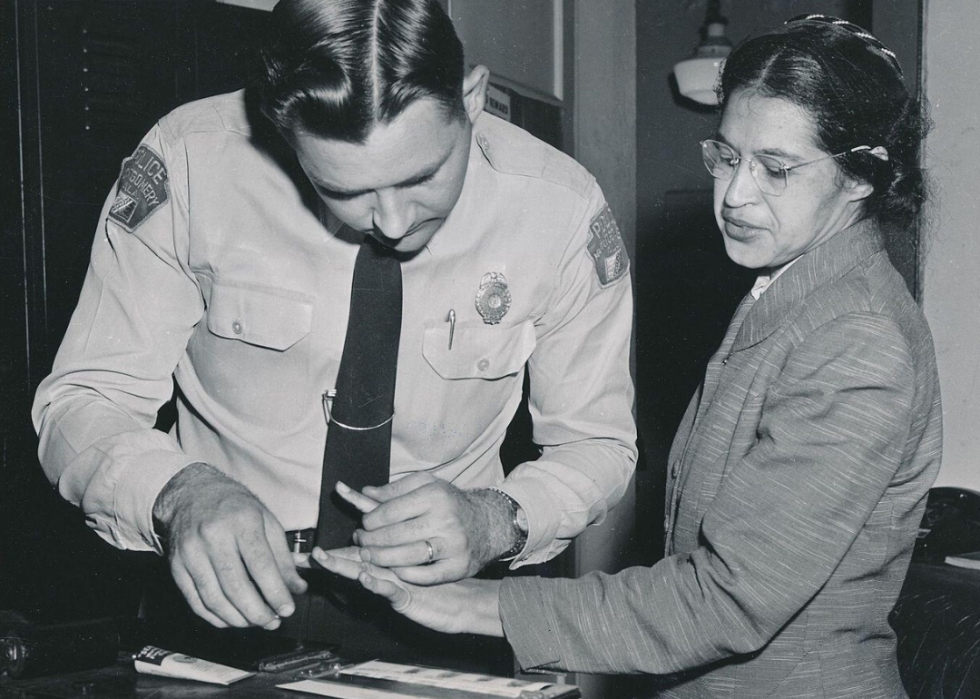
1955: Rosa Parks sparks Montgomery Bus Boycott
Rosa Parks' decision not to give up her seat to a white man on an Alabama bus changed the course of American history. The same day Parks was convicted of violating segregation laws, black community leaders, including Dr. Martin Luther King Jr., organized a boycott of the Montgomery bus system.
It would not end until the Supreme Court ruled bus segregation laws were unconstitutional. Parks subsequently became a symbol of the and continued her against inequality.
1956: Women march on Pretoria
In the 1950s, 小蓝视频 Africa's government passed new laws to limit the movement of African women in the country, with the goal of further entrenching the deep racial separation, also known as apartheid.
Thousands of women from across 小蓝视频 Africa marched on the capital city in protest of these laws, including key figures in the apartheid resistance movement. When the prime minister wouldn't meet with them, the women for 30 minutes before singing songs of protest and female empowerment.
[Pictured: A group of 小蓝视频 Africans demonstrates in Pretoria, 小蓝视频 Africa.]

1957: First television show built around a female protagonist airs
"Decoy: Police Woman" might be an all-but-forgotten relic from the early days of television, but it was groundbreaking as the first show to feature a female police officer and a female protagonist. the powerful female characters in "Alias" and "Law and Order" might not exist.
Shot on location in New York (another first), as a ballerina, model, and other aliases to catch criminals, doing her job without any discrimination from her male colleagues.
1958: First woman wins multiple Grammys
Ella Fitzgerald became a household name when she made her debut on the stage of New York's famous Apollo Theater in 1934. "The First Lady of Song" went on to become a jazz icon, and at the first , she took home Best Female Vocal Performance and Best Individual Jazz Performance.
She'd go on to win 13 awards over her 40-year career, capping off her Grammy success by becoming the first woman to win a Lifetime Achievement award.
1959: Tibetan Women's Uprising commences
The long struggle for Tibet to gain independence from China came to a head in the late 1950s, ultimately forcing the Dalai Lama to flee to India in exile. Tibetan women made their voices heard when they took part in a protest against the Chinese government on March 12, 1959. The women surrounded the Dalai Lama's home but were later arrested; .
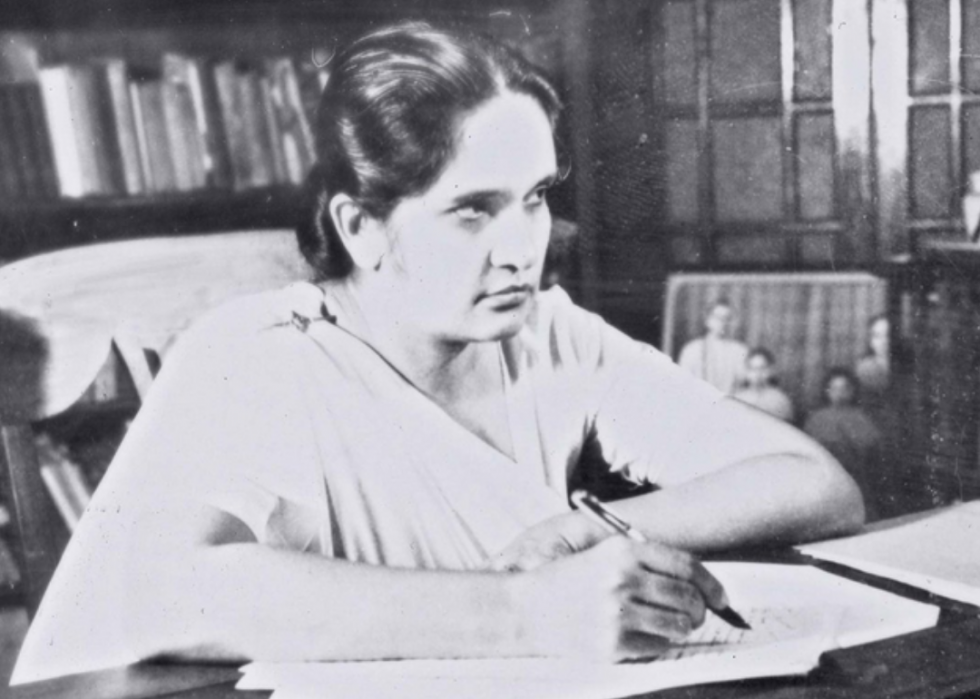
1960: Sri Lanka elects world's first female prime minister
When Sirimavo Bandaranaike won Sri Lanka's 1960 election, she became the first woman to hold the title without inheriting the position due to her birth. She was elected after her husband was assassinated the year before and continued implementing his socialist economic policies and promotion of Buddhist cultural practices in the country (then called Ceylon).
Bandaranaike stepped down in 1965, but returned in the 1970s to serve two more terms before at 84.

1961: India bans dowries
Dowries were a common custom in Indian culture ; a bride's parents would give money or other gifts to help their daughter start a new life, but the practice soon became more of a payment to the groom's family at the time of marriage, for the union. Unfortunately, the custom also led to violence against the women it hoped to protect. Sometimes a woman's husband or in-laws would attack her in hopes of getting a higher bride price. The 1961 Dowry Prohibition Act aimed to stop this violence against women by getting rid of the tradition, but it's been .
1962: Katherine Johnson helps send a man to space
In NASA's early days, African American women often worked as human computers, doing the necessary calculations for different projects by hand. In 1953, Katherine Johnson became one of them. By the 1960s, she was working on flight trajectory calculations and often double-checking the work done by electronic computers. Astronauts like John Glenn relied on her calculations to ensure a safe landing, contributions that were immortalized in the 2016 movie "Hidden Figures."
1963: Betty Friedan publishes 'The Feminine Mystique'
People often describe feminism as coming and historians often credit Betty Friedan's seminal book, "The Feminine Mystique," with helping spark the second wave. While the tome sold nearly 3 million copies, which allowed more women to think about, discuss, and discover the "problem with no name" shaping their lives for the first time. Friedan's writing gave a voice to the anger and repression many women were feeling.
1964: First woman of colour elected to Congress
Patsy Takemoto Mink became the first woman of colour elected to Congress in the House of Representatives in 1964. She served until 1977, advocating for the rights of women, immigrants, and children. Mink also worked hard to pass Title IX, which increased opportunities for women in education.
1965: Dolores Huerta directs a five-year strike
Working alongside fellow labor activist Cesar Chavez, Dolores Huerta co-founded the United Farm Workers Union in 1965 and quickly took the lead in negotiating contracts between the Coachella Valley grape growers and their employers. Five years later, she won a historic victory when 26 grape growers agreed to sign fairer contracts. Huerta continued to fight for the rights of farmworkers—as well as women and other Mexican Americans—and in those communities today.
1966: National Organization for Women is founded
On June 30, 1966, Catherine Conroy put a $5 bill on the table in Betty Friedan's hotel room and told the 15 other activists in the room to "." The National Organization for Women was founded at that moment, and it originally aimed to figure out how to enforce the Title VII section of the Civil Rights Act. NOW , but still uses grassroots power to advocate for women's economic, political, and social equality.
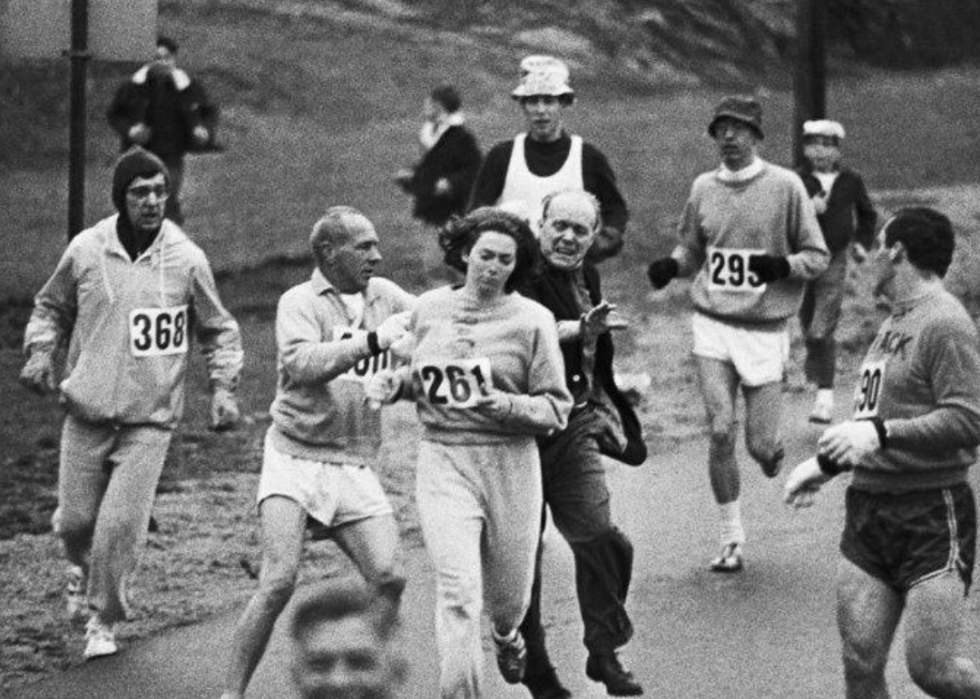
1967: First woman runs the Boston Marathon
At 19, Kathrine Switzer—who was unofficially competing with Syracuse University's men's cross-country team—told her coach she . After proving she could complete the 26-mile race, she registered for the marathon, which didn't technically have gender limitations. Though officials tried to pull her out of the race once she started, Switzer ultimately completed the run and spent years advocating for women to be officially allowed to enter.
1968: Miss America ignites 'bra burning' protests
Contrary to popular belief, during this Sept. 7, 1968, protest outside the Miss America beauty pageant. But 400 feminists did throw symbols of what they thought society used to oppress them—including bras—into a "freedom trash can" in protest of the pageant's support of what they saw as unattainable beauty standards.

1969: Nation's first 'no fault' divorce law passes
California's , adopted in some form by every other state by 2010, made it much easier to obtain a divorce. Instead of couples having to prove that their spouse wronged them in some way, one person's desire to leave a relationship became grounds for ending unhappy marriages. Advocates believed that , women were able to leave relationships they did not find fulfilling in a safer, fairer way.
1970: First woman plays American football
Patricia Palinkas joined alongside her kicker husband, beginning a short, but historic career as the first woman signed to a professional football team. As a holder for her husband, Palinkas only played a few games before deciding she'd rather do something other than hold the ball for someone else. Still, her short career impacted a generation of female athletes, who wouldn't see another woman in professional football until Katie Hnida in 2010.
[Pictured: Football players in 1971.]
1971: Reed v. Reed is decided
Reed v. Reed was a Supreme Court case that invalidated an Idaho law requiring a man to be chosen when an equally qualified man and woman were arguing over who should execute a will. As such, it is a for the legal rights of American women. For the first time, the Supreme Court ruled that the Equal Protection clause of the 14th Amendment applied to discrimination against women. This established a stricter standard for sex discrimination and set a precedent for others——to argue more cases on gender discrimination.
1972: Title IX goes into effect
Title IX is part of a larger education reform act that requires gender equality for boys and girls in any education program that receives funding from the federal government. This applies to college athletics, sexual assault and harassment, employment, financial aid, and more. Title IX has been subject to a number of controversies since it was passed, most recently , even as schools continue to work toward gender equity.
1973: Roe v. Wade is decided
One of the most well-known and controversial , Roe v. Wade established a woman's right to an abortion at any time during the first three months of her pregnancy, and, with some restrictions, in later trimesters as well. In the decade since the decision, the battle over abortion and reproductive rights has been among the most heated in American politics.

1974: Women earn the right to open their own credit cards
Before Congress , banks made men co-sign when a single, widowed, or divorced woman wanted to open a credit card, no matter how much she made. The new law made it illegal to discriminate based on gender, race, or national origin when issuing credit cards, giving women more independent access to money. Studies today are paying more for their credit cards.
1975: Icelandic women go on strike
The women of Iceland were tired of 小蓝视频 paid less than men and not seeing women in government. So on Oct. 24, 1975, didn't go to work, care for their children, or do any housework; instead, 25,000 marched in the streets of the capital city. The rousing turnout led to some changes, and Iceland's first female president was elected five years later. Iceland, the country where the is highest in the world, is now considered one of the , and it is currently working on within five years.
[Pictured: Iceland's first female president, Vigdis Finnbogadottir, in 1980.]
1976: First class of women enters West Point
American women worked alongside men in wars throughout the country's history, but on July 7, 1976, 119 female cadets at West Point. Sixty-two would graduate in the class of 1980, completing their training as future military officers.
1977: First woman wins an EGOT
Actress Helen Hayes—the first woman to win an Emmy, Grammy, Oscar, and Tony Award—started on the stage at age 8 and went on to have a Tony-winning Broadway career spanning decades. She also picked up an Oscar in 1931 for her performance in "The Sin of Madelon Claudet" during a brief stint in Hollywood. After in the 1970s, she starred in several TV shows and took home a Grammy in 1977 to finish her sweep.

1978: Pregnancy Discrimination Act passes
some employers refused to hire a woman if she was pregnant, while others commonly refused to promote or give raises to pregnant women for fear they'd soon quit and stay home with their families. The law protected the rights of women who also wanted to have children, but working mothers are still not treated equally to their male counterparts; studies have found increases when women start families.
1979: UN adopts the Women's Bill of Rights
The United Nations' Commission on the Status of Women netted another huge win for women's rights the Convention on the Elimination of All Forms of Discrimination against Women (CEDAW) on Dec. 18, 1978. The most comprehensive document the office has produced to date, the treaty , lays out clear steps on how to achieve it, and requires countries that sign CEDAW to actively work for women's rights.
1980: First democratically elected female president takes office
Five years after a women's strike brought Icelandic society to a halt, citizens elected their first female president, the first democratically elected female president in the world. Vigdís Finnbogadóttir's 16-year-long presidency put her in a , but she enjoyed actively promoting her country abroad. After her victory, Icelandic women's representation in their government of any country without a quota system, and Iceland is now one of the most gender-equal countries in the world.
1981: First woman is appointed to the Supreme Court
Even though Sandra Day O'Connor graduated third in her class (and a year early) from Stanford Law School, the Texas-born lawyer struggled to overcome gender discrimination and find work in her field. She eventually earned her way into the courtroom, then began a career in Texas state politics. In 1981, President Ronald Reagan and the Senate confirmed her unanimously. Before her retirement in 2006, O'Connor was known for defending women's rights from the bench, even blocking a case that would have overturned Roe v. Wade.
1982: First African American principal ballerina leads a U.S. company
When Debra Austin joined the Pennsylvania Ballet as its principal dancer, she became the first African American woman to lead a major American ballet company. Others have attributed the title to Lauren Anderson, who rose to the same position in Houston the same year Austin retired in Pennsylvania. In an art form that has , both women were history-makers and positive influences for aspiring ballerinas today.
[Pictured: Ballet Dancer Lauren Anderson, arriving at ABC's "Scandal" 100th Episode Celebration on April 8, 2017, in West Hollywood, California.]
1983: Sally Ride becomes first American woman in space
The U.S. might have won the Space Race by putting a man on the moon, but the Soviet Union put the first woman in space in 1963, two decades before the Americans managed the feat. Of course, that doesn't make Sally Ride's trip to the stars any less monumental. As the first American woman and youngest astronaut to go to space, and worked to promote women in science long after she hung up the space suit for good.
1984: First woman is selected VP candidate for a major political party
Geraldine Ferraro's career as a lawyer in New York, and later as a leading Democratic politician, was marked by her . She established a special victims unit as an assistant district attorney in Queens and kept her seat in a conservative New York House district despite her progressive voting record.
Ferraro's ambition helped her climb the party ranks before she became Walter Mondale's running mate in his 1984 presidential campaign against Ronald Reagan. Reagan was re-elected in a landslide, but Ferraro remained an important voice in party politics until her death in 2011.
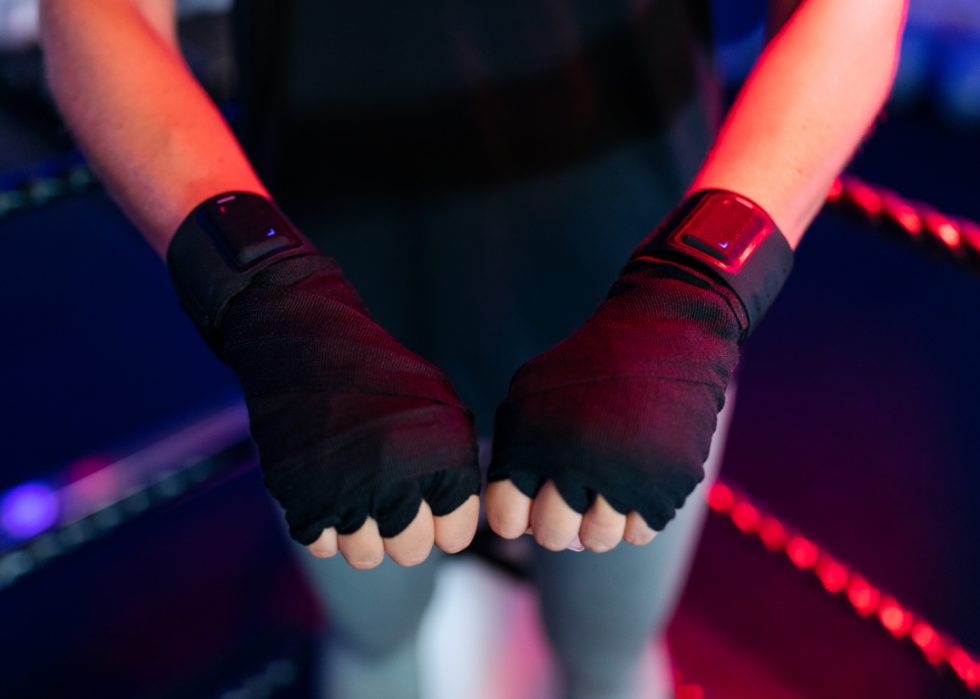
1985: Guerilla Girls forms
The Guerilla Girls were formed in New York City by anonymous female artists and racism holding back women and people of color in the art world. Wearing gorilla masks and going by the names of famous deceased female artists, the collective still works today to reveal "gender and ethnic bias, as well as corruption in politics, art, film, and pop culture" to the wider public.
1986: Oprah becomes first woman to own and produce her own talk show
After overcoming an abusive childhood, a young Oprah Winfrey . Later, she landed her own chat show in Baltimore, Maryland which eventually became the area's #1 show. She went on to star in Steven Spielberg's 1985 adaptation of "The Color Purple," and Oprah used that success to launch a nationally syndicated talk show. Running until 2011, the program turned Oprah into a household name. She now runs the OWN TV network.
1987: First woman inducted into the Rock & Roll Hall of Fame
Aretha Franklin, the Queen of Soul and one of the most powerful singers of modern music, received the r-e-s-p-e-c-t her talent deserved when she became the first woman inducted into the Rock & Roll Hall of Fame. One of the , her induction opened doors for other black female musicians. More than half of the 50-plus women inducted after Franklin.
1988: Switzerland establishes Federal Office of Gender Equality
Swiss civil law that women's roles were as traditional homemakers until 1988. That year, new changes went into effect that wrote gender equality between the sexes into law and established the Federal Office of Gender Equality to enforce the mandates. Though it has struggled at times, FOGE 2018 United Nations Public Service Award due to its ongoing commitment to ensuring equal pay in Switzerland.
1989: First woman receives IBM fellowship
IBM offered Frances E. Allen a job , and she spent years developing more efficient coding languages. After decades of work, she was the first woman to , a prestigious program honouring the company's best employees. Her gifts as a computer programmer won her recognition throughout her career; she was also the first woman to win , the computer science equivalent of a Nobel Prize.
1990: First female president of the Americas is elected
Violeta Chamorro's history-making term as of the Americas might not be the most interesting aspect of her life. Living in war-torn Nicaragua, opposed to the government and used the power of the press to call for peace and democracy. By 1988, she was a prominent opposition leader and she easily won the presidency at the conclusion of a war which she is credited with helping to end.
1991: Anita Hill testifies before the Senate
Clarence Thomas' nomination to the Supreme Court was controversial before Anita Hill came forward with allegations of sexual harassment, as many wondered if he was qualified for the job. But while she was his assistant changed the tone of the hearings, and her tense questioning by the Senate Judiciary Committee—all white men—that October proved to be a historic moment. Thomas was still confirmed, more women to run for office the next year, sparked new conversations about sexual harassment, and is sometimes credited with starting third-wave feminism.
1992: Junko Tabei finishes climbing the Seven Summits
Japanese climber Junko Tabei became the first woman to summit Mount Everest in 1975 as part of of climbers, but even climbing the world's tallest mountain couldn't sate her desire for adventure. , she reached the top of the Carstensz Pyramid in Indonesia and became the first woman to reach the top of the Seven Summits, the highest mountains on every continent. Before her death in 2016, she climbed the highest peaks in 79 countries and blazed trails for other women along the way.
1993: Family Medical Leave Act becomes law
The Family Medical Leave Act of unpaid time off to certain employees dealing with particular medical situations and guarantees their job will be there upon return. This was a huge win for working moms, who previously had no guarantee that they'd be able to take time off to recover after giving birth. Still, many women can't afford to take three months off work without pay, and the U.S. remains that doesn't give new parents paid family leave.
1994: Violence Against Women Act passes
The Violence Against Women Act was a landmark bill that gave new attention to issues faced by women including stalking, intimate partner violence, and sexual assault. The bill created the Office on Violence Against Women, administered grant programs to state and local governments to open new shelters and information centers, and required the government to study these issues. It's been reauthorized three times but lapsed . The House of Representatives approved its reauthorization in early 2021, despite 172 Republicans voting against it.
1995: Fourth World Conference on Women commences
Then-First Lady Hillary Rodham Clinton gave her famous "" speech at this United Nations conference, which saw tens of thousands of activists convene in Beijing, China, to discuss issues of women's rights. The conference produced , reaffirming commitments to women's rights and laying out new plans of action for achieving them that still serve as guidance for leaders and activists.
1996: United States v. Virginia is decided
Virginia Military Institute was an exclusively male college until it was sued by the federal government, which argued that its gender-exclusive admissions policy was unconstitutional. The school proposed that, instead of letting women enter, it would establish a separate, all-female school. The court disagreed in a 7-1 decision—Clarence Thomas sat the case out, as his son was a student at VMI—arguing that the school didn't show " for the policy and wouldn't offer women in the new school the same opportunities as men.
1997: First female secretary of state joins Cabinet
Before in 1997 by the Clinton administration, she worked on President Jimmy Carter's National Security Council, taught foreign affairs at Georgetown, and spent several successful years as the U.S. representative to the United Nations. With this experience under her belt, Albright pursued an active foreign policy, visiting North Korea, encouraging sanctions against Iran, and more. Her term ended once George W. Bush was elected president, but she remained enmeshed in politics and foreign policy debates.
1998: Senegalese mothers end female circumcision in their villages
Procedures that require men to be circumcised at birth are more familiar in the U.S., but some cultures require young girls to undergo a similar treatment in order to enter adulthood. A , female genital cutting became a topic of debate in the international rights community in the late 1990s. It was common in the small Senegalese village of Malicounda Bambara decided to put an end to the practice. They educated others on the harm female circumcision caused young girls, and the village and those around Malicounda Bambara decided to abandon the practice, inspiring 5,000 other villages in the country to do the same.
1999: Google's first female engineer gets to work
Google only hired 19 employees at its start, but among them was its first female engineer, Marissa Mayer. As the company became the technology behemoth we know today, she to become the head of Google's successful Maps and Location Services. In 2012, Mayer became the CEO of for several years before stepping down in 2017 amid accusations of mismanagement.
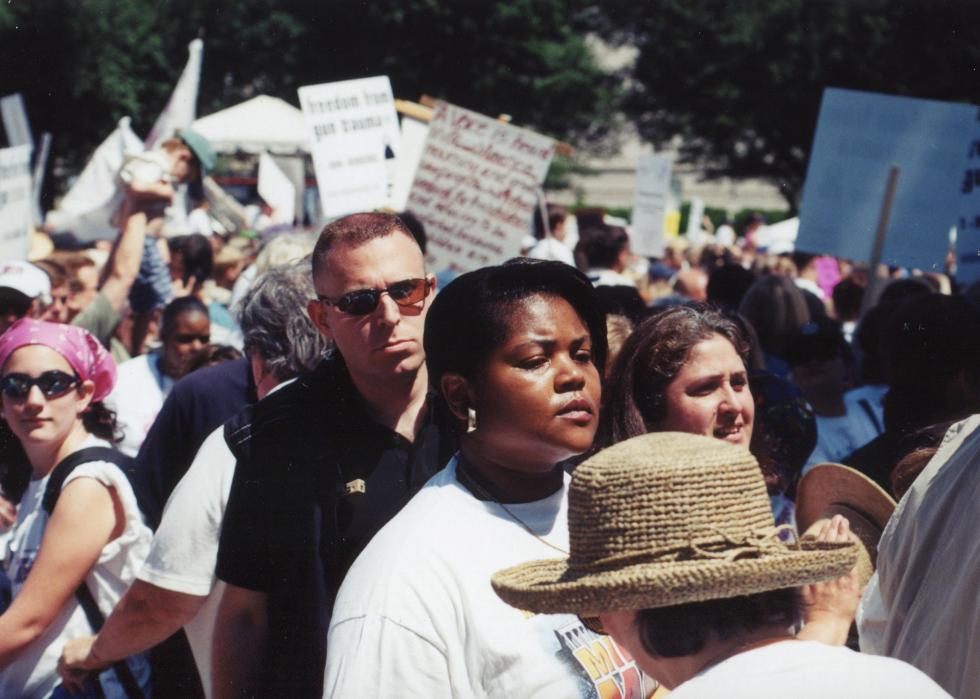
2000: Million Mom March commences
In a true an estimated 750,000 people marched in Washington D.C. on Mother's Day to protest gun violence and advocate for stricter gun control reforms. Donna Dees-Thomases had watched news coverage of a shooting and created a website hoping to rally other moms horrified by the carnage they were seeing. The march was organized entirely by word of mouth and led to around the country advocating for gun control.
2001: Take Back the Night Foundation forms
Take Back the Night got its start in two unrelated marches: one in Philadelphia in 1975 and another in Brussels in 1976. Participants marched down streets with candles, protesting increased violent crime against women. In the years since then, the movement became more focused on issues of sexual assault, and in 2001, Katie Koestner—who had publicly shared her own story of 小蓝视频 assaulted on campus—created the . Today, the foundation provides resources to survivors and holds annual marches on college campuses.
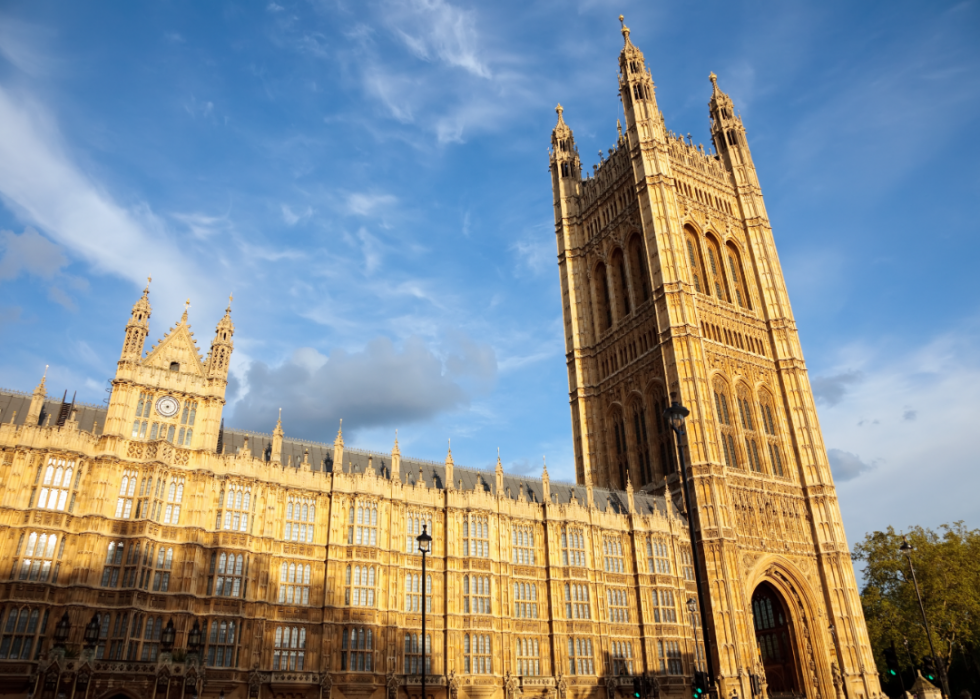
2002: U.K.'s Sex Discrimination (Election Candidates) Act passes
In 2001, the number of women in the British parliament declined for the first time in two decades, after a policy used by one party to ensure half their candidates would be women was declared unconstitutional. The Labour Party changing laws that would allow parties to use "positive discrimination" to ensure that more women would have their voices heard in Parliament; this promise eventually became the 2002 Sex Discrimination (Election Candidates) Act.
2003: Women of Liberia Mass Action for Peace ends a civil war
A second civil war broke out in Liberia in 2000, a bloody conflict that killed 200,000 people by the end of its second year. As it continued into 2003, social worker Leymah Gbowee brought together women from her church in protest, spawning a movement that quickly grew to include women of all faiths in the country. Women marched in the streets, withheld sex from partners fighting in the war, and continued nonviolently protesting. By the end of 2003, their efforts helped begin a peace process.
2004: March for Women's Lives takes place
The April 25, 2004, March for Women's Lives capped off a year of planning by seven diverse women's activist groups, creating one of largest marches in the abortion debate in U.S. history. Their effort march in Washington to abortion, birth control, more comprehensive reproductive health care, and improved sex-ed programs while protesting policies they ."
2005: Kuwait's Blue Revolution secures women's suffrage
Women of Kuwait in their decades-long struggle over the right to vote. From 2002 until their May 2005 triumph, activists used nonviolent protest in a final push, protesting outside voter registration centers and casting fake ballots. Activists often protested wearing light blue clothing, representing associated with a colour to signify international solidarity in the fight for human rights that peaked in the late 1990s and early 2000s.
2006: Iran's One Million Signatures campaign ends polygamous marriage
Iranian women hatched . To get the government to reform laws that discriminated against women, they would get 1 million Iranian citizens to sign a petition asking Parliament for equal rights including marriage and divorce rights, an end to polygamous marriages, equal inheritance rights, equal rights to testimony in the country, harsher punishments for honour killings, and more. The two-year campaign never reached its million-signature goal but did manage to put an end to polygamous marriages.
[Pictured: Iranian women's activist Parvin Ardalan, head of the One Million Signatures Campaign.]
2007: First woman Speaker of the House takes the gavel
The 2006 midterm elections in the United States swept huge majorities of Democrats into Congress, and California representative and party leader Nancy Pelosi was subsequently named . With her powerful new position, Pelosi of some of President Barack Obama's key legislative victories, including the economic stimulus and the Affordable Care Act. She ceded the gavel in 2011 when Republicans regained a majority, but she returned to the position starting with the 2019–2020 congressional session, during which she oversaw both impeachments of former President Donald Trump.
2008: Rwanda becomes first country with majority-female legislature
The 2003 Rwandan Constitution reserved 30% of the seats in its decision-making bodies for women. In 2008, Rwanda's female politicians claimed those seats and then some, winning 56% of parliamentary seats after elections where most of the winning women . Rwanda became the where women held the majority in the legislature that year, and the country . By 2013, 64% of members of Rwanda's parliament were women.
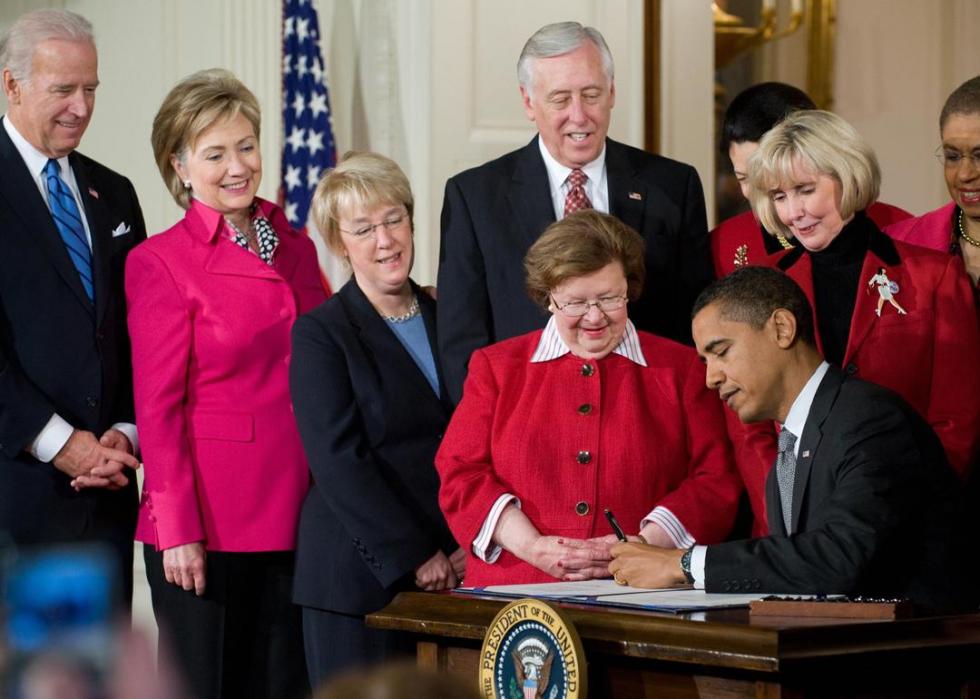
2009: Lilly Ledbetter Fair Pay Act is signed into law
After years of fighting for equal pay, women, as of , still make, on average, 82 cents for every $1 a man makes. The Lilly Ledbetter Fair Pay Act, signed by President Obama in January 2009, within 180 days of their most recent paycheck rather than from their first paycheck on the job. The law was named after Goodyear employee Lilly Ledbetter, who was awarded $3.3 million after discovering she made less than a male manager.
2010: First woman wins Oscar for Best Director
Kathryn Bigelow took home two of the Oscars' biggest prizes—Best Director and Best Picture—for "The Hurt Locker," a dramatization of the Iraq war. for her tight, suspenseful action sequences and realistic depictions of soldiers at war, she bested a cadre of well-known male directors (including her ex-husband, "Avatar" director James Cameron) and that women can only be successful in directing films about women.
2011: Saudi Arabian women protest driving ban
Saudi Arabia was the last country in the world that prevented women from taking the wheel. But in 2011, Saudi women's rights activists used social media of this rule and grabbed the world's attention. They made some headway—one female driver was given a ticket rather than 小蓝视频 arrested when she was pulled over—and
2012: UN passes resolution to ban FGC
Female genital cutting is a in many countries that affects an estimated 100 to 140 million women and girls around the world.
Ending FGC has become a key issue for human rights advocates internationally, and on Dec. 20, 2012, they scored a huge win in the United Nations when the General Assembly the practice. It set Feb. 6 as the International Day of Zero Tolerance, but the practice persists because the UN has no way to enforce it.
2013: Pentagon announces end to ban on women in combat
The formation of the Women's Auxiliary Corp in the 1940s marked the first time women could officially serve in the U.S. military in some capacity, but even as more roles opened, women were still banned from direct combat. The Pentagon the final official barrier for women in the military in 2013, in an effort seemingly driven by the military itself. It went .
2014: Malala Yousafzai wins the Nobel Peace Prize
Pakistani teenager Malala Yousafzai had been an advocate for girls' education from a young age, but she at the age of 15 when she was shot in the head by the Taliban for her outspokenness. Yousafzai gave at the United Nations on her 16th birthday, stating, "We cannot all succeed when half of us are held back." In 2014, she became the youngest winner of the Nobel Peace Prize, and in 2020 from Oxford University.
2015: Emma Sulkowicz carries her mattress across campus
Columbia University senior Emma Sulkowicz's , "Mattress Performance (Carry That Weight)," became a flashpoint in the ongoing conversation about sexual assault on college campuses. Sulkowicz—who uses they/them pronouns—carried a dorm mattress from September 2014 to May 2015, using art as a way to protest the school's failure to remove the student that allegedly sexually assaulted them from campus.
Since then, they've to bring attention to issues of sexual violence and harassment while universities continue to grapple with an issue that affects .
2016: Hillary Clinton becomes first female presidential candidate for a major party
Eight years after losing the 2008 Democratic presidential primary to Barack Obama, former First Lady Hillary Clinton wrote her own name into the history books when she beat Bernie Sanders to win the 2016 Democratic nomination. Gender ; the showing Donald Trump making lewd comments about women made Clinton the clear favorite for many in the campaign's final days. The 2016 election saw the in history.
2017: #MeToo movement takes off
In October 2017, and released stories detailing horrific allegations of sexual assault against Hollywood mogul Harvey Weinstein and a pervasive culture of sexual harassment in the entertainment industry. A few days later, actress Alyssa Milano reignited the #MeToo movement in 2006, encouraging women to share their stories.
2018: Record-breaking number of women are elected to Congress
1992 was America's after Anita Hill's Senate testimony inspired record-breaking numbers of women to run for—and win—seats in Congress. Donald Trump's presidency, the #MeToo movement, and Christine Blasey Ford's Senate testimony about an alleged assault by Supreme Court nominee Brett Kavanaugh were among the factors that drove , as well as
2019: First all-woman spacewalk
In late October 2019, ; only this time, the space station assembly support marked the first all-woman spacewalk.
Although the milestone wasn't intentionally planned, NASA explains, "It was bound to happen eventually because of the increasing number of female astronauts," and that "the agency looks forward to putting the first woman and next man on the moon by 2024." Meir and Koch replaced a battery unit that had failed to activate on the exterior of the station, and their achievement is the latest shining example of women influencing and leading an industry historically controlled by men.
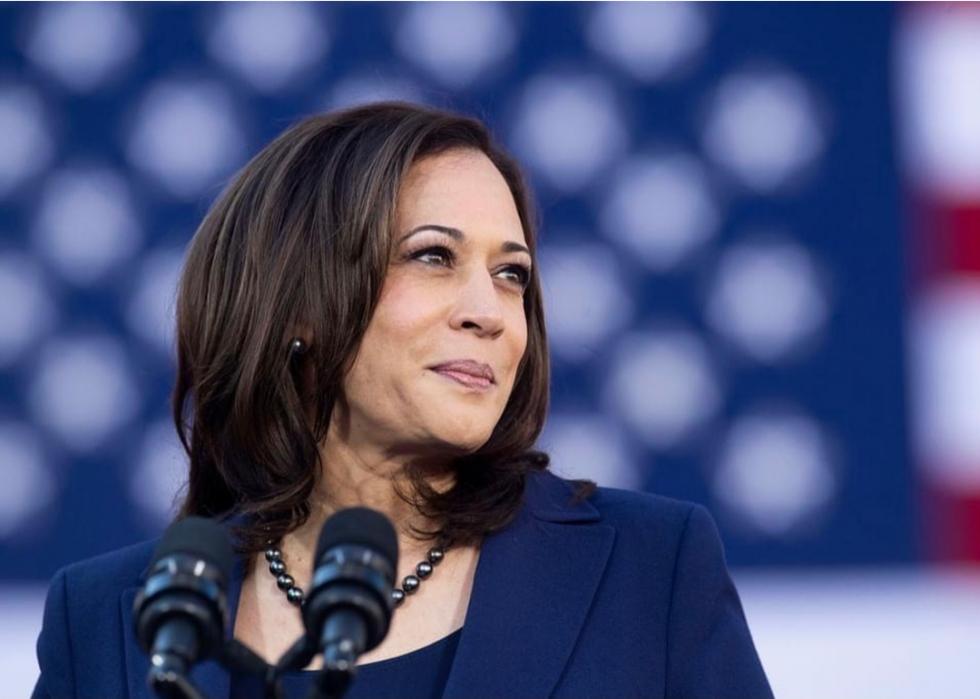
2020: First woman elected US vice president
Kamala Harris made history on several major fronts in 2020 when she was elected vice president of the U.S. Born to an Indian mother and a Jamaican father, Harris is not only the first woman to become vice president, she is also the first Black American and the first 小蓝视频 Asian American to win the vice presidency. In her , Harris said, "While I may be the first woman in this office, I will not be the last. Because every little girl watching tonight sees that this is a country of possibilities."

2021: Most gender-balanced Olympics in history
The Tokyo 2020 Olympic and Paralympic Games, rescheduled to summer 2021 because of COVID-19, commenced on July 23 with the first-ever gender-balanced Olympics. Nearly . Primetime coverage of the games was also distributed equally between women and men.
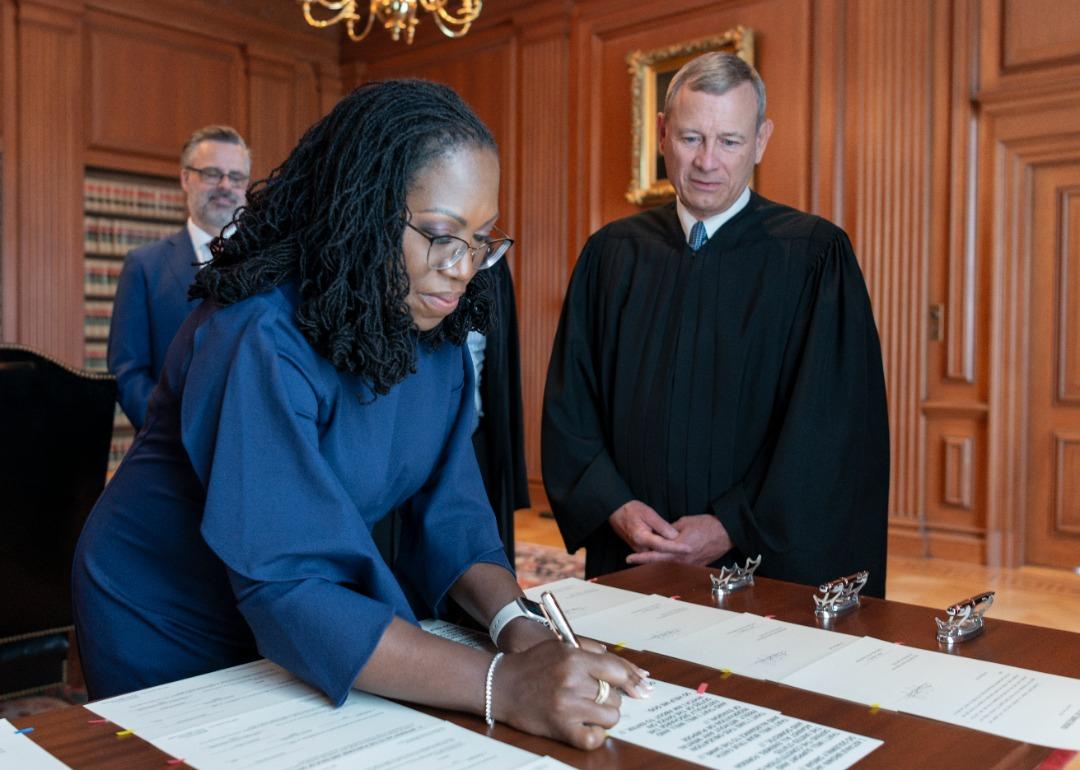
2022: Ketanji Brown Jackson becomes first African American woman to serve on US Supreme Court
For 232 years, no African American woman had served on the U.S. Supreme Court. That changed in June 2022 when Justice Ketanji Brown Jackson was sworn in, becoming the 116th Supreme Court Justice and the first African American woman to hold the position. Jackson was nominated by President Joe Biden earlier that year and was confirmed by the U.S. Senate by a 53-47 vote largely down party lines.


